Markha Valley Trek
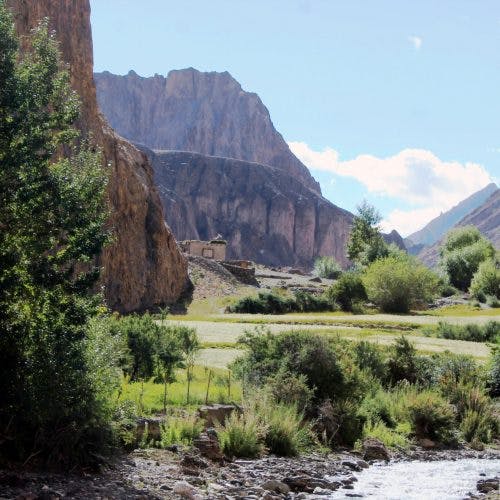
Can You Help Us With Photographs Of This Trek?
We are looking to enrich this documentation with more photos. Pictures go a long way in explaining the trail, more than words ever can. If you have done this trek, can you share your photos with us? We will include them on this page, with due credit to you. Click here to contribute .

A Charming Tea House Trail In River Valley Of Ladakh
Set in the arid cold desert of Ladakh, Markha is a stunning river valley in Hemis National Park. The trek through Markha Valley is very picturesque and full of adventure.
The trek involves many river crossings, some waist-deep, along with taking you to a hight of 17,060ft while crossing the high pass of Kongmaru La. The trail offers some outstanding views of Mt Kang Yatse (21,300 ft). There are also incredible rocky canyons along the trail, as well as plenty of wildlife.
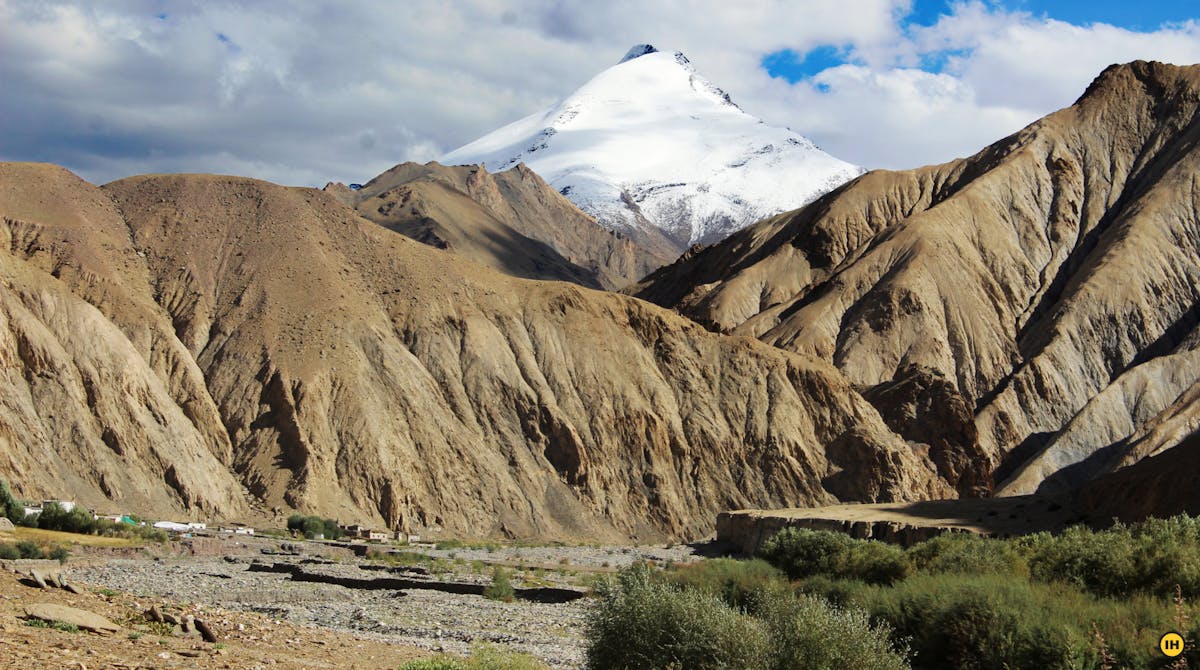
Grand views of Kang Yatse from Markha Valley. Photo by Manoj MN
The most charming bit of this trek however is the lovely villages of Markha Valley. The humble mud houses set amidst lush green fields are a spectacular sight in the middle of the barren mountains of Ladakh. Tibetan culture thrives in these villages, with traditional ornamented kitchens and Buddhist prayer flags, among other things Tibetan.
The best part of it is that you can stay in such lovely homes throughout the trek. There are village homestays all throughout the trail which make Markha Valley one of the few tea-house treks in India. This makes the trek a very rewarding experience, without the logistics involved in camping.
If you are in Ladakh for a short while and can do only one trek, this would be the ideal choice.
What to Watch out for
First view of Kang Yatse on Day 3 You get your first view of Kang Yatse on Day 3, as you start trekking towards upper Markha valley. As you climb up from Umlung, you see the near perfect pyramid peak of Kang Yatse towering over everything else. It is a magical sight. The mountain is a silent companion on your trek until you cross Kongmaru La pass.
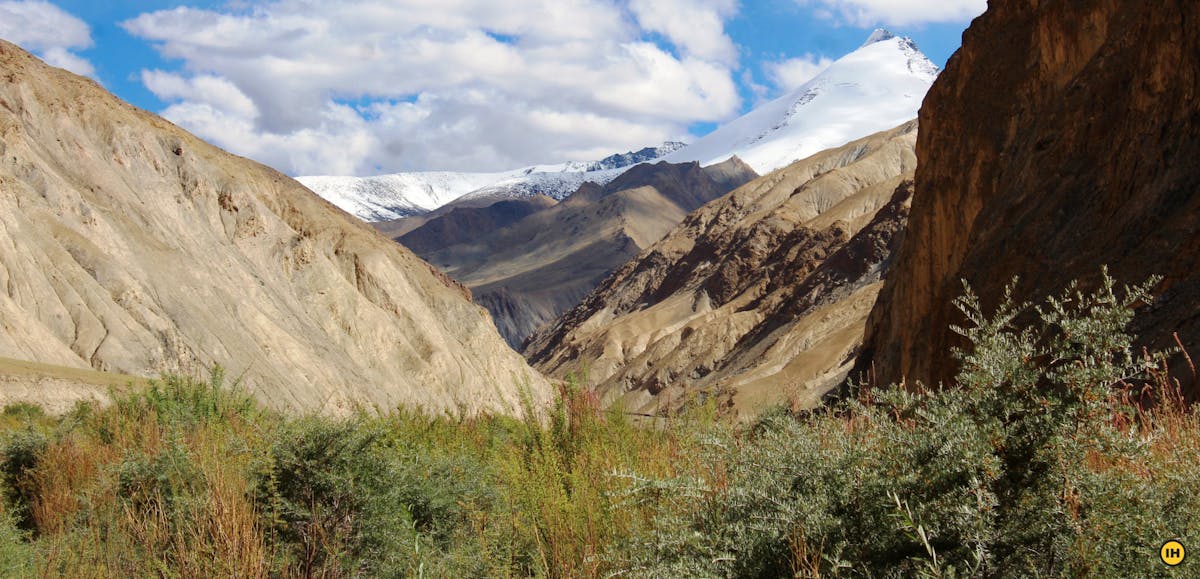
The first view of Kang Yatse from the trail. Photo by Manoj MN
The villages of Markha and Hankar
The villages of Markha and Hankar are a rare sight - lush greenery in the middle of a barren, high-altitude desert. The contrast between the dry desert mountains guarding a precious oasis of green civilization is striking. While Markha is one of the biggest villages you would find on the trek, Hankar is more of raw, isolated beauty.
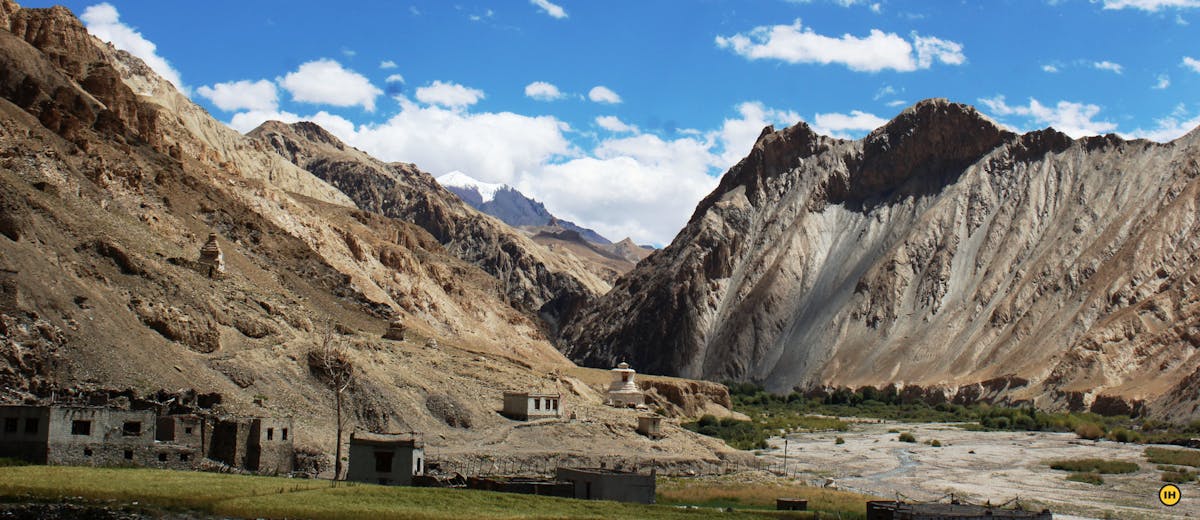
The Markha village is one of the largest villages in the valley. Photo by Manoj MN
The view from Kongmaru La
The view from the top of Kongmaru La pass is a reward for the grueling climb up to it. On a clear day, you get the first view of the Indus valley and Ladakh ranges from here. And then you turn around to see Kang Yatse is still there, watching over you. It is a magnificent sight!
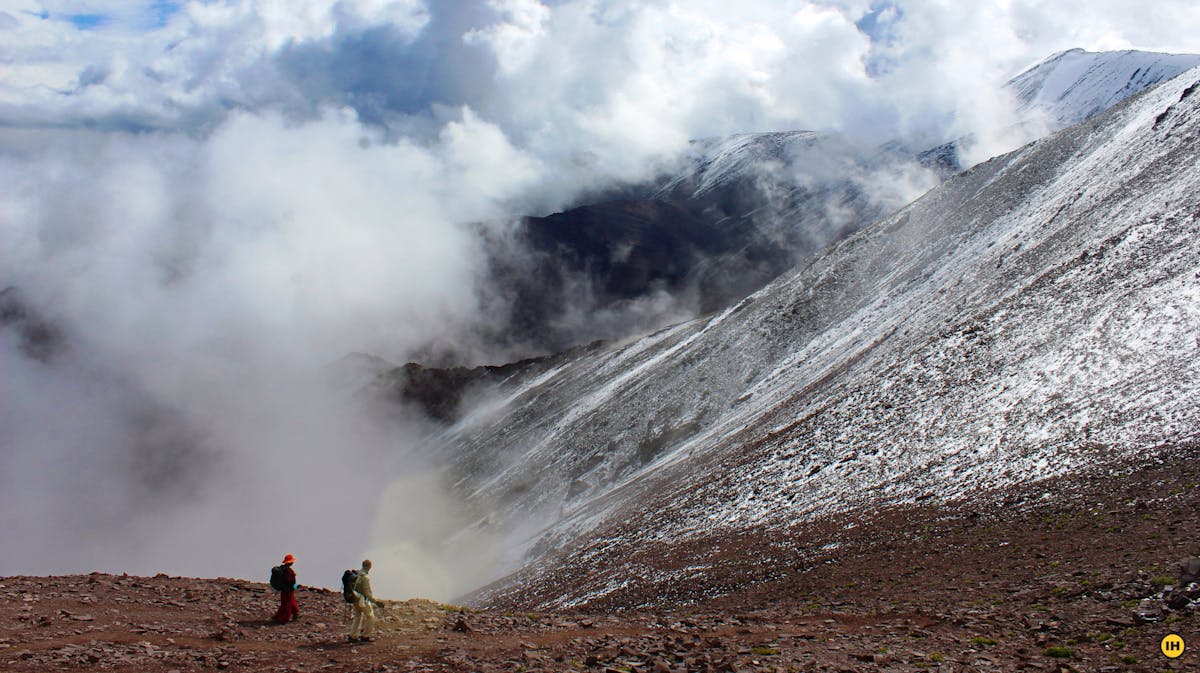
The view from Kongmaru La. Photo by Manoj MN
- Markha Valley trek is also known for being a ‘tea house trek’ where one can expect accommodation in parachute tents at most of the village en route.
- Apart from the striking contrast of trekking in an arid cold desert valley, you get an outstanding view of the Ladakh and Zanskar ranges, the 21,000 ft Kang Yatse and the 20,086 ft Stok Kangri peaks.
- The trek goes inside a beautiful Hemis National Park.
- Some exciting waist-deep river crossing sections on the Markha River to trails going across interesting Buddhist villages and rocky canyons are some of the features that give this trek a unique fervor.
- With close proximity to Leh, which is one flight away from most Indian metropolitan cities, the Markha Valley Trek can be something any traveler to Leh could definitely consider doing.
Trail Information
There are 3 different starting points for this trek- Stok, Spituk and Chilling. Spituk is the most popular starting point. From the Spituk side however you gain altitude very rapidly to Ganda La (over 5,000 ft in two days) before descending sharply to Skiu. Starting from Chilling offers a much easier approach, as you join the trail at Skiu and gradually gain altitude.
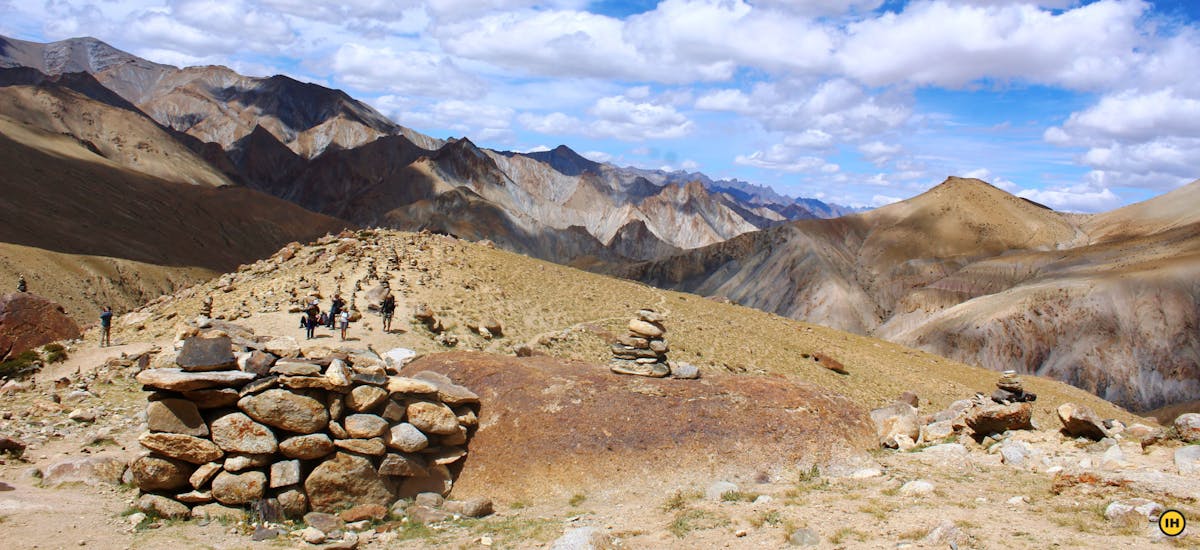
The stunning landscape of Ladakh. Photo by Manoj MN
This itinerary is for starting the trek from Chilling. If you are physically in good shape and well acclimatized, you can choose to start from Spituk or Stok as well. While the best views on this trail are arguably from Markha up to Kongmaru La, starting from Spituk gives you the opportunity to cross two high passes.
Day 1: Leh – Chilling – Skiu
Altitude: 11,560 ft – 10,490 ft – 11,160 ft
Distance: 60 km drive, 7 km trek
Duration: 2 hours drive, 2-3 hours trek
Chilling is the point where Markha river drains into the mighty Zanskar river. It is also the nearest road head for starting the trek.
If you are in a group hiring a taxi would be your best bet (Rs. 3000) since buses from Leh to Chilling run only twice a week. You can also try to get a seat on one of the vehicles heading to Chilling. Many tempo travellers take tourists to Chilling for Rafting tours, if you are lucky you should be able to buy a seat or two by getting in touch with a travel agent.
Once at Chilling, begin by crossing the Zanskar river using the trolley bridge. Crossing the mighty river sitting on the trolley is a fun way to kick things off. Recently a bridge has been constructed here so that is another option for crossing the river.
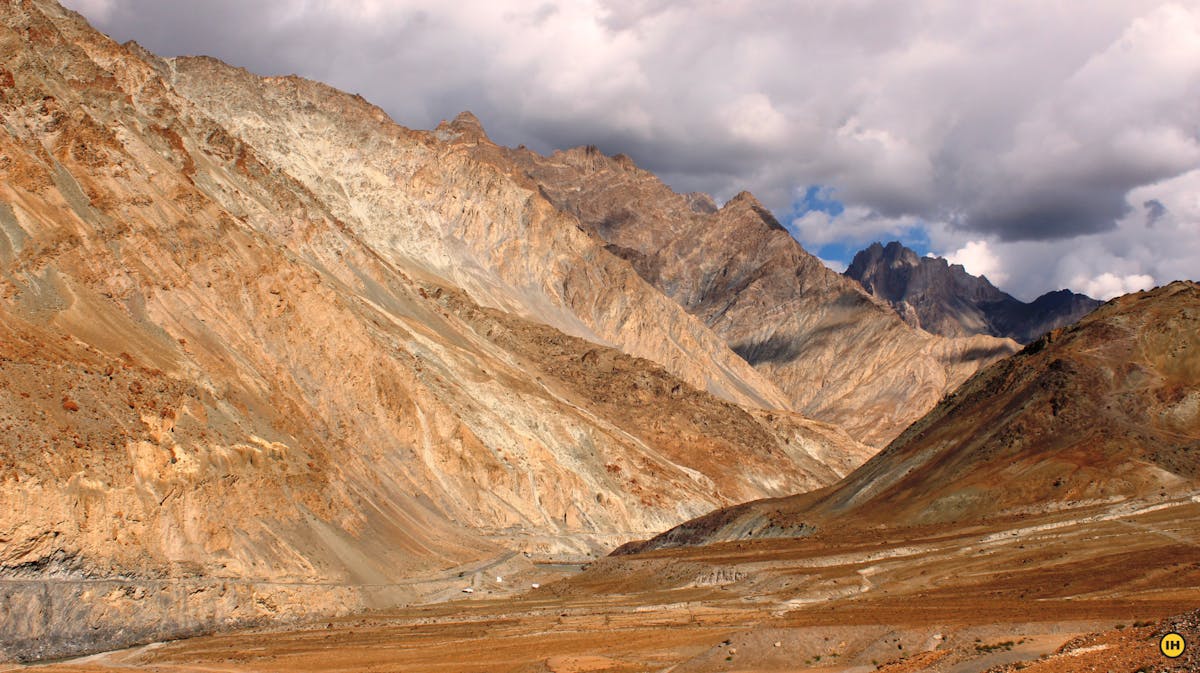
Looking back at Chilling from the climb. Photo by Manoj MN
After crossing the river, take a right turn. This is actually a motorable road that continues for a few kilometers. Just as you start you will notice a path that deviates from the road and climbs up. Feel free to take this path to skip the rather monotonous walk along the road.
The initial part of the trail involves a steep climb for about half an hour and you might struggle a bit because of the altitude. But the tough part of today’s trek is over. The trail joins the road from here and flattens out.
From here it is a relatively flat walk above the Markha river all the way to Skiu. En route, you will pass the village of Kaya after another 3 km. There are homestays in this village as well so you can rest here for the night, though it will make the next day very long.
Skiu is another 3 km ahead of Kaya. It is a nice village nestled between huge rocky mountains. There are homestays here, as well as camping grounds. It is not advisable to go ahead as the next village is quite far away. Get some good rest tonight to prepare for tomorrow’s long walk.
Day 2: Skiu – Markha
Altitude: 11,160 ft – 12,370 ft
Distance: 20 km
Duration: 6-7 hours
Today is a long day of relatively flat trekking along the riverbed. It is also the lone day of the trek where you see some greenery, as you pass by many barley fields and thickets along the Markha river. The challenge (and fun) today will be crossing the icy waters of Markha river, not once but twice.
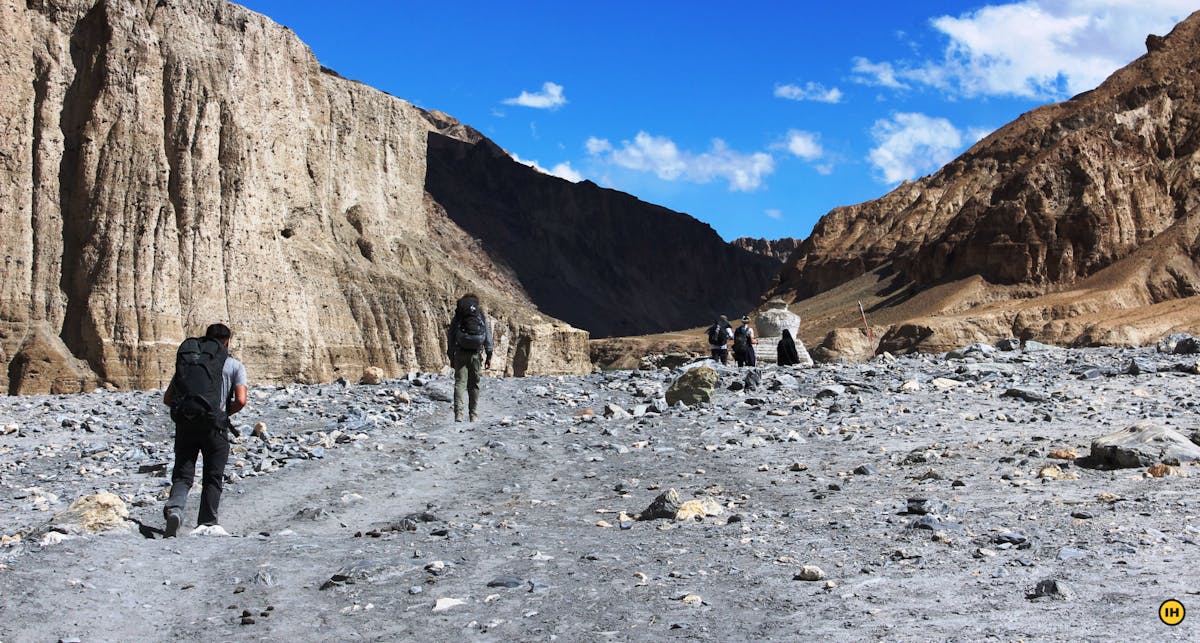
Rocky canyons along the trail. Photo by Manoj MN
Start by heading eastwards up the Markha valley. The trail goes along the river for 2 km till you reach a bridge. Do not cross the bridge but stay on course along the river.
The trail from here has a few washout sections requiring you to climb up and down to pass the broken section of the trail. The trail ahead goes through a bridge crossing. 2 km further from this bridge is a clearing known as Narding. Another 3 km ahead is a campsite called Sara.
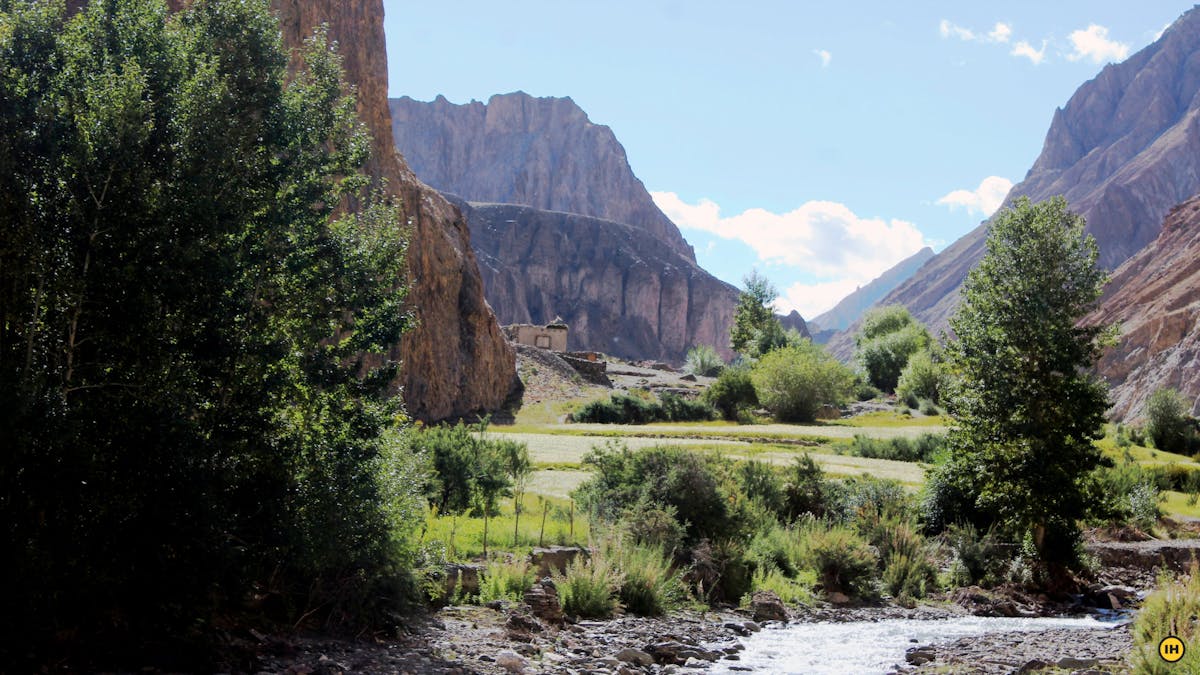
This is the lone day of the trek where you see some greenery, as you pass by many barley fields and thickets along the Markha river. Photo by Manoj MN
1 km ahead of Sara is another bridge which you have to cross. You have reached the village of Chalak. It is a beautiful village with Barley fields. It takes 5 to 6 hours to reach Chalak from Skiu. From Chalak, the trail ascends gradually as you pass by a trail marked by Bharal horns.
After 2-3 km, the valley opens up and a river crossing takes you to Markha Village. The water here can be thigh-high. The water is icy cold so it is better to take off your shoes and socks and pull up your pants. Look for a suitable spot for wading in, preferably where the river widens.
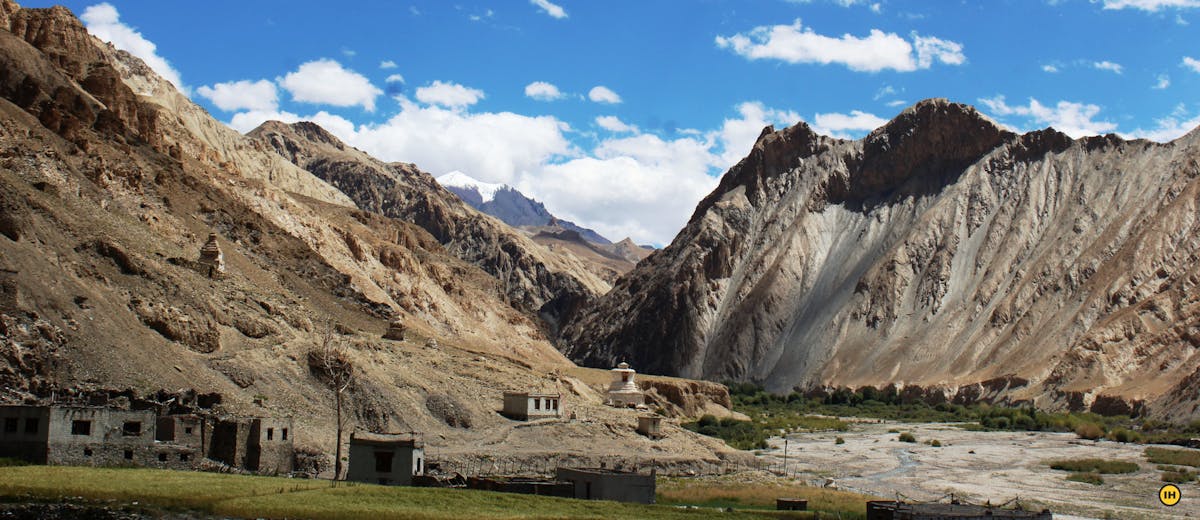
Once you cross over, trek for a couple of kilometers till you reach the final bridge crossing for the day. As you cross over the bridge, you approach Markha- the biggest village in the valley. Markha has over 25 houses and there are many homestays here.
Day 3: Markha – Hankar
Altitude: 12,370 ft – 13,100 ft
Distance: 11 km
Duration: 4-5 hours
The most beautiful part of the trek begins today. The views start to open up today as you enter upper Markha valley. You get amazing views of Kang Yatse, a near-perfect pyramid, on today’s trek.
Take the trail that climbs up from Markha village. Follow the trail from Markha village alongside Markha River. You will come across a wooden plank bridge, ignore it and continue walking with the river to your right.
After about 2 km, you have to wade through Markha River. You will need to cross over at least twice today. After the second river crossing, it is a 2 hour hike up to Umlung, a small settlement. Look out for the Umlung Gompa and cross over from its base to reach Umlung.
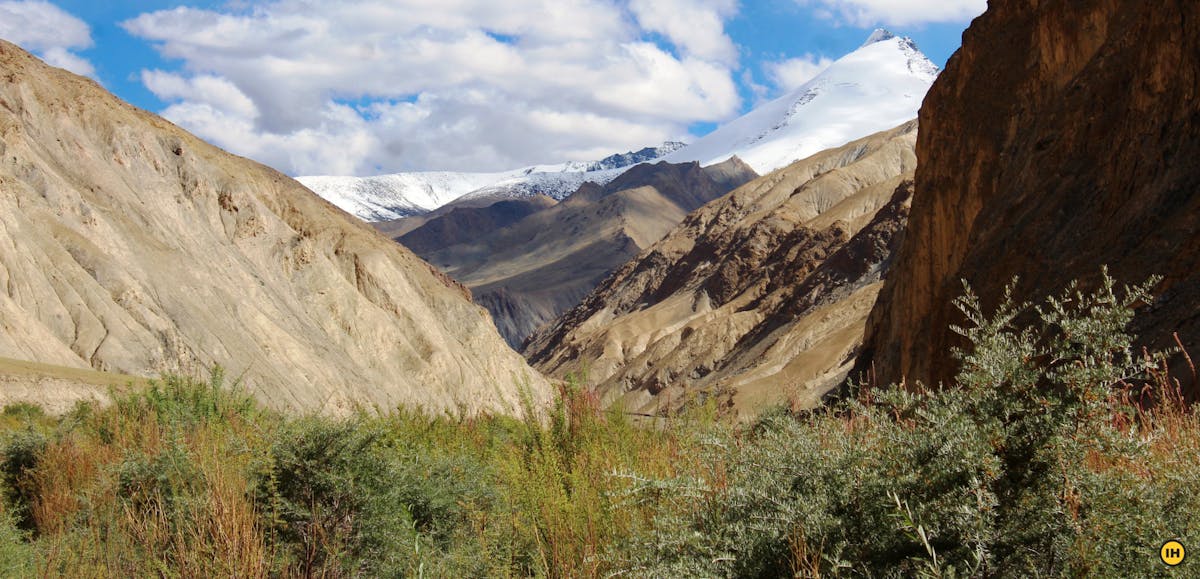
As you climb up from Umlung you get the first view of Mt. Kang Yatse, it is a truly breathtaking sight. Two hours of walking skirting up a gorge will take you to the picturesque village of Hankar. It is possible to go further to Thochungtse, but there are no homestays there.
Day 4: Hankar – Nimaling
Altitude: 13,100 ft – 15,400 ft
Distance: 10 km
Duration: 5-6 hours
Today is another short day of trekking in a spectacular setting. Take it easy and enjoy the views, but make sure to reach Nimaling early before the weather turns bad.
Continue along the trail as it climbs up steeply from Hankar. After about 1 km, the trail splits in two. Ignore the trail that climbs up, it goes to a pass called Zalung Karpo La. Continue along the lower trail, after another 1 km, you will reach the campsite of Thochuntse.

The landscape at Nimaling. Photo by Manoj MN
Thocuntse has lovely green fields with a couple of teahouse tents. Just after Thochungtse there is a fork in the trail. Take the trail to your left, the trail to the right goes towards Kang Yatse base camp.
The trail remains quite steep for about an hour before the ascent becomes relatively gradual. Soon you reach a beautiful pond with Kang Yatse in the backdrop. This is a perfect spot for having your packed lunch.
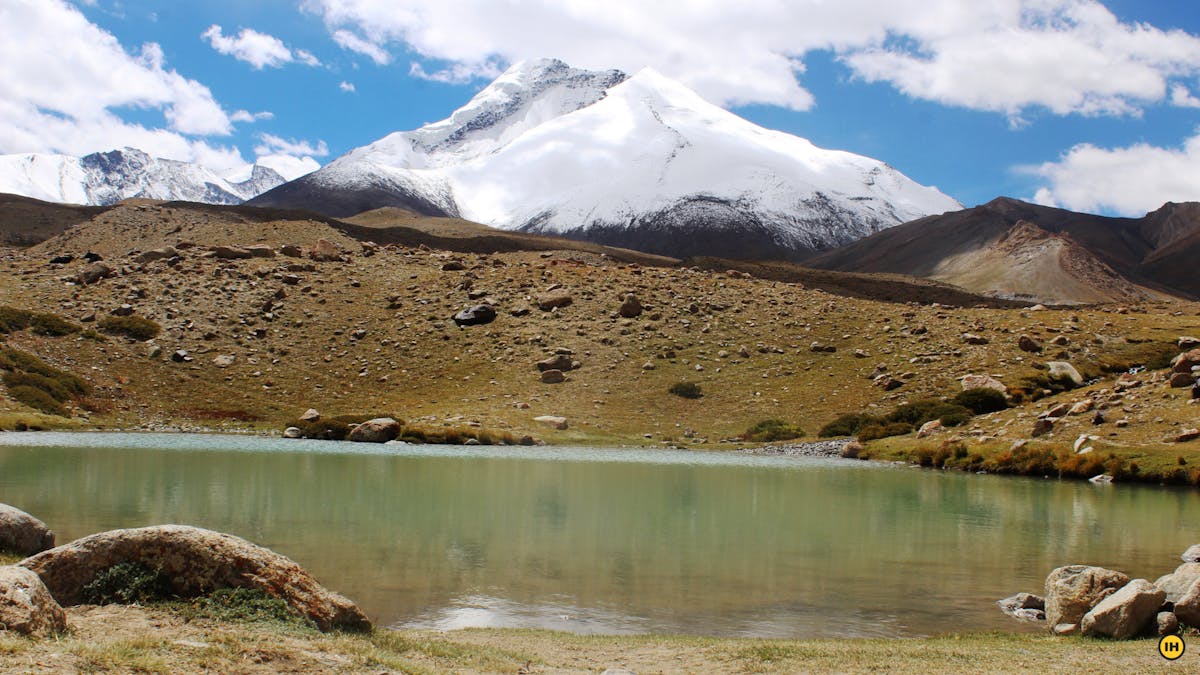
The view of Kang Yatse from Nimaling. Photo by Manoj MN
From the pond, it is a gradual but long descent to the wide, windy plateau of Nimaling. Nimaling is surprisingly green given its altitude and is used as a summer pasture. In the trekking season (May to September), there is a tea house here with many ready-to-use tents where you can sleep for the night.
Day 5: Nimaling – Kongmaru La – Chokdo
Altitude: 15,400 ft – 17,060 ft – 12,810 ft
Distance: 12 km
Today’s trek is relatively difficult. First you have to negotiate the short but steep ascent to the high Kongmaru La. But what is perhaps more difficult is the steep, almost never ending descent from the pass.
Most people descend all the way down to Shang Sumdo the same day, but that makes for a rather unpleasant last day. If time is not a constraint, it is highly recommended to stop at Chokdo for the night.
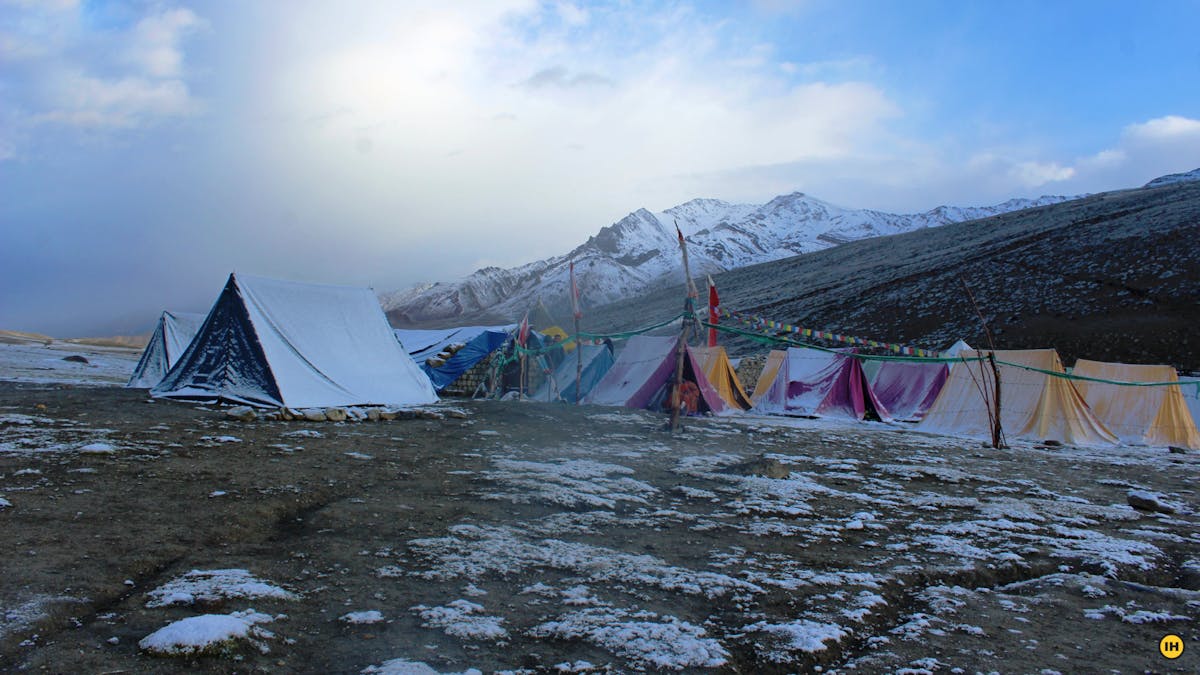
Nimaling campsite after fresh snowfall. Photo by Manoj MN
From Nimaling, Kongmaru La is very clearly visible to the east. Cross the stream near the campsite and proceed towards the pass. There is a clear trail that climbs up steeply to the pass. From Nimaling it takes around 2 hours to reach the pass.
Kongmaru La is a great spot to rest after the grueling trek up. On a clear day, you get great views of the Indus valley and Ladakh ranges from here.
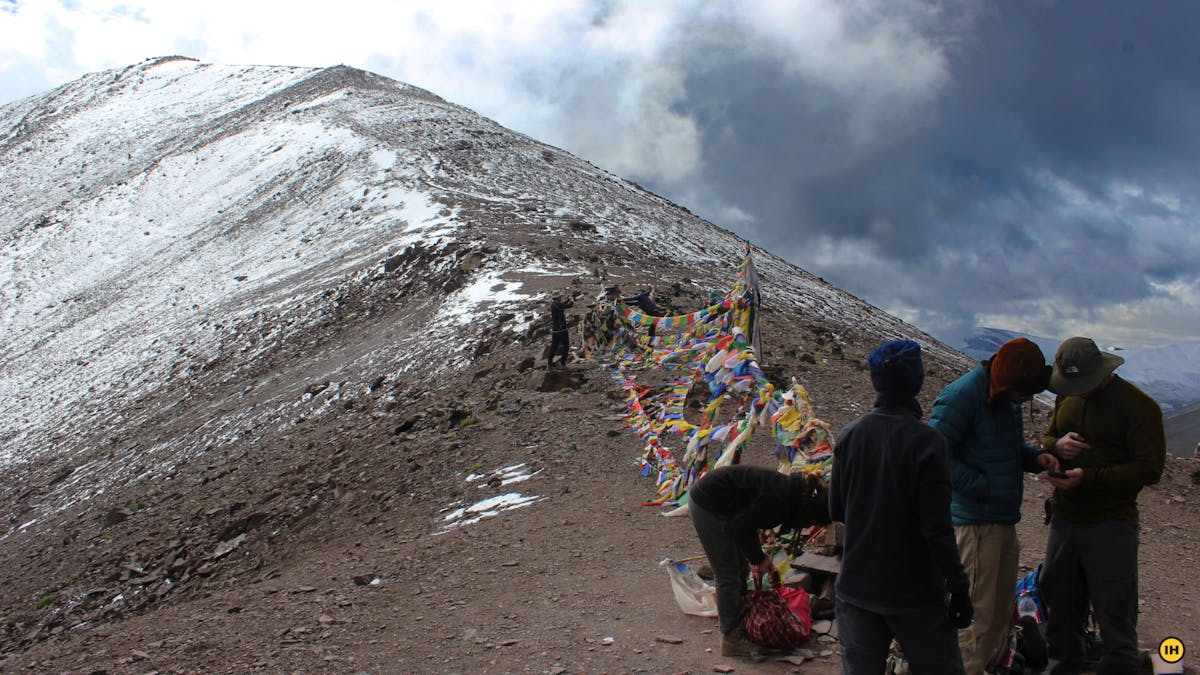
The top of Kongmaru La. The only place on trail you will find mobile network. Photo by Manoj MN
This is however not the end but rather the beginning of the really difficult part of the day. The descent from the pass is brutal. The terrain is rocky and drops down steeply as you enter into a narrow canyon after trekking down 2 to 3 km.
After about 2 hours of descent, the canyon widens as your reach Sukarmo. Sukarmo has tea house tents so you can also stop here for the night if you wish to. After another hour of walking on the river bed, you come to a section running along a small hill. The trail here is descending consistently.

The descent from Kongmaru La. Photo by Manoj MN
Soon you will reach Chokdo, a small village and your destination for the night. You can stay at one of the homestays here. Chokdo has phone facilities so if you plan on taking a taxi from Shang Sumdo to Leh, it is advisable to book one at Chokdo itself. Otherwise you might have to wait long hours for a taxi once you reach Shang Sumdo.
Day 6: Chokdo – Shang Sumdo – Leh
Altitude: 12,810 ft – 12,140 ft – 11,560 ft
Distance: 5 km trek, 50 km drive
Duration: 2 hours trek, 2 hours drive
Today is a very short and easy day of trekking to the road-head Shang Sumdo. It is a flat walk along the river bed and should take you less than two hours.

The colourful mountains of Ladakh. Photo by Manoj MN
From Shang Sumdo there are buses to Leh, but they are not frequent. In case you don’t find a bus you can take a taxi to Leh. It is a good idea to find fellow trekkers willing to share the taxi. En route to Leh you can visit Hemis monastery.
How Difficult is the Markha Valley Trek
Most treks in Ladakh are higher up on the difficulty scale because of the altitude and terrain. Leh, your base camp, rests at 11,560 ft! Almost all treks in Ladakh would involve pass crossings above 15,000 ft. It is where the name Ladakh ("land of high passes") comes from, after all.
The difficult sections on this trek are few, as the trail itself is moderate.
The climb to and descent from Kongmaru La
The climb to Kongmaru La is quite difficult - steep but mercifully short. The descent on the other hand, is long. It is steep descent on scree, which is taxing on your legs.
The river crossings
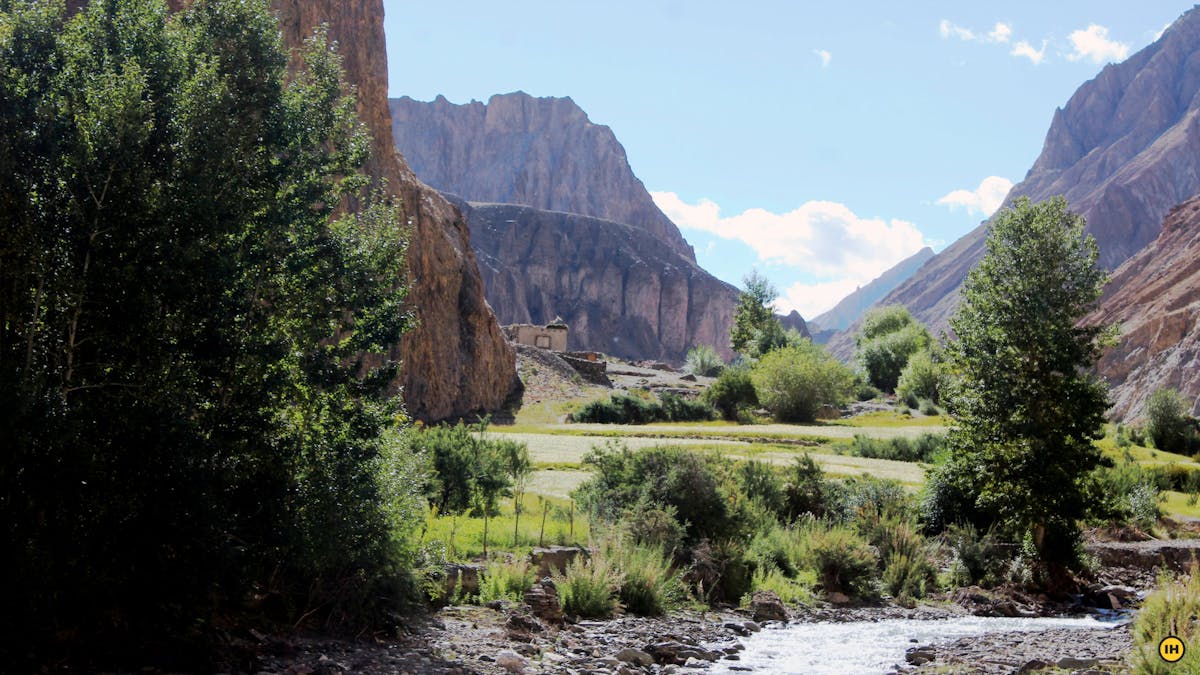
Following along the Markha river. Photo by Manoj MN
How to get fit for the Markha Valley trek

The Markha valley trek is classified as a moderate- difficult trek. You start from an altitude of 10,490 feet at Chilling and reach the highest point of 17,060 feet at Kongmaru La. Therefore, you have to make sure your lungs are strong for this.
Cardiovascular endurance On the Markha Valley trek, apart from huge altitude gains, the trail is long and tiring. This requires a good amount of endurance.
Cardiovascular endurance – Target 10 km in 70 minutes before the start of the trek You can begin by jogging every day. Start slow and increase your pace every day. Swimming, cycling and stair climbing without too many breaks in between can help too.
In order to be prepared for a high-altitude trek, you should have a combination of distance and speed targets.
Here’s a fitness routine that works:
In case you’re just starting with a regular fitness routine, phase out your distance targets in the following manner –
- Target completing 5 km in 30 minutes when you begin.
- Gradually increase your pace by running 4 times a week and bring it down to 5 km in less than 30 mins.
- If you are above 45 years and are comfortable with brisk walking, then target covering 10 km in 75 minutes.
If you are somebody who prefers cycling over running, then try to cover 25 km in 60 minutes.
Record your run on an app like Nike Run or Strava. Start recording your run when you start running. At the end of your run, hit the stop button.
Note: Make sure your GPS is on when you record your run.
Strength – Target 4 sets of squats with 20 in each This is another area you should work on. There is a lot of trekking distance that you will cover at high altitude carrying your backpacks. You have to walk on uneven terrain during the trek. It could be taxing for your legs. For this, strengthening your legs will help. You can do some squats to strengthen them. Start with 3 sets of squats, with 8 squats in each set and work towards reaching your target in 3 weeks.
Flexibility
Another aspect that will help you trek comfortably is flexibility. For this, you can do some stretching exercises – stretch your hamstrings, quadriceps, hip flexors, lower back muscles and shoulders regularly. On your trek, it is important that you arrive on the slopes with your muscles relaxed. Carrying a backpack, however light, can become a strain after a while. These exercises will help you to be in good shape before the trek.
Here is a chart that you can follow to get fit for your trek.
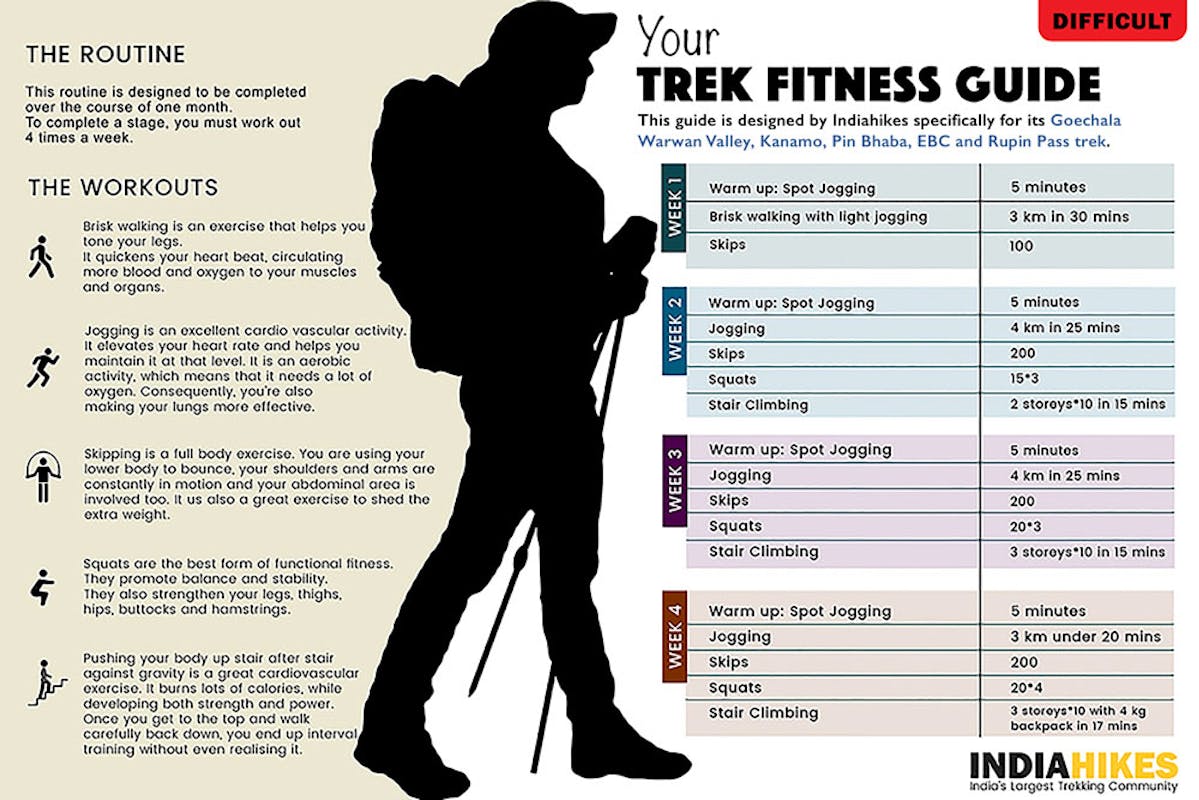
Fitness guide
Working out indoors
If you can’t go out and jog because of time and space constraints, here’s a video you can use to work out indoors.
How to Plan Your Travel
The trek starts at Chilling and ends at Shang Sumdo. Leh is the ideal point to start your journey for the trek.
Reaching Leh
By air: The easiest way to get to Leh is to fly in, Leh is accessible by air from all major Indian airports. If you do fly in, you should rest in Leh for at least a day in order to acclimatize to the altitude (11,560 ft).
By Road: The more adventurous but time-consuming way to get to Leh is by taking the road, either from Manali or from Srinagar. The Manali-Leh route is arguably more scenic than the Srinagar-Leh route, though it is also higher. Buses, as well as shared taxis, run on both Manali- Leh and Srinagar-Leh routes.
Traveling by the HRTC bus is the cheapest way to get to Leh from Manali. It takes two days and costs about Rs. 800, halting at Keylong for the night. Keylong is a nice town in itself and it would be a good idea to stay there for a day. A slightly more expensive but convenient option is the HPTDC run deluxe bus which stops at tourist locations along the way. It costs around Rs. 3000, which includes tented accommodation and food at Keylong.
There are also many privately run shared buses and taxis available, but be sure to get the details of the route. If you do opt for a shared taxi take one that stops overnight, preferably at Jispa. Avoid the taxis that run non-stop from Manali to Leh, it will be sheer torture.
What to Take on Your Trek
Useful videos to help you with your gear

Bare Necessities:
- Trekking shoes: Carry trekking shoes and not sports shoes. You will be walking a long distance, so it is imperative that you have a comfortable and reliable pair of trekking shoes. You will likely encounter very little snow on the trail, so waterproof trekking shoes are not required. You can watch this video to learn to choose the right trekking shoes .
- Backpack (40-60 litres): A backpack with sturdy straps and a supporting frame is a must. This is a teahouse-style trek so you don’t need to carry any camping equipment.
- Three layers of warm clothes: Nimaling is very windy and can get very cold in the evenings. You will need at least two warm layers (one light layer such as fleece or woolen and one padded jacket), though three are preferable.
- Three trek pants: Two pairs of pants should suffice for this trek. Wear one pair and carry an extra pair just in case it rains or you need to change at some point on this long trek. Denim/jeans and shorts are not suitable for trekking.
- Three collared t-shirts: Carry light, full-sleeved t-shirts that prevent sunburns on the neck and arms. You could even get by with just two, but do not carry more than four. In any case, you won’t need them.
- Poncho/Rain Jacket: Although not necessary since you are trekking in a desert region, it can still rain occasionally.
- Thermals: Carry thermals (top and bottom) to keep yourself warm at night. Keep your thermals fresh and don't wear them while trekking.
Accessories
- Sunglasses: Sunglasses help prevent snow blindness. There might be snow close to some of the passes and wearing sunglasses would be advisable. Moreover, because of the altitude, the sun is particularly harsh in Ladakh and sunglasses would be required.
- Suncap : The sun is harsh at high altitudes, which is why a sun cap is mandatory.
- Hand gloves (optional): One pair of fleece or woolen hand gloves which is water-resistant..
- Balaclava : You'll need this to cover your head, as most of the heat escapes from your head.
- Socks (2 pairs) and a pair of woolen socks: Carry at least two sports socks for trekking, and another woolen sock for the night.
- Headlamp/LED torch: Mandatory
- Trekking pole : Watch this video to understand why you need a trekking pole .
- Toiletries ( Sunscreen , moisturizer, light towel, lip balm, toilet paper, toothbrush, toothpaste). Do not carry wet wipes since these are not biodegradable. If you do happen to use wet wipes to clean up after a trek, make sure you bring them back with you.
- Tiffin Box: You will get a packed lunch at the homestays. Have a tiffin box to carry the packed lunch.
- Two water bottles: 1 litre each
- Plastic covers: While packing, use Ziploc covers to compartmentalize things and carry a few extra plastic bags for wet clothes. You also need Ziploc packets to keep soiled sanitary napkins if you use them on the trek.
Mandatory Personal Medical Kit
- Diamox - 10 tablets (to prevent AMS)
- Crocin – 6 tablets (fever)
- Avomine – 4 tablets (motion sickness)
- Avil 25mg – 4 tablets (allergies)
- Combiflam – 4 tablets (Pain killer)
- Disprin – 6 tablets (headache)
- Norflox TZ & Lomofen– 6 tablets each (diarrhea)
- Digene - 10 tablets (acidity)
- Omez/ Rantadine – 10 tablets (antacids)
- Crepe bandage – 3 to 5 meters
- Gauze - 1 small roll
- Band-aid – 10 strips
- Cotton – 1 small roll
- ORS – 10 packets
- Betadine or any antiseptic cream
- Moov spray (aches, & sprains)
Frequently Asked Questions
1. Can I do this trek on my own? Certainly. You do not need any technical skills to complete this trek. The trail is also fairly well defined so you do not need a guide. It would however be advisable to get a map, though you can get by without one. There are some tricky portions and side trails, so be sure to check with fellow trekkers and locals.
2. Are there any facilities to stay or eat along the trail? Plenty. There are villages on the route, and they all have homestays. In the summer months, there are also teahouse tents put up along the trail. This is what makes this a teahouse-style trek. As of 2019, it costs Rs. 1000 at homestays and Rs. 1200 at Nimaling, including food, tea, etc. Keep in mind that the prices have been increasing regularly.
The food is generally very nice at the homestays. For dinner, you will likely get local Ladakhi dishes like skyu. Breakfast is generally Tibetan bread with apricot jam and butter. Homestays also give you a packed lunch which generally includes a boiled egg, chocolate, and maybe some more Tibetan bread.
3. Are there water sources along the trail? There are not many water sources along the trail. There are a few streams, but the water from the Markha River itself is not drinkable. It is highly recommended to fill your water bottles at teahouse tents and homestays en route. They have boiled and filtered water and charge a nominal fee for it.
4. What permits will I need to do the trek? No, you do not need any permits. However, if you start from Spituk, you will need to pay forest entry fees.
Emergency contacts
Hospital: The closest one is Sonam Nurboo Memorial Hospital in Leh. They are well-equipped to deal with high-altitude sickness.
Police station: The police station closest to Hemis National Park, where your trek is, is in Leh. The police station is on Sankar Road.
ERSS: For any kind of emergency help, you can contact the Pan-India Emergency Response Support System (ERSS) number- 112. However, bear in mind that there's poor to no network coverage on the trail apart from on top of Kongmaru La.
ATM: Leh is the last point where you can withdraw cash for this trek.
Mobile Network: There is no signal on the trail except on top of Kongmaru La pass. Leh and its surrounding are the places where you can get an uninterrupted network. Only postpaid SIMs work in the Ladakh region.
Looking for places to visit after your Markha Valley trek?
The Markha Valley trek ends in Shang Sumdo. Once you are back in Leh from Shang Sumdo, there are plenty of things you can do.
Hemis Monastery
There are many monasteries that are worth a visit in Ladakh. However, the over 400-year-old Hemis gompa may be the best of them all. It is the grandest monastery you will see. Other monasteries you should see are Spituk monastery (unusual for it's worship of Tara goddess), Thiksey (which is modeled like the Potala palace of Tibet), and Matho. If you don't mind going further from Leh, consider going to Lamayuru and Alchi as well. They have few of the oldest monasteries in Ladakh.
Leh Palace and Tsemo Monastery
The Leh Palace and Tsemo monastery are the most recognizable landmarks above Leh city. There is a nice path to the palace from Leh's main bazaar to the palace that you can take. The Leh palace was built in the 17th century by Senge Namgyal. Senge shifted Ladakh's capital from a village called Basgo (recognizable as backdrop in the Bollywood movie Dil Se) to Leh with the building of this palace. From the palace, you can take the path further uphill to the Tsemo monastery. The view from Tsemo is spectacular - the entire Stok range is in front of you!
Magnetic Hill and Pathar Sahib
They say that the first Sikh guru Guru Nanak had left a palm imprint on a rock. This is now preserved in Patthar Sahib gurudwara. The Gurudwara falls on the Leh-Kargil road. Further along the Leh-Kargil road, is Magnetic Hill. The Magnetic Hill is an optical illusion - the layout of the surrounding is such that makes a slight downhill slope look like an uphill slope. So, if a car is left to it's devices, it will appear to roll uphill.
Shanti Stupa
The Shanti Stupa is an only recent part of Ladakh's history. It was made by a Japanese peace sect and is filled with murals depicting Buddha's life. Not only is this a great monument to visit, the view from Shanti Stupa of the entire Leh town and Stok range is incredible. Truly a moment for the photos.
Tip: Jot down the above-mentioned contacts on an easy-to-access card. This can come in handy during emergencies.
Trek Documented by Alok Tiwari, Danny Sleeve, Manoj MN & Sandhya UC. Author: Alok Tiwari & Sandhya UC Edited by Aswati Anand
Upcoming Treks
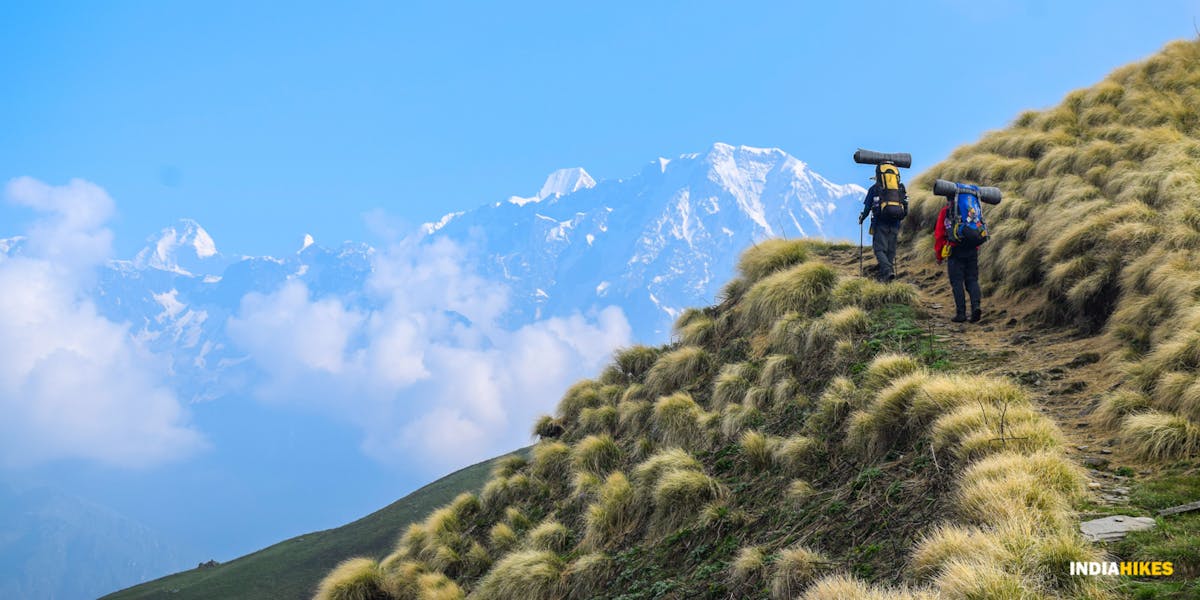
Ranthan Kharak Trek
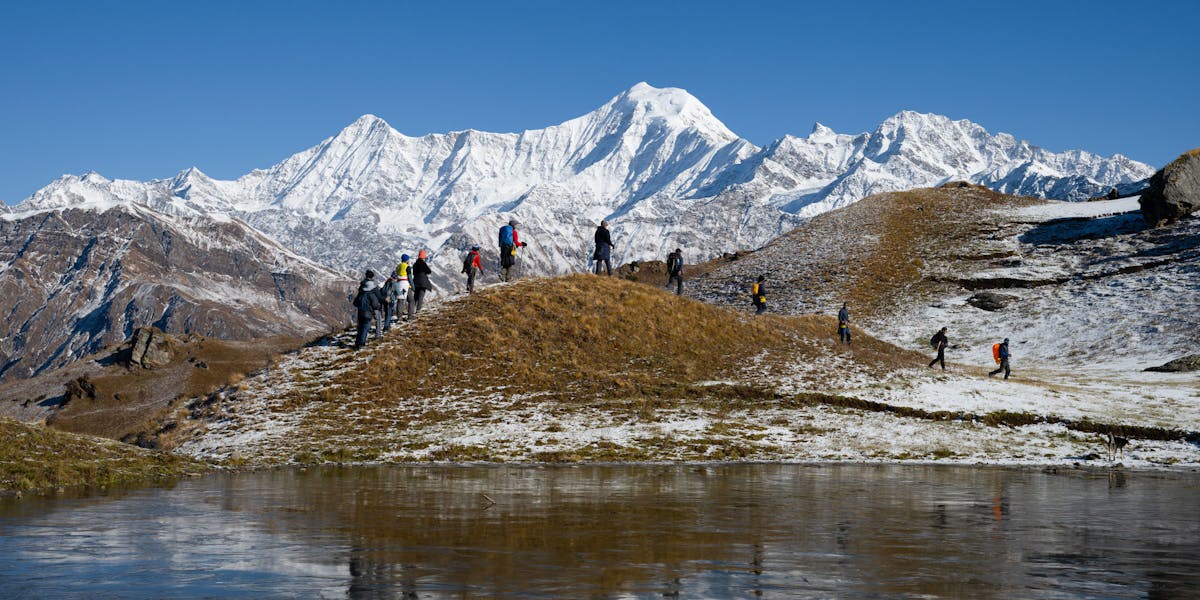
Goechala Trek

ALI BEDNI BUGYAL TREK

Brahmatal Trek
Sign up for our much loved Weekly Mailer
We have terrific trekking tips, trek updates and trek talks to look forward to
Treks by Season
Treks by month, treks by difficulty.
- Easy - Moderate
- Moderate - Difficult
Treks by Region
- Uttarakhand
- Himachal Pradesh
- Lahaul and Spiti
- West Bengal
- Chhattisgarh
Treks by Duration
Special treks.
- Family Treks
- Stargazing Treks
- Senior Treks
- Adventure Therapy
- Summer Camps
- Youth Camps
- Cancellation policy
- Work with us
- Our sustainability practices
- Privacy Policy
- Terms & Conditions
080 468 01269 Mon to Sat - 9.30 AM to 7.30 PM Sun - 9.30 AM to 6.30 PM
Bengaluru Office
139, Defence Colony Road, Defence Layout, Sahakar Nagar, Bengaluru, Karnataka 560092
Dehradun Office
No.85/10, Neshvilla Road, Dehradun - 248001
© 2024 Indiahikes Private Limited
All images are copyrighted by their respective authors.
Markha Valley trek: How to do it independently
By Joan Torres 28 Comments Last updated on September 6, 2023
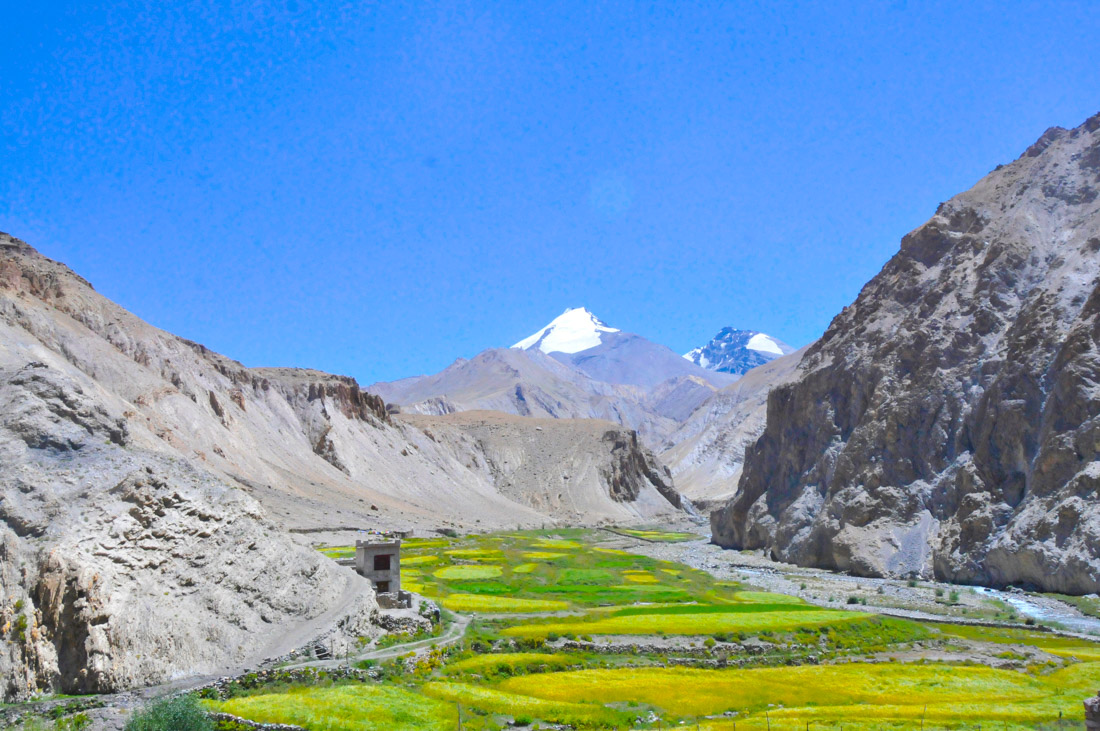
Yaks grazing on green plains at an altitude of 5,000m, white snow-covered peaks higher than 6,000m, extensive valleys surrounded by huge, rocky mountains and a strong Tibetan culture with deep roots: the Markha Valley trek is the perfect hike for those seeking both stunning Himalayan landscapes and experience real Tibetan culture .
Markha Valley is one of the most popular treks in Ladakh, but it’s still a hundred times more authentic than the popular treks offered in Nepal.
Tourism in Ladakh is still emerging and, today, you can walk around Markha for hours and yet not meet any soul apart from Tibetan shepherds.
Keep reading: A travel guide to Ladakh
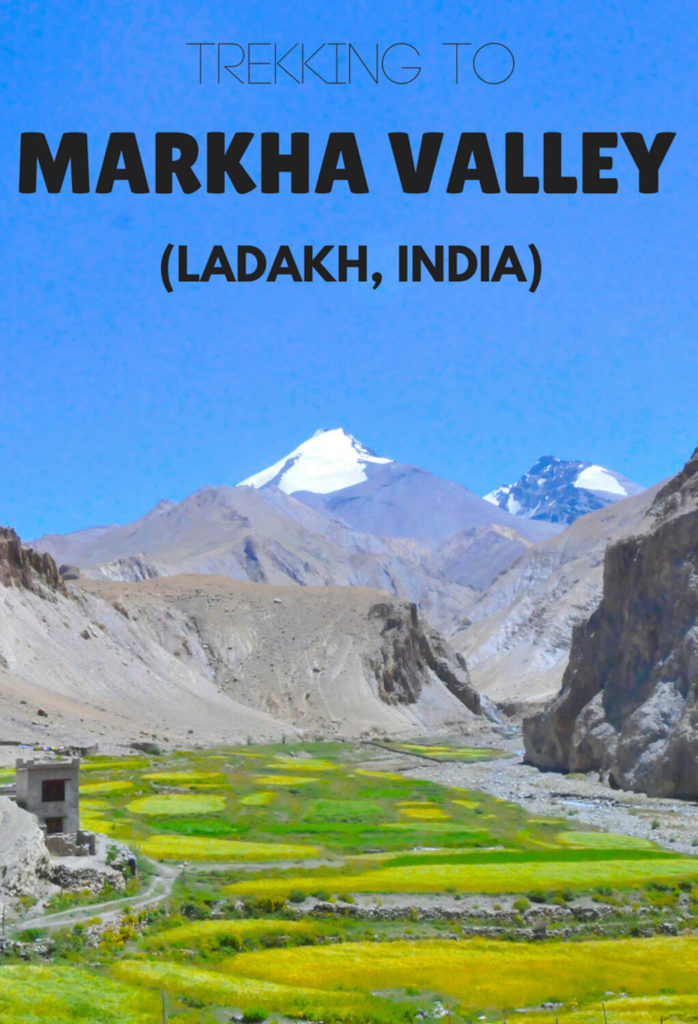
The Markha trek goes alongside a river called Markha, a tributary of the Zankskar. This river is surrounded by big, rocky mountains which give shape to the valley.
Along the valley, there are numerous Tibetan settlements that have turned into small villages, made of mud-brick houses, and Buddhist gompas .
For centuries, this region was totally isolated from modern society, until it was discovered in the 19th century.
Today, Tibetans from Markha Valley make a living from the few trekkers that pass by during the summer months.
What are you going to find in this guide?
Table of Contents
Trekking details
- How many days are needed?
- How much does the Markha trek cost?
- Do you need a guide?
Transportation: How to get there and back?
- Markha Valley trek map
- Itinerary day by day
Accommodation
- Food and water
- Packing list
Length: 96km / 50km Duration: 4-9 days When to go: June to September Highest point: 5,200m Lowest point: 3,200m Difficulty: Medium (experienced beginners)
How many days are needed to complete the Markha Valley hike?
You need a minimum of 4 days and a maximum of 9 , depending on where you start from:
Spitok – Starting from Spitok involves walking for between 6 and 9 days. During the first 2-3 days (40km), you walk through rocky areas until you cross Ganda La pass, at 4,970m. From there, you start descending until you get into the actual Markha river.
Chilling – This place is located on the Markha river itself, which means that you skip the first 2-3 days needed to get there. From Chilling, trekkers take between 4 and 6 days to complete the trail. That’s the option I chose.
Read: A beginner’s guide to trekking in Kyrgyzstan

Do you need a guide to complete the Markha Valley trek in Ladakh?
No, you don’t need a guide at all. You can do it independently without any problem. Let me tell you why:
The key is to follow the horse shit – It seems like a joke but, actually, there is plenty of horse shit along the trail, which will tell you the route to follow. Locals use these animals as a way of transportation when moving between villages.
Shepherds and local Tibetans – If animal manure disorientates you, don’t worry because, along the way, you will meet loads of shepherds, with their herd and their horses, who you can ask for directions.
Tibetan villages – Additionally, you will encounter villages every 2-4 hours, where you can also ask whether you are going in the right direction or not.
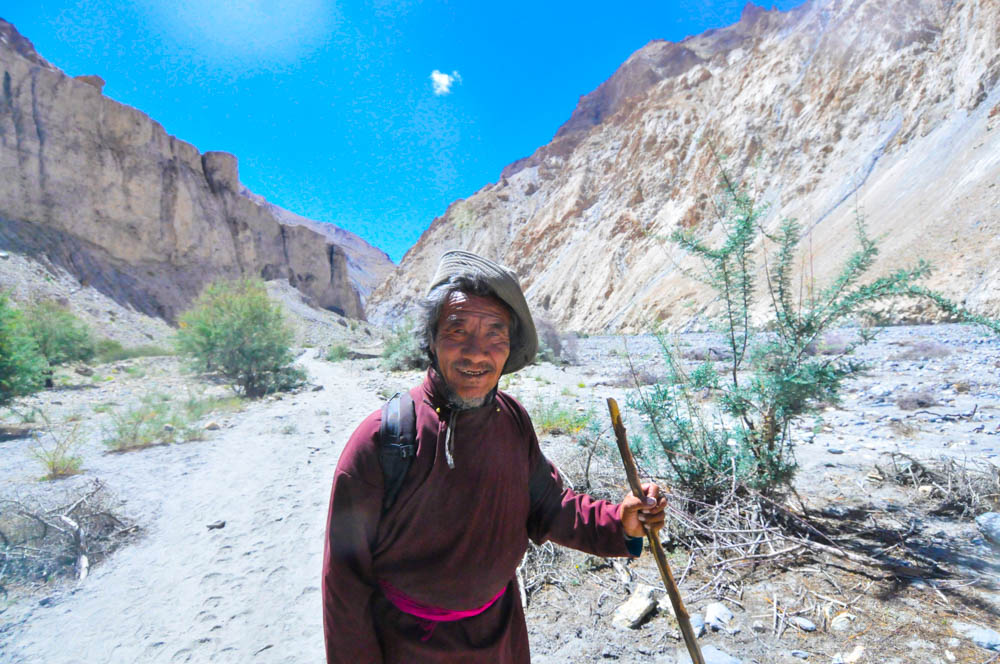
Markha Valley trek cost: Price with guide vs price by yourself
Price with guide.
I asked several trekking agencies in Leh and, as an average, this would be the price for one person. If you were with more people, it would decrease slightly, obviously:
4 days x 4,000INR per day = 16,000INR (240USD)
It includes:
A guide Round trip transportation Accommodation in either homestay or tent 3 meals a day
Price without a guide
Transportation from Leh to Chilling – A taxi costs around 2,800INR (43USD). If you don’t have anyone to share it with, I suggest you find a local who can you take there by motorbike. I paid 1,500INR (23USD).
Accommodation and food – Both homestay and tents cost 1,200INR (16.50USD), including dinner, breakfast and a picnic lunch box.
Transportation back to Leh – Taxis from Shang Sumdo (the ending point) to Leh cost 2,500INR (40USD). However, occasionally, early in the morning, you can find local transportation. I paid 500INR (8USD).
Total Cost = 1,500INR + 4 days x 1,200INR + 500 = 6,300INR (87USD)

From Leh to Chilling
Chilling is located 65km from Leh and it takes around 1 hour and 20 minutes to reach it. Taxis can easily be booked for 2,800INR ($43).
If you can’t find anyone to share it with, unofficially, you can find a motorbike taxi. How? Just ask at the different agencies.
Most of them will tell you that they don’t offer this service but keep asking until you find one. I paid 1,500INR ($23).
From Shang Sumdo to Leh
Shang Sumdo is the ending point of the Markha Valley trek and the first village which vehicles can reach. There are taxis expecting to take you to Leh for 2,500INR ($43).
Once again, if you are just by yourself, you can either wait for other trekkers to come or go back to Leh by public transportation.
Occasionally, there are local taxis leaving at 6am. You just need to be lucky. Ask anybody around for this information.
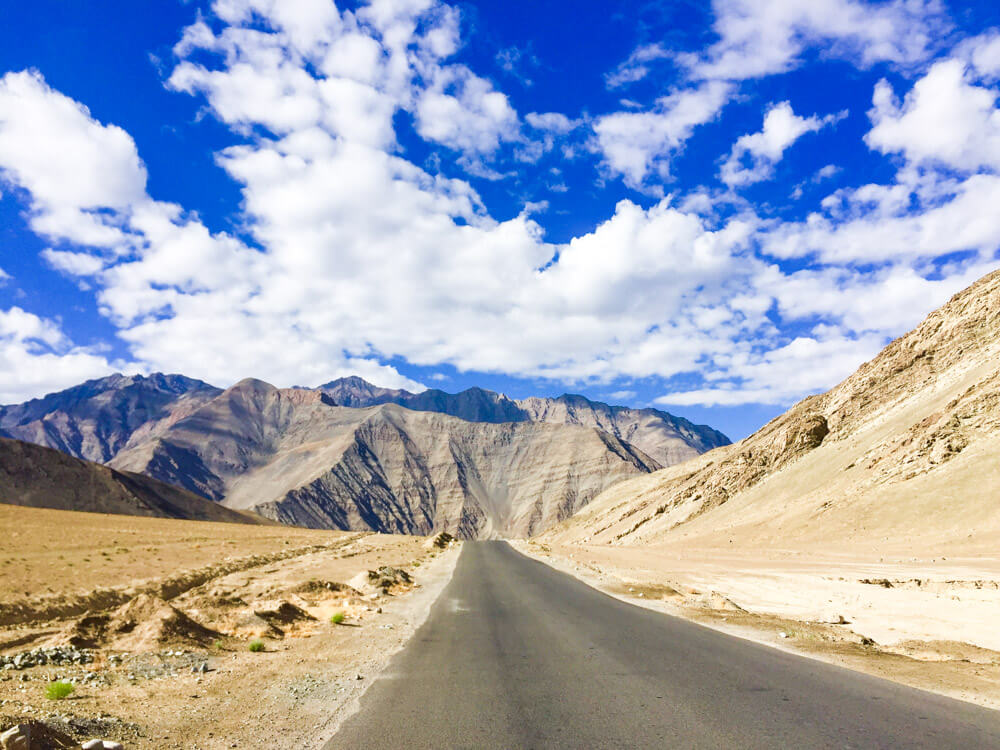
Markha Valley trek map (Ladakh)
Markha Valley trek itinerary: Day by day route
Please note that the following day by day itinerary starts from Chilling, which is the one I followed.
Day 1: Chilling – Sara
Length: 19km Duration: 8hr Highest point: 3,710m Lowest point: 3,200m
On the first day, the tough part is only during the first 5km, where you need to climb until you reach the Markha Valley itself. Afterwards, it becomes completely flat.
You’ll pass some villages, the biggest one being Skyu , where you can get a cooked meal.
The river flows through a valley which becomes greener as you keep going, but the aggressive surrounding mountains are brownish and arid.
Sara is a village comprised of just a few houses where you can find a few homestay options. However, I didn’t sleep there, but in a beautiful campsite located just a few kilometers before. It was set up on a green plain, the perfect spot to spend the night, chill out and meet other trekkers.

Day 2: Sara – Markha
Length: 8km Duration: 4hr Highest point: 3,850m Lowest point: 3,710m
This is the shortest, flattest and most relaxing part of the whole hike. The landscape is pretty similar to that of the previous day, but the mountains are sharper.
Honestly, you could easily continue walking to a further village, but Markha is sort of a special place, worth spending half a day in.
It’s the capital of the valley, hence the village with more things to do and see, from a couple of Buddhist gompas , to peasants working in the fields, playing with children or admiring the landscape.
By the way, don’t expect Markha to be a metropolis, as it is composed of no more than 20 houses spread around a big area.
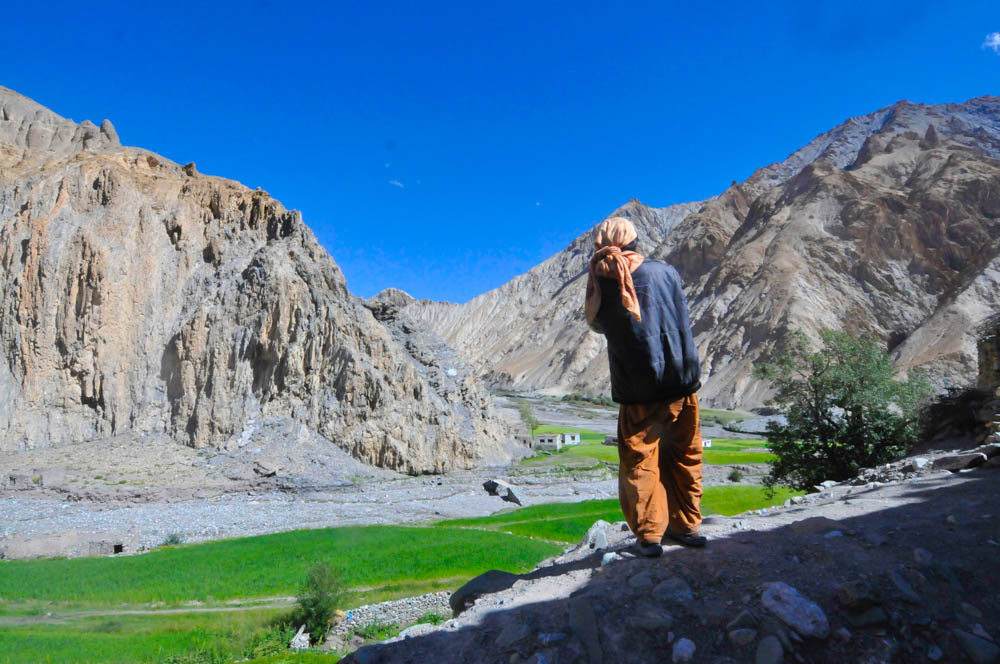
Day 3: Markha – Thachungtse
Length: 12.5km Duration: 6hr Highest point: 4,300m Lowest point: 3,850m
On the third day, things start to become really interesting. Just a few hours after Markha, you can make out Kang Yaze peak, a mountain 6,150m.
If you are lucky, you can also spot some Himalayan deer. You need to keep following the valley until Hankar , situated at the half-way point, and where you can also get a warm meal (or spend the night if you like).
When you leave Hankar behind, you need to get off the valley by turning left at some point. Don’t worry, you can’t miss it.
From there, the trail becomes tougher than ever. You will have to ascend 500m in just a few kilometers before reaching Thachungste .
The views are superb, especially because you are getting closer and closer to Kang Yaze.
Thachungste is a camping site at above 4,300 meters, placed just next to a mighty river and where hundreds of strange, tiny rabbits wander all over the place.
Day 4: Thachungste – Nimaling – Shang Sumdo
Length: 20km Duration: 11hr Highest point: 5,200m Lowest point: 3,810m
The toughest part of the whole trek but, at the same time, the most rewarding. Most hikers split this stage into two and spend one night in Nimaling . I decided to do it in one day. It depends on you.
The first stretch from Thachungste to Nimaling is breathtaking.
You ascend from 4,300m to 4,800m in just 9km, passing herds of yaks and hairy Himalayan horses and very authentic Tibetan shepherds.
The landscape has loads of contrasts and, at one point, you can look to your left and see a green field with Kang Yaze in the background and to the right, gray and purple rocky mountains.
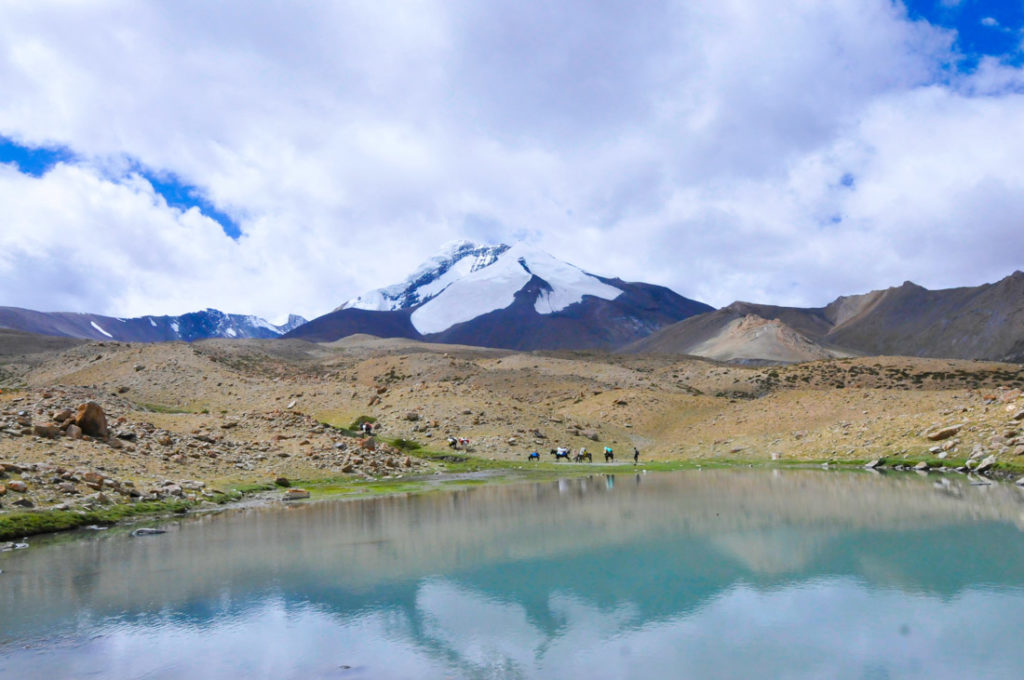
Nimaling is located in a huge green plain, full of yaks. There’s quite a big campsite set up. At a normal pace, you might reach Nimaling in 3hr. You can either spend the night here or continue walking.
As soon as you leave the plains of Nimaling, you start directly going up to Gongmaru La pass , located at 5,200m and the highest point of the trek.
The ascent is hard but the views you get both right and left are impressive. When you finally reach the top, recover your breath, rest for an hour and enjoy the views.
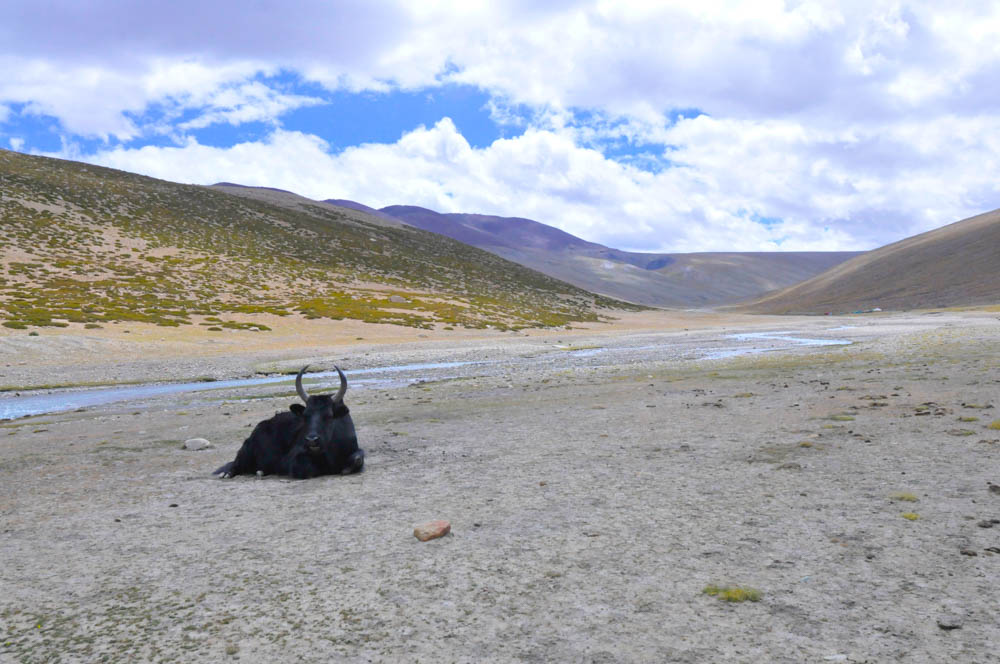
After the pass, you just need to go down. The way is extremely steep and you have to descend 1,500m in just 4hr. At the end of the trail, you get to a river which flows through a valley.
Follow it and, after 4hr, you should reach the end point, Shang Sumdo .
The trail is a bit confusing since sometimes, the way is blocked and you need to go over the valley but then go down again.
Once you are in Shang Sumdo, have a rest over a couple of beers. From here, you can go to Leh by car.
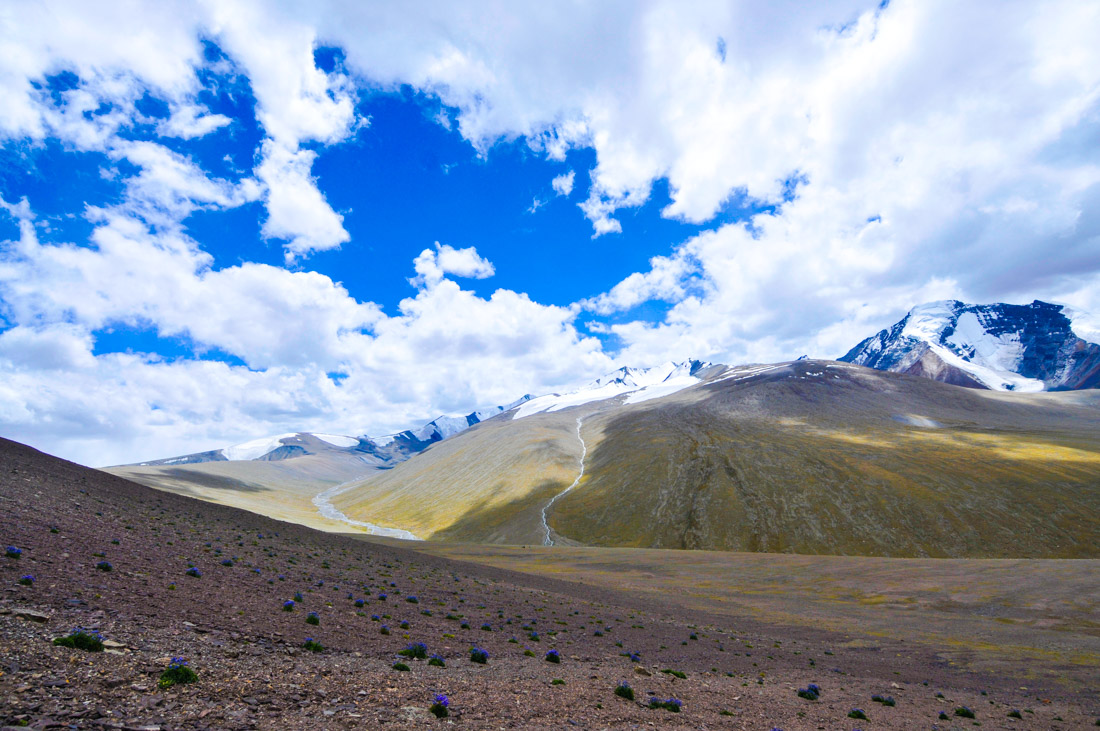
Unless you are bringing your own tent, there are two types of accommodation:
Homestays – Most Tibetans have a spare room with 3 to 4 mattresses on the floor for trekkers. They charge you 1,000INR ($15) including dinner, breakfast, a picnic lunch box and all the tea and cookies you want. If you are lucky, the family will invite you to sit with them for dinner. Some of them will make the effort and try to start a conversation, even though their English is not good.
Camping sites – Along the route, Tibetans have set up exclusive campsites for trekkers. The price is also 1,000 rupees per tent, including meals as well. Tents are well-prepared and have a thick mattress and blankets.

Food, water, and showers
Food – As you would expect, food is, definitely, not the highlight of this trek. In homestays, they will always serve you dal (lentils) and rice and chapati (flat Indian bread) with jam and butter for breakfast. The picnic lunch box consists of a slice of bread, some cheese, a potato and one piece of fruit. If you are very lucky, you might get some eggs for breakfast. In the villages, you can get some extra dishes, such as instant noodles or skyu , a traditional Tibetan dish consisting of stew with flour balls.
Water – Bottled water is not sold across Markha Valley, but they drink from the river. The water you buy has previously been boiled and filtered by the locals. It costs 15INR (23¢) per liter. Bring your own bottle.
Shower – There are no showers. If you want to wash, you should go to the river. Furthermore, the few toilets you find are holes on the ground. Personally, I prefer going into the bushes.
Markha Valley trek: Packing List
Travel Insurance – In the mountains, accidents do happen. Remember to always have insurance. I strongly recommend buying World Nomads .
A backpacking tent for high altitude mountains – If you don’t want to pay for accommodation, bringing your own tent, will make things much cheaper. I recommend a Freelite 2 , which is the one I bought in 2017.
A warm sleeping bag – At high altitudes, nights can be freezing. I recommend a Kelty Cosmic 20º , which I bought in 2017, as well.
A camping stove – To save yourself from buying non-tasty meals, bring your own cooking equipment and stock up on supplies in Leh. If I was you, I would get a multi-fuel stove, which works with any kind of flammable liquid, such as white gas, pure alcohol, gasoline, and diesel. I recommend you buy the MSR XGK EK multi-fuel stove .
For purifying water – Supposedly, the water sold by the locals is boiled but, if you are not entirely sure about it or you just don’t want to pay for mountain water, you should always bring purifying tablets or a Steripen .
Warm clothes – From proper hiking pants to a warm jacket and thick socks. As I said before, nights can be freezing at above 4,000 meters.
A Kindle – If you don’t have a Kindle, perhaps, it’s time to buy one. At night, you will have nothing to do but read and you know that books are heavy to carry.
Solar protection – As you keep on ascending, you also get closer to the sun, hence its rays become more lethal. Please note that in August, the sun is extremely strong.
A hat or a cap – The sun is extremely harsh, especially in summer.
Diamox – High altitude sickness is very common among travelers who go to Ladakh. Why? Because most of them reach Leh by plane, which is already at 3,500m. The altitude change is too drastic and some hikers don’t have enough time to acclimatize. Before going to Markha Valley, I would spare 3 or 4 days resting in Leh. For the trek, bring Diamox with you, which is a medicine that helps to fight against altitude sickness.
Keep reading:
The ultimate guide to travel to Ladakh Top 100 outdoor blogs
If you like my website and found this post useful, remember that, if you book any service through any of my links, I will get a small commission at no extra cost to you. These earnings help me maintain and keep Against the Compass going! Thanks 🙂

28 comments
How about that dude living solo at 4500 meters?
I always appreciate folks who live alone in remote outposts. They have mastered this fear of being alone, and lonely, as we are social creatures who crave connection, at least after a few weeks or months.
I lived 3 hours away from civilization in the jungle a few years ago. Nothing like these remote spots you write of up top, but still, the 1 dude who lived down the road was someone I admired. He spent most of his life in the jungle with animals, versus in town with humans, save 1 day a week. Impressive.
Brilliant pictures Joan.
Hey! Just some news one year later about that Valley, I did the trek the last week of September. Some more info for readers coming till that comment part 🙂 Pros: we were no more than 3-5 foreigners sleeping in the main villages(sky, Markha, nyimaling camp), perfect for talking to locals. No organise group anymore! Cons: it’s getting cold (-5 nyimaling) and camps are closing About itinerary, I skipped a day too, but by walking from Markha to nyimaling in a day(7.5hrs) witch is hard but doable Something else, if you have time, don’t skip the part between zinchen and skyu, the first pass is incredible and the way down to skyu too! Hoped I helped some.
Hi Leroy, thanks for your tips man! Yes, it was definitely useful. Good to know that they are starting to close camps the last week of September. And yes, perhaps I should encourage people to do the first pass 🙂 I hope you enjoyed man!
Just reading through these lines really have me excited about my upcoming trip to Leh! Is there a specific guide/company you would recommend? Is it better to book in advance or only once on site? Thanks so much for your help!
Hi Val, I went there independently so can’t recommend a specific tour company. However, in order to know the prices which are shown in this article, I asked several agencies and all of them were asking for the same price, more or less. You MUST book it once you are in Leh. You will save 50% of your money and don’t worry, because there are dozens of different trekking agencies. Go there and, on the first or second day, just ask at 4 or 5 agencies and choose your favourite one :9 Cheers,
Hi, thank you for the great summary of the trek! I am going to Leh during my world travel and therefor I wanted to ask if you brought all your equipment from home or did you buy it in Leh (I heard you can get everything there for a fair price). I would be travelling in warm regions before going there, so I am not that much into carrying everything with me for months… Thank you, Mario
Hi Mario, yes, you can buy it in Leh but the quality won’t be as good. For example, you can buy a super warm sleeping bag which could keep you warm at -8ºC but it is going to weight 5kg. It’s always better to buy the brands you like in your home country. Cheers!
Thank you for this great description! We are gonna do this trek in June. We won’t bring a tent en would like to spend the nights at the homestays as you described. Do we also need a warm sleeping bag over there? Or do they have enough blankets? I would like to go with a light down sleeping bag and a fleece liner. Do you think that will be okay?
Thank you so much! Loore
Hey Loore, they have extremely warm blankets, no need to worry about that 😉
We are also doing this trek in June! Do you have an itinerary yet? I am so excited. Can’t wait till June 🙂
Hi Teresa, in June we will be around the Caucasus. You meant my itinerary, right? Otherwise, the trekking itinerary in on the post, if that is what you were asking 😉
Hello. This has been a very interesting and informative read. Can this trek be joined at Chilling through the Hemis National Park?
I am not sure to be honest
Hi Really nice information about trek. I just want to ask if your tips and advice are valid for longer version of Markha Valley Trek (7-8 days from Spituk). I would like to walk a longer option sleeping in homestays. As I understand no GPS needed. Just a map. Thanks. Darius
Hey Darius, yes, they definitely are valid for the longer route
Hey! Thanks for the detailed info. Just some question about what to bring and where to sleep. I plan to do the Markha valley independently in early June but in reverse to go up to Stok at the end. Are home stays comfortable or should I bring a lightweight mattress? (I saw in another comment that warm blankets were no problem). And I don’t need to bring a tent right?
Als for the food should I bring a stove? From what I understood the food there is not amazing. Cheers Kevin
Hi Kevin, there are homestays and campsites along the way, so you should be fine. As per the food, well, it is very simple food, like daal and rice mainly, but I don’t think you are going to cook much better with a simple camping stove
My gf and I are planning a trip to Leh to hike Ladakh in july. We are vers confused abort the weather as we read a lot of different infomation and advice when and when not to travel. How will the weather usually be in july and can you recommend the Markha Valley in this month?
Hi John, July is the best month of the year to trek the Markha Valley
Hello, From my research, Mid-June to september are treakking seasons in Leh. Can you do the Markha Valley trek in and around last week of August ? Also about the guide availability, can you get a guide for just one indiviual ? I tried asking around a few agencies over email and they were only doing “group tours”, not that I have a problem with that.
Hi Jimmy, if you look for an agency once you are in Leh, you’ll be able to find them. End of August is very doable.
Hi, we’re going to Ladakh at the end of August – do you think, there will be enough capacity in the homestays or in the campsites to stay , even though it will be the tourist season? Because I think Ladakh’s treks have become more popular these days… And one more question – is it necessary to bring our own mosquito net? Thanks 🙂
Hi, there should be enough capacity. I don’t think they would allow someone sleep outside, if that person didn’t have a tent. As per mosquito net, they didn’t provide you with one, so you can bring one along
Unfortunately the packing list is a bunch of hogwash.
The great thing about this trek is, you dont need a tent or a stove or food. You only need a thick sleeping bag in peak season, otherwise everywhere including Nimaling will have enough blankets.
I was mislead by this list and envied 95% of other trekkers who had much lighter load. At 5000m every kg makes a difference.
The packing list clearly states that if you don’t want to pay for accommodation, bringing your own tent will make things much cheaper and, to save yourself from buying non-tasty meals, bring your own cooking equipment and stock up on supplies in Leh.
Never said that those items were a must, so the fault is yours.
Hey Joan, thanks a lot for the great description! My gf and I are planning to do the trek in June. I am wondering, do you need to reserve homestays (can you even?), or do just show up? You said in a previous reply that you think capacity would not be an issue, do you think that’s true in late June? Many thanks 🙂
UPDATE JUNE 2023
The small stream in the valley from Nimaling to Chogdo is overflowing with melting water at the moment. As there are 20+ river crossings it is extremely dangerous to descend that way. If you can avoid this part and have time to return the way you came up, do so!
After a really nice and easy trek up to Nimaling, we attempted to climb down from Nimaling to Chogdo on the 25th of June via the Konmaru La East Pass. The first bit after the pass, was steep and a little sketchy but well manageable with some experience and sturdy footwear. Unfortunately after that we were facing massive amounts of water flowing down the valley to Chogdo. After crossing the river twice (slipping and falling, almost losing our backpacks and hiking poles) we decided to wait until the next morning as water levels were expected to go down during the night. Which means we got stuck halfway on the mountain at 4500 meters and ended up staying the night emergency bivouacing (sharing 3 sleeping bags and one emergency bivouac bag between the 7 of us). We were lucky to be a group of (semi-)experienced trekkers who could make it down safely the next morning starting at around 4.30 am.
Moreover, travel agencies and locals in the camp in Nimaling do not seem to care or do not know any better, so do not expect warning from their side. Also there is no reception on the descend and even satellite phones do not work as they’re blocked in Ladakh. Stay alert and safe!
You keep refering to them as Tibetans. They are not Tibetans, they are Ladakhi people from Ladakh, India. Culturally though they are similar to Tibetans.
Leave a Comment Cancel reply
Your email address will not be published. Required fields are marked *
Notify me when new comments are added.
Join our Expeditions
From Syria to Iraq in Pakistan, Against the Compass is finally running expeditions to the most epic and off-the-beaten-track countries.
We have scheduled expeditions for every month of the year.
Latest posts
- Things to do in Haiti in a 1-week itinerary
- Is Syria safe to visit in 2024?
- How to travel to Syria in 2024: Need to know
- Is Iraq safe to visit in 2024?
- Things to do in Iraq in a 10-day itinerary

- Best Hikes In The World
- Appalachian Trail
- European Hikes
- Nepal Hikes
- Patagonia Hikes
- See All Hikes
- Mount Kenya
- Mount Kilimanjaro
- Mount Toubkal
- See All Mountains
- South Africa
- New Zealand
- Switzerland
- United Kingdom
- Packing Lists
Markha Valley Trek – Ladakh’s Most Popular Trek
Asia , India
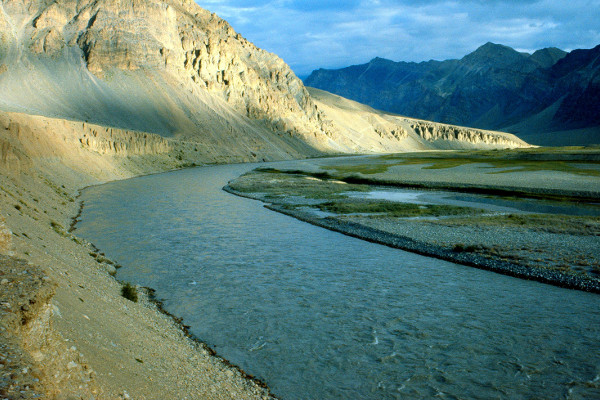
The Markha Valley Trek is one of the most spectacular and famous treks in the Ladakh region of India.
Located in the northwestern area of India, the Ladakh region is famed for its wildness and untouched beauty.
On this page, you will find a comprehensive and impartial guide to the Markha Valley Trek.
Markha Valley Trek
The Markha Valley Trek follows a stunning high valley with superb views across the mountain region and is one of the best ways to still experience the unique culture of the High Himalaya region . The Markha Valley trek follows the Markha River downstream taking in several high passes including Ganda La (15748 ft) and Kongmaru La, (17,060 ft). From both passes you get epic views across the landscape with the tall peaks of Kang Yissay and the 20,086 ft Stok Kangri coming into sight.
Not only is the trek one of mountain beauty, but it also takes trekkers through a landscape of ancient farming with many green irrigated fields and local villages being passed along the way. You’ll also experience several monasteries and meet the brightly dressed monks as they go about their daily lives. You’ll will be exposed to several waist-deep river crossings, high rocky canyons and explore many buddhists villages en-route.
Please Note: The trek is moderately difficult due to the length and high altitude of both passes. There will be several steep trek ascents and you may have to walk over slippery scree on occasion. You will need to have a good level of stamina and fitness to have a really good time. Accommodation will generally be camping.
Regional Map
The Markha Valley Trek is located between the Zanskar and Ladakh in the Himalaya region of North-west India.
Please see the map below for details.
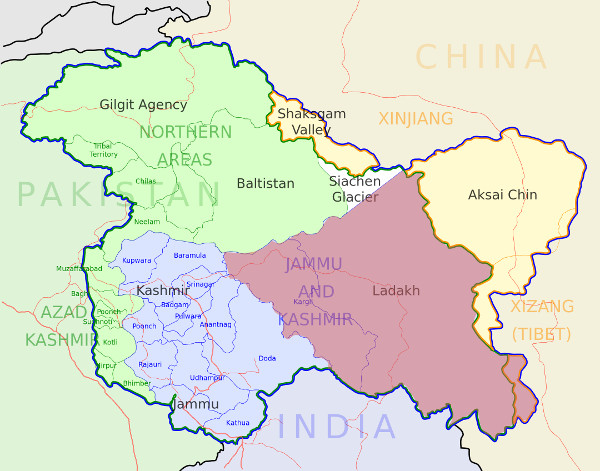
Markha Valley Hike Itinerary
Below is a detailed Markha Valley Trek itinerary. Please note that this is a typical itinerary that we would expect many operators to adhere to. However, some tour operators offer variations on this route.
For example, it is not uncommon to start from Spituk and follow the route that leads to Hemis.
Day 1-3: Arrive Delhi - Transfer to Leh
From Delhi International Airport, you will need to take a domestic flight to the city of Leh. It is worth spending a day in Delhi if you have the time, as well in Leh, where you can visit Leh Market, Leh Palace and Shanti Stupa.
If you have more time, it is worth getting a taxi to visit the Shey Palace, Likir, Basgo and Alchi Monastery, Sangam and Thickset. If you’re lucky, you’ll witness the Grand Hemis Festival at Hemis monastery.
Day 4: Leh to Chogdo via Martselang (4½ hours)
You will need to get a jeep from Leh to the starting point at Martselang (3600 m). As you drive, you may be given the opportunity to visit the Palace of Ladakh . The trek begins as one enters the Hemis National Park, where, if you’re lucky, you may glimpse endangered wildlife such as the elusive snow leopard, Tibetan wolf and the great Golden eagle. You will trek for several hours to the small village of Chogdo (4000 m).
Day 5: Chogdo 4000m – Nimaling 4700 m via Kongmaru La 5260 m (6-7 hrs)
Today begins with a steep ascent that leads to your first mountain pass – Kongmaru La (5260 m). The climb is worth it though as you get outstanding views of the north face of Kangyatse (6400 m), Zanskar and the epic Karakoram range . After taking in the view you then descend down towards the greener pastures of Nimaling. It is here that you will meet villagers who spend the summer months tending their herds. You camp the night here.
Day 6: Nimaling – Hankar – Markha 3650m (5-6 Hours)
From here, you begin the descent to the village of Hankar. You begin by walking through lovely green pastures whilst also taking in the Himalayan wildlife such as the Marmot, Mountain Vole and Weasels. You then cross a cool mountain lake. This is the perfect place to take lunch and enjoy the stunning scenery. As you continue down you reach the irrigated farmlands of Thochungtse. At the campsite there is a lovely spring that is well known throughout the region for its medicinal properties!
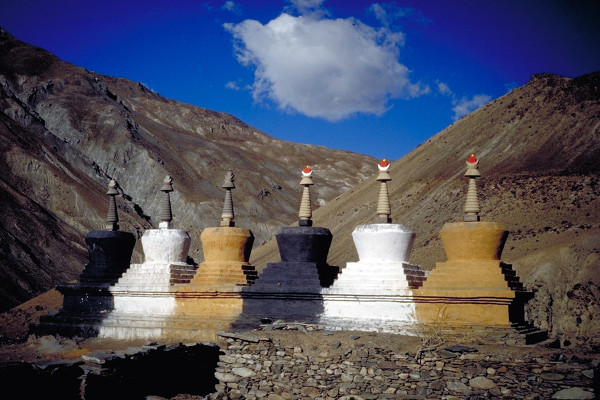
Day 7: Markha to Skiu
Today, you head for Skiu via Markha! Along the way you will make several river crossings. Once at Markha you will have time to explore the village before pushing on to Skiu. Once out of Markha you will descend through the small provinces of Nakdi , Sarah and Hamburjah and Pentre. Each province is only inhabited by 2 to 3 families roughly. After trekking through lush flatlands, you reach your campsite at Skiu where you bed down for the night.
Day 8: Skiu to Shingo 4125m (4-5 hrs)
Today, you follow the Zankar river upstream to the small village of Skiu. Here you will turn away from the main river and follow the stunning gorge up into Shingo. You camp overnight here.
Day 9: Treks to Rumbak 3800m (6-7hrs)
From Shingo, you climb gradually as you ascend over the Ganda La pass at 4850 meters. From there you pass Yurutse and continue down to your camp near Rumbak.
Day 10: Rumbak to Stok 4200m via Stok la 4900m (5-6 hrs)
Today is a big day. You begin your steady ascent up to the base of Stok la (4900 m). From there your trail becomes steeper as you climb ever higher to cross the pass. However, you’ll be rewarded along the climb with stunning views of the Indus valley and the incredibly colourful rock formations of Stok la. After crossing and taking in the amazing vistas you then begin your decent. You take the trail along the mountainside until you reach the village of Stok. From here you will need to arrange transport back to Leh .
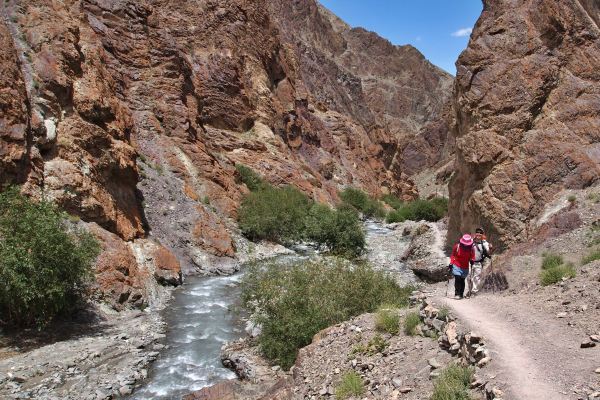
Photo by Kevin
Markha Valley Trek FAQ
How much does the markha valley trek cost.
The cost of an Markha Valley Trek varies depending on how you choose to operate your trek. If you decide to the trek the route without a guide, then your costs will be considerably cheaper. Here's a rough estimate: Tour Agency: ~$600 – 1,000 for a cheap local agency to ~$1,500 – $2,000 for a Western trekking agency. You could do an independent trek for $25 per day potentially once on the trekking route.
However, hiking independently does pose problems. Firstly, there are a number of routes and finding your way can sometimes be tricky. Your guide will also know the best places to eat, sleep and take rests whilst also introducing you to many local people along the way.
Other costs include:
- Visa, Vaccinations, Insurance etc: ~$300-$500
- Equipment (buying and hiring): ~$500-$800
- Flights to Leh: ~$1,000
- Tips: ~$100-$200
- Misc (additional food, unplanned travel / hotels ect): $200
How many miles is the Markha Valley Trek?
The Markha Valley trek takes around 6-7 days to complete, starting in Leh. Depending on the exact start and end point, the Markha Valley hike is approximately 50 miles (80 kilometres) in distance. Total elevation gain / loss is about 2500m / m, with a max elevation of 5260m.
Are permits required for the Markha Valley Trek?
No, permits aren't required for the Markha Valley trek.
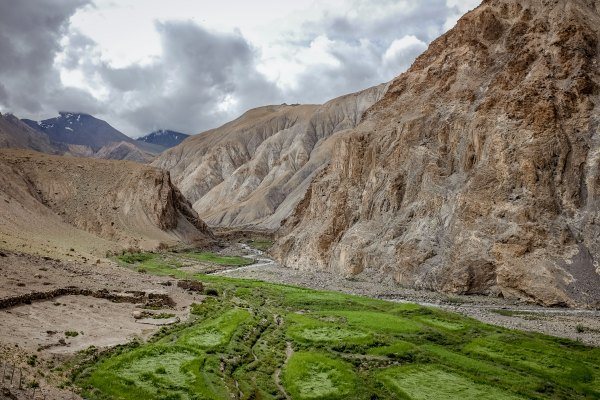
When is the best time to complete the Markha Valley Trek?
The best time to hike the Markha Valley trek is from June to October with the high season being in June and July. The monsoon season barely affects the region and you should experience little rain when trekking in this period. That being said, downpours do happen, and you must wear appropriate gear. During winter the trek experiences heavy snowfall and makes the area very isolated.
Is altitude sickness a risk on the Markha Valley hike?
Yes, the Markha Valley Trek is very much a high-altitude trek. At its highest point – Kongmaru La – you’ll be standing at 17,060 ft.
Whilst there are several high passes, the itinerary offered by all operators gives trekkers time to acclimatise to the altitude. Nonetheless, it is important to have a detailed understanding of the risks associated with high altitude trekking and how the body acclimatises.
We recommend you read our detailed article on Altitude Sickness and Acclimatisation .
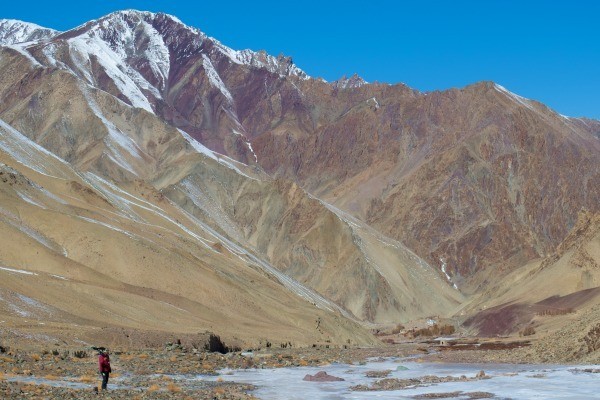
How difficult is the Markha Valley trail?
The Markha Valley Trek is fairly challenging. You will be trekking for 4-7 hours a day for over a week, so you will need to be in good physical condition. There are several high-altitude passes to cross and several steep climbs with the potential for slippery scree. The best way to prepare for this is to get as many miles under foot on hikes in your home country.
What gear do I need to hike the Markha trek in India?
Trekking in the Ladakh region requires a number of essentials like the following clothing and equipment:
- base layers
- hiking pants
- down jacket
- rain jacket
- hiking poles
- hydration bladder
The Markha Valley trek is both a fun and challenging trek that exposes you to a range of altitudes and fluctuating temperatures, especially between night and day.
Many pieces of equipment can be rented or bought in Leh, but we recommend bringing the most important pieces of gear with you. To help you plan and prepare for your trek, we have written a detailed packing list for multi-day treks .
Are there any recommended guidebooks for the Markha Valley hike?
There are a number of excellent guides we recommend for the Markha Valley Trek:
- Trekking in Ladakh by Radek Kucharski.
- Trekking in Indian Himalaya by Lonely Planet
- Trekking Guide to the Western Himalayas by Depi Chaudhry
- Ladakh: The Essential Guide by Partha S. Banerjee
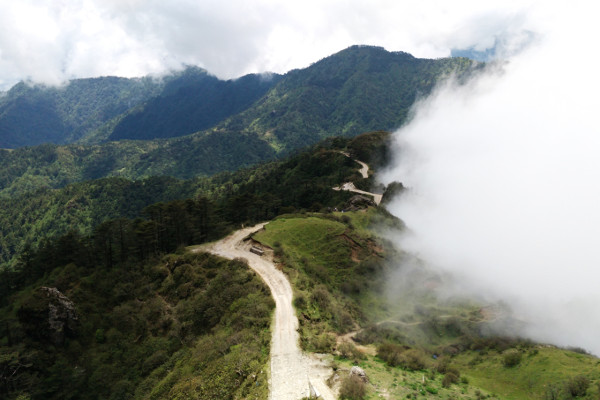
Are there other routes besides the Marhka Valley?
Absolutely. We also recommend doing the Chadar Trek , Singalila Ridge Trek and Ladakh Treks for unparallelled sightseeing and experiencing Indian culture and history first hand.
Continue browsing
See more information on India . Or check out these other Indian Hiking articles:
- Himachal Pradesh Hikes
- Uttarakhand Treks
- Trekking through the Roopkund
- Hiking the Arunachal Pradesh
- Best hikes in India
About the author
Mark Whitman
Mark has trekked extensively in Asia, Europe, South America and Africa. He founded Mountain IQ in 2014 with the sole aim to be the best online information portal to some of the most popular mountain destinations around the world. When not writing for Mountain IQ, Mark is out exploring the outdoors with his wife!
Leave a Reply
Your email address will not be published. Required fields are marked
Hey! Great info! I used your site to prepare the Anapurna trek and now heading to trek the Markha valley. I had som question about it: It seems you did it in reverse compared to other descriptions I have seen, what is the reason? I will do it in June, do you recommend taking a mattress or are the homestays on the way ok? Sleeping bag? Cheers Kevin
Hi Kevin, You can do the route either way, both routes involve going over high passes relatively early in the trek so make sure you are well acclimatised. Homestays have beds with mattresses, but you will want to take a 4-season sleeping bag as well. All the best!
UPDATE JUNE 2023 The small stream in the valley from Nimaling to Chogdo is overflowing with melting water at the moment. As there are 20+ river crossings it is extremely dangerous to descend that way. If you can avoid this part and have time to return the way you came up, do so! After a really nice and easy trek up to Nimaling, we attempted to climb down from Nimaling to Chogdo on the 25th of June via the Konmaru La East Pass. The first bit after the pass, was steep and a little sketchy but well manageable with some experience and sturdy footwear. Unfortunately after that we were facing massive amounts of water flowing down the valley to Chogdo. After crossing the river twice (slipping and falling, almost losing our backpacks and hiking poles) we decided to wait until the next morning as water levels were expected to go down during the night. Which means we got stuck halfway on the mountain at 4500 meters and ended up staying the night emergency bivouacing (sharing 3 sleeping bags and one emergency bivouac bag between the 7 of us). We were lucky to be a group of (semi-)experienced trekkers who could make it down safely the next morning starting at around 4.30 am. Moreover, travel agencies and locals in the camp in Nimaling do not seem to care or do not know any better, so do not expect warning from their side. Also there is no reception on the descend and even satellite phones do not work as they’re blocked in Ladakh. Stay alert and safe!
Thanks for the local insight Anna. Very helpful!
Thanks for the detailed information! I really appreciate it. Can I ask you a question? I'm planning to do this trek in August and am planning to bring my 64-year old mother along. She's very fit and healthier than most 50-year olds, but in combination with the pretty sharp increase in altitude, I'm not sure if the Markha Valley Trek is the best choice. May is ask you about your opinion about this? And if your advise is negative, is there another trek in Ladakh that you'd recommend?
Thanks a lot!
With kind regards,
Hi Merijn, I think you’re mum would be fine on the Markha Valley hike, but if you’re concerned there is an easier route that some operators offer inn te Nubra Valley. Hope that helps!
We work with local guides to offer great value adventures at unbeatable prices
Choose Trek
Customise Trek
Suggest me a trek
Rent a gear
Volunteer Program
Blogs & Articles
Discounts & Offers

Markha Valley Trek
Max Altitude
Trekking KM.
22,500 /Person
- +5% GST (Goods and Services Tax)
- Leh to Leh | included transport
- Rs 21,000 Trek Cost & Rs 1,500 Transportation (All included in the cost)
Help & Support
- +91 819 100 4846
- 10:00 hrs to 18:00 hrs Monday - Saturday GMT +5:30 Sunday Closed
- [email protected]
- Cost & Cancellation Terms
- Risk & Respond
How To Reach
Trek essential, important links, fixed departure.
- Trail Type Cross Over Trail
- Rail Head Accessible by Manali-Leh or Srinagar-Leh highway
- Airport Leh airport (Kushok Bakula Rimpochee airport)
- Base Camp Leh
- Summer Treks (Mid Apr - Jun)
- Monsoon Treks (Jul - Aug)
- Autumn Treks (Sep - Mid Nov)
- Services from Leh to Leh | Included Transport
- Meals Meals while on trek (Veg + Egg)
- Stay Camping (Twin sharing) & Hotel/Guesthouse
- Region - Ladakh
- Duration - 7 Days
- Grade - Moderate
- Max Altitude - 17100 Ft.
- Approx Trekking Km - 61 Kms.
Located in the northern part of India, the union territory of Ladakh lies in the westernmost part of the Himalayas in the close vicinity of the Karakoram Ranges. The capital of Ladakh, Leh, the most desired adventure hub, is popular for its raw and arid thrill and a gateway to burned-out trails. With the Markha Valley trek , one gets to rediscover the parched region of the mighty Himalayas. The mysterious ride of 8 days, exhibiting lush green to yellow barren landscapes, passing alongside the Indus River will be borne in your mind for a lifetime.
Markha Valley is the largest valley in the region. Of course, Leh is the starting point of this trek, which is an added advantage to exploring the Buddhist monuments in Leh. You will be astonished to traverse through the tiny hamlets as you gain altitude. Surprisingly, these villages host cafes or tea houses serving to rejuvenate hot drinks when you are tired from the strenuous hike. One after another, Rumbak, Yurutse, Skiu, Markha, Hankar, and Nimaling settlements will revitalize you. Not only that, most of the villages have preserved monasteries, ruined forts, and temples. Amongst them, the Tacha monastery is an eye and heart catcher that lies between the mountains.
Though the trek goes through dry regions, the Indus, Markha, and numerous streams will come your way. Since the trail goes through Hemis National Park, all its treasured fauna, mountain sheep, arghali, rabbits, and snow leopards, can be spotted at every camping site. Ganda La and Kongmaru La are the two cardinal passes to be crossed en route. These passes are known for the panoramic views of the infinite Karakoram and Ladakh ranges. The stunning sights of K2 mountain, Stok Kangri , and Kang Yatse peaks are fulfilling and the motivation of this trek. On clear days one can get to see the distant Tibet region. Just a small trek ahead of Markha Valley and you will reach the base of Kang Yatse Peaks .
This is not one of those typical treks that retrace the same path while descending. Therefore, you get a wider and non-repetitive insight into Ladakhi Himalayas. Each day reveals mesmerizing views concealed behind the mountains.
Who can participate
- Age; 15 years.
- Experience of any high altitude trek, at least 1 treks of 4,000m/13,100ft.
- The climber must be fit and have sufficient stamina to cover 5 km of distance in 30 minutes without a stress.
- The climber should be able to carry a 12-16 kg backpack.
Health Awareness
- Pulse rate at rest must be in between (60 to 90 beats per minute)
- Blood Pressure Reading must be in between (DIASTOLIC 75 – 85, SYSTOLIC 100 - 130 mm Hg)
- Respiratory rate at rest must be in between (12 to 20 breaths per minute)
- Should not have Liver and kidney issues
- Should not have Diabetes Mellitus, Bronchial Asthma, Epilepsy, Heart problems, Hypertension etc
- No pacemaker implant
- People with the Sinus issues please contact to trek coordinator before booking the trek
- If your BMI is not normal, Please contact our Trek coordinator before Trek booking.
Government Employees {SCL}
Government Employees can avail the benefit of Special Casual Leave (SCL) when you join us for a trekking expedition. As per the rules of the Pay Commission, Special Casual Leave can be availed for up to 30 days in a calendar year for trekking/mountaineering expeditions through a registered organization. Trek The Himalayas is a registered adventure tour operator by Indian Mountaineering Foundation (IMF) and Ministry Of Tourism (MOT) Trekkers have to apply for leave at least 20 days before trek departure date.
- Junior trekkers (below 15 years) should have a company of parent/guardian.
- Trekkers between 15 to 18 years can come solo with the disclaimer form signed by parent/guardian.
- Medical & Disclaimer Form (Mandatory Documents) Click here
- Altitude:- 3,500 m/11,500 ft
- Check-in Hotel
- Briefing about the trek at 5 pm (mandatory)
- Bring a copy of ID proof and 2 photographs. foreigner, a copy of passport and visa
- The network is available (only post-paid)
- ATM is available
- Can purchase or rent trekking equipment from Leh
- A visit to any very high altitude place or pass is not advisable
- Consumption of alcohol and smoking is strictly prohibited
- Stay in hotel
NOTE: Markha Valley Trek is of 7 days and the highest altitude is of 17,100 ft. If you are looking for more challenging adventure in Leh try out the Twin Peaks Expedition . You can go for either Kang Yatse II or Dzo Jongo Peak as well.
Markha Valley trek begins from Leh. Arrive in Leh by flight or train. Take it slowly once you arrive in Leh. Since it is at the hazardous height of 11,000 ft direct landing at this height may trigger AMS. Make sure you rest well and do not strain your body during your stay in the hotel. Leh has gained popularity as the adventure capital of India. It is quite famous amongst wanderers, which you can evidently see as you roam here and there.
Cafes are loaded here which are hanging out places for adventurers. There is a good network connection in Leh and has ATMs. Leh is a good option to fill up your things to carry list if you have forgotten any item. Although cafes are in close vicinity, try to stay away from alcohol and avoid smoking. Apart from that, Leh is also known for monasteries, palaces, and temples. Make sure to visit them as you enjoy your small treat in Leh. You can also explore the local market in Leh and try the local cuisine. Staying outdoors will help you acclimatize to the altitude. Reserve the evening for rest. Sleep well and let your body acclimatize to the altitude.
- Acclimatization and sightseeing in Leh
- Can visit monasteries: Shey, Thiksey, Sangam, and Hemis
- Avoid river rafting, you can plan it after your trek.
- A visit to any high-altitude place or pass is not recommended.
- Note: Downhill cycling tour around Leh without straining body.
This is an extra day added to the itinerary to help you get acclimatized better. Therefore utilize this day and try to stay outdoors. Acclimatization days in our treks are used to give your body time to adjust to the thinning air at high-altitude conditions. Several changes occur in your body while trekking in high-altitude regions and the purpose of acclimatization is to allow your body to operate optimally in a decreased oxygen level environment.
Leh is a major hub for adventure as well as a culturally rich center. It presents innumerable opportunities for sightseeing starting from the monasteries and temples, the local market as well as many places serving delicious local cuisine. Today, you can hike up to the Shey Palace, Thiksey Monastery, and Thiksey Gompa to experience the Buddhist culture. Thiksey Gompa is the largest in central Ladakh, located on a hill. Avoid gaining height by hiking to nearby passes or valleys. This is only to avoid stressing your body, as it may hinder the process of acclimatization.
Additionally, you can interact with the locals and fellow travelers to gain some knowledge about the adjacent areas. Roam in the Leh city and the Leh Bazaar. You can collect souvenirs from a variety of shops. You must spend the sunset at the Shanti Stupa, which is known for its dazzling lights in the evening. Say goodbye to the wonderful Leh and rest in your hotel. Your actual trekking day begins tomorrow.
- Altitude: Chilling - 3,200 m/ 10,500 ft; Skiu - 3,400 m/ 11,150 ft
- Drive Distance: 65 km | Duration: 2 to 3 hrs (Leh to Chilling)
- Trek Distance: 9 km | Duration: 4 to 5 hrs (Chilling to Skiu)
- Altitude Loss: 100 m/ 350 ft
- Drive through Gurudwara Patthar Sahib, Magnetic Hill, and the confluence of Indus and Zanskar
- Accommodation in homestay/ camping
Get set as your real trek journey commences. You will be riding along the skillfully paved roadways crossing marvellous landscapes. Throughout the road, you will encounter military camps decorated with colorful big rocks around the camps. Do not miss Gurudwara Pathar Sahib on the right and Magnet Hill on the left as you move ahead. The Stok Range remains on the right until it vanishes slowly when you reach Hemis National Park. You will be pleasantly surprised once you reach Sangam. Indus and Zanskar rivers, both bottle green, yet so unique, form the most spectacular confluence. This point is also famous as starting end for rafting. Take a diversion here towards Chilling. The surrounding view henceforth changes magically. The open terrain beside the road enters into the closed valley. Valley has stunning purple, black, and grey shades of the mountains. Juniper and tall alpine trees will border the route as you cross the Zanskar river over green iron bridges. Take a deep breath once you get down at Chilling, as the walking will begin in a few minutes. Chilling is the point where the Markha River merges into Zanskar.
The trek ahead incepts a steep ascent going through Zingchen Gorge. Amidst you will also cross the river on a trolley at Kaya-Do place. The trail many times comes across the river. Skiu will mark the first camping in the tents. It is located at the confluence of rivers Shgri Nala and Markha. Skiu village is largely divided into two sections, upper and lower village. Lower Skiu has 12 houses quite close to each other. A small trudge, old monastery, and ruins of a palace separate it from upper Skiu. There are small white stupas and mani stones laid towards upper Skiu. Markha River lies on the right of the village.
Most of the places here offer homestays. Relax after a mini-trek, while looking forward to the upcoming trek.
- Altitude: 3,700 m/ 12,200 ft
- Trek Distance: 16 km | Duration: 7 to 8 hrs
- Altitude Gain: 500 m/ 1050 ft
- Longest day but normal and plain slope.
- Markha is one of the largest villages in the valley
- Cafes on the way.
- 2-3 river crossing
- Monastery and palace visit at Markha.
Start fresh for the actual first trekking day. Be vigilant about birds and animals. Markha valley harbors enormous wildlife. Magpie birds will be visible right after you step out of the house. The trail is quite evident and well-paved intermittently. The Markha River will remain escorting on the right, which incepts from Kang Yatse peaks. In an hour a cafe can be spotted, take a small break here and keep walking. The trail is enclosed by the valley that goes through sparse forest cover. After another hour’s trudge and the first wooden bridge comes to Zanpa Yoakma.
In about 25 minutes another coffee shop at Hamourja is waiting for you to rejuvenate. You will cross the Markha River a couple of times during the trek as you pass through various winter settlements containing Lhatos (religious shrines built for the local deities) as well as Mani walls (walls made of stone inscribed with prayers). Look out for black sheep, deer, and mountain goats on these banks. Keep walking straight to Nagding village for another 40 minutes. Right in front of the houses spot meditation caves at a height on the valley walls. These caves are believed to be having paintings from the 20th century. The banks of the Markha River get wider and you can find yourself stepping in the powdered sand. Enjoy the feeling of Himalayan sands.
After about 1 hour from Nagding village, a big entrance of Sara village appears. The entrance is decorated with skeletons of wild animals. Unlike Skui, Sara seems like an open area. Sara Village is also home to a monastery and ruins of an old castle which is believed to be the resting spot of the Royal families on their way to Srinagar in ancient times. You may also see wheat plantations and Bushoi (a cotton-like flowering plant and also a natural painkiller). Also, a unique thing that you will notice is that the entrance to Sara village is decorated with skulls of animals like Yak or Sheep. These animal skulls are perceived as a sign of pride for the locals.
From here, the first tea houses arrive immediately after 30 minutes at Chalak village. The Chalak Village comes after crossing a wooden bridge. The village has houses placed on small hills with stone protection shelters for domestic animals at the base. Visit any of the villagers and they will greet you with Namkin Chai and biscuits. Re-energize with affectionate talks and hot drinks. You will see Barley fields in the village. From Chalak, it is a gradual ascent up towards Markha and you will pass by the section of the trail marked by Bharal horns. The destination is 2 hours away from here.
At every small distance, you can find Mani stones laid around white stupas. These stones are engraved with Buddhist prayers, some of them in the Sanskrit language too. Be humble in front of these historic symbols. Do not dare to touch these stones. The villagers believe these stones are protected by some powers, and any harm to them will cause harm to that person. Do not forget to notice the ruins of the palace at every turn in the valley. This can be figured out by flags at a height on small temples. These palaces were considered viewpoints and signalling points during the reign of the Kings. Markha Village is considered the largest village, you can find numerous houses, scattered away. You will have to walk in the running stream of the Markha River to reach the Markha village. The water in the Markha River can be thigh-high at some points, so it is better to take off your shoes and socks and pull up your pants to cross the river. The cold water will bring back all the energy. In 20 minutes, you can see the hamlet. Markha is the biggest village in the entire valley and comprises 25 houses.
- Altitude: 4,100m/ 13,400 ft
- Trek Distance: 13 km | Duration: 8 to 9 hrs
- Altitude Gain: 400m/ 1200 ft
- Teahouse at Umling Village
- Last Village Of The Valley
- View Of A Beautiful Monastery
- The path will intersect the River a number of times
- After Umlung, you will have the first look at Mt. Kang Yatse (6,400 m)
- Packed lunch on the way
Take the most advantage of the innocence of the salient villages because today will probably be the last habitats on the route. Today is one of the most beautiful days of trekking and the views start opening up as you traverse the upper Markha Valley. The trail is beautiful and refreshing when it merges with flowing rivers and streams. These water bodies can also be crossed over a bridge. Umlung village is a small village and will serve as the last teahouse of the trek with yet another serene monastery to your sight.
After Umlung you can get the first sight of Mt. Kang Yatse(6400m). It seems as if the peak is calling you! Follow its voice, again overcome the river several times and enter the Hankar village. Try to spot the magically placed Tacha monastery on a mountain. It is the last hamlet of the trek and your refuge place.
- Altitude: 4,800 m/ 15,800 ft
- Trek Distance: 7 km Duration: 3 to 4 hrs
- Altitude Gain: 700 m/ 2,400 ft
- An easy trek
- Amazing view of Kang Yatse
- Amazing view of Tigu Lakes
- Accommodation in tent
Get all enthusiastic, after yesterday’s tough trek, today will be an easy and short trek. Start walking and in 1 km you will find diversions or paths separating out. The other route goes to Rupshu and Zanskar. Keep walking on the left path until a stone bridge. This marks that you are on the right trail. Henceforth, you can see many diversions, please be careful and follow the trek leader/guide. In the next 2 hours, the pastures of Thochuntse become visible. There camping sites and tea houses here. Thochnugtse also has some lovely green fields which are quite a contrast to the aridness of the desert in Ladakh. Keep walking slowly, enjoying the view. The trail is quite steep for like an hour after which becomes a gradual incline.
Try to engulf yourself in nature and move slowly just as you focus on the Kang Yatse peak. The peak seems to grow bigger and bigger. Surprisingly, tranquil twin lakes also come along the path. From the lakes, it is a long and gradual descent to the plateau of Nimaling. The trails enter into a huge grassland after a few fights crossing streams of the high altitudes. Sheep, mountain goats, and sometimes rabbits are found grazing at Nimaling. It is a pleasant camping place. It is the highest point you will attain on this trek and being the highest campsite Nimalaing offers spectacular views of the Kang Yatse Peak on the right. There are instances of snowfall at this site hence we prepared for that. Above all that, just try to merge into the high world and sleep in peace.
- Altitude: Kong Maru La - 5,200 m/ 17,100 ft; Chokdo - 3,700 m/ 12,100 ft
- Descent to Chokdo (Shang Valley) from Kongmaru La is a little long
- The highest altitude pass crossing along the trek makes it a difficult day
- Cross a stream terrain and proceed to the north
- It will take 2 to 3 hrs of a hike for Kongmaru La Pass
- Amazing views of Indus and Ladakh Range
- A steep descent and rocky terrain
- From Chokdo drive to Leh (2 hrs drive)
- Accommodation in hotel
This day will be nostalgic and exciting, as this is the last day of the trek landing at the highest pass of the trek. Kongmaru La is visible distinctly from Nimaling on your left. Also, this day will be filled with surprises. Cross the stream near the campsite and then you will have to follow the clear trail to reach the pass. After a strenuous climb of 2 hours to Kongmaru La pass, you will be pleasantly welcomed by the Karakoram Range Mountains and the excellent array of peaks. Hold your breath for the mind-blowing sight of the huge K2 Mountain, the second-highest peak in the world. There are prayer flags moving along the wind. To your surprise, there is a good network connection from the pass.
The trail then gradually descends, coinciding with villages to say goodbye. The immediate trail from the pass has a steep and narrow descent which later opens to Chikirmo village. The descent can be pretty hard on your knees as it is quite steep. Throughout the route, you can get indulged in the scenery of the Indus Valley and the Ladakh range. After a gradual climb down and rocky terrain, you will reach Chokdo. This is the last stop of the entire trek, which also has many homestays. Get into the pickup vehicle that will take you to Leh.
Take a sigh of relief in this village, as your next stop will be the last stop, Leh. The further road is descending showing the monastery and Hemis Gompa. Fill them in your eyes, heart, and mind. Close your eyes to rewind the entire Markha Valley diaries.
- Pick Up Place
First of all everyone to reach Leh.
You have to come to our hotel, once you book the trek our trek coordinator will share with you the hotel name, location and contact person number.
Choose any option to reach Leh
- The easiest and best way to travel is to fly to Kushok Bakula Rimpochi Airport located in Leh. It is just 4 km away from the main city. The airport is well connected to Delhi and also receives flights from Mumbai, Srinagar, Jammu, Chandigarh and other general destinations in India. Even international travelers can fly directly from major cities like Kolkata, Mumbai and Delhi. You can find taxis outside the airport or book a cab to reach the required destination.
- There are two road routes to Leh
- Manali (Himachal Pradesh ) to Leh via Baralacha La, Lachulung La and Tanglang La and It covers a distance of 500 km.
- Srinagar to Leh via Zoji La, Lamayuru Lunar Landscape and Kargil and It covers a distance of 450 km.
- You cannot reach Leh directly by train as there is no train station in Ladakh. The nearest railway station is Jammu Jammu Tawi (700 km from Ladakh) which is well connected with Delhi, Kolkata and Mumbai.
- TTH’s Tata Sumo, Tempo Traveller or similar vehicles will pick-up you.
- Pick-up is included in the cost of the trek.
- If you wish to upgrade the transport service, please contact the Trek Coordinator.
You can take any option of Manali Highway, Srinagar Highway or direct flight to go back from Leh. Our services are up to hotel only and hotel check out time is 10:30 AM.
- Cancellation Policy
1. Accommodation: • Guest house in Leh on Day 1, day 2 and day 7 as per the itinerary. • Camping/Home stay during the trek. 2. All meals while on trek (Veg + Egg) : from day 3 lunch to day 7 packed lunch. 3. Trek equipments: Sleeping bag, mattress, tent (twin sharing), kitchen & dinning tent, toilet tent, utensils and crampon (if required). 4. First aid medical kits, stretcher & oxygen cylinder. 5. Mountaineering qualified & professional trek Leader, guide, cook and Support staff. 6. Transport from Leh guest house to Zinchen and return from Chokdo as per the itinerary. 7. Mules to carry the central luggage.
1. Any kind of personal expenses. 2. Airfare and pickup and drop from airport. 3. Food in Leh. 4. Any kind of emergency evacuation charges 5. Necessary permits, entry fees etc. 6. Mules or porter to carry personal luggage. 7. Anything not specifically mentioned under the head. 8. Insurance. 10. Environment fee/inner line permit : Rs. 600 per person
Things can be provided on demand and availability (participant has to pay extra for these things)
1- Satellite phone/setphone - is a type of mobile phone that connects via radio links via satellites orbiting the Earth instead of terrestrial cell sites like cellphones. Therefore, they can operate in most geographic locations on the Earth's surface.
2- Gamow/PAC HAPO Bag (Portable Hyperbaric Bag) - is a unique, portable hyperbaric chamber for the treatment of acute mountain sickness (AMS), also known as altitude sickness.
3- AEDs (Automated External Defibrillators) - are portable life-saving devices designed to treat people experiencing sudden cardiac arrest, a medical condition in which the heart stops beating suddenly and unexpectedly
Insurance is mandatory and can be obtained through TTH or other providers. Non-Indian rates are slightly higher, trek coordinator will share the balance payment link after booking. If you choose not to book through us, we will refund your insurance fee; email us immediately after booking for the refund.
Normally TTH expect to carry your personal luggage on your own, if you wish to offload your backpack, you can give it to Mule/porter. Charges of offloading backpack for entire trek:- INR 4200/- if you make an online payment, 10 days in advance INR 4500/- if you inform us after reaching Leh The backpack cannot weigh more than 11 kgs. Backpack should have waterproof cover. Suitcases/strolleys/ bags will not be allowed.
The fee can be paid by online transfer/Check deposit/Cash deposit/Demand draft. Instruction for payment will be forwarded along with your confirmation email. When your transfer is done, please e-mail us a confirmation mail with your transfer details, so that we can follow up your reservation efficiently.
Cancellation terms:
For the cancellation of services due to any avoidable/unavoidable reasons, Trek The Himalayas must be notified of the same in writing at [email protected] At the time we receive your written cancellation, refunds based on the total fare are as follows.
Cancellations prior to 25 days from the start of the Trip
Refund options
- 5% deduction of trek fee
- 100% cash voucher for any trip till one year
Cancellation between 24 days and 15 days to the start of the Trip
- 30% deduction of trek fee
- 100% cash voucher for same trip till one year
- 85% cash voucher for any trip till one year
Cancellation between 14 days and 10 days to the start of the Trip
- Book the same trek, in the same season, with any other batch
- 50% deduction of trek fee
- 80% cash voucher for same trip till one year
- 70% cash voucher for any trip till one year
Cancellation less than 9 days to the start of the trek
- Transfer your trek (same trek, same batch) to your friend
- No cash refund
- 20% cash voucher for the same trip till one year
- 10% cash voucher for any trip till one year
In the unlikely event that TTH cancels a trek prior to the scheduled departure date:
While it is extremely rare for TTH to cancel a trek, we understand that unforeseen circumstances or natural disasters may occasionally require us to do so before the scheduled departure. These circumstances could include continuous rain or snow, thunderstorms, snowstorms, landslides, floods, earthquakes, or any other natural calamity that poses a risk to the safety of our trekkers. Additionally, unforeseeable events such as local riots, curfews, pandemics, lockdowns, government orders, or any similar situations that compromise the safety of the trekking experience may also necessitate a cancellation.
In the event of such a cancellation, TTH will provide you with a voucher equivalent to the amount you paid for the trek. This voucher can be redeemed for any of our treks within the next year, allowing you to still enjoy an adventure with us at a later date.
- The issuance of a voucher is not applicable in situations where you are required to descend from the trek for any reason. The trek leader may make the decision to send you down from the trek due to factors such as insufficient fitness level, symptoms of Acute Mountain Sickness (AMS), high blood pressure, exceeding the designated turn-around-time, health concerns, or if you are found smoking, drinking, or violating the rules set for the trek. In such cases, the provision of a voucher does not apply.
In the rare event that TTH shifts a trek:
We would like to emphasize that weather conditions in high-altitude areas are highly unpredictable and can undergo sudden changes at any time, irrespective of the day. Additionally, circumstances beyond our control, such as natural disasters, political unrest, pandemics, and lockdowns, may impact the feasibility of conducting a trek. In cases where we are unable to proceed with an event due to such circumstances that are beyond our direct control, we will make every effort to provide you with an alternative trek that is safer and more suitable.
In such situations, we will issue a voucher to offset the cost difference between the originally scheduled trek and the alternative trek. This voucher can be redeemed at any time within one year from the date of issue. Please note that a refund fee or reimbursement of the cost difference is not applicable in these cases.
- Change of trek batch is dependent on the availability of seats in the batch
- In case of transferring a trek to a friend, he/she should satisfy all the mandatory requirements put forward by TTH
- TTH holds the right to change/cancel the policies, without prior notice
- Cash refund is applicable only in case of bookings made without using any promotional offer code or vouchers
Cash Voucher Terms:
- This is a non-transferable voucher
- The voucher cannot be merged with any other offer of Trek The Himalayas
- The voucher is valid for Trek booked directly with Trek The Himalayas in India
- To avail the voucher please use your register phone number or e-mail id
- All the other Terms of booking a trek with Trek The Himalayas are applicable to the voucher
- Trek The Himalayas holds rights to add/remove any of the Terms and Conditions without prior notice
Itineraries are based on information available at the time of planning and are subject to change. "Trek The Himalayas" reserves the right to change expedition dates, people or itineraries as conditions warrant. If a trip must be delayed or the itinerary changed due to bad weather, road conditions, transportation delays, government intervention, airline schedules, sickness, or other contingency for which TTH or its agents cannot make provision, the cost of delays and/or other changes are the responsibility of the participant. TTH reserves the right to decline, or accept, any individual as a trip member for any reason whatsoever.
- Personal Utilities
- Medical & Disclaimer Form (Mandatory Documents) Read more
- Health Awareness for Trekking in the Himalayas Read more
- Mandatory Documents to bring on a trek Read more
Fitness regime for:
Calculate Your BMI :
Your BMI value is
Congratulations, your body is in good conditions!
- If your BMI is normal, you can plan your fitness regime as mentioned.
- If your BMI is not normal, consult your trusted physician before you plan your fitness regime.
- If you're suffering from any chronic illnesses consult a medical practitioner.

Similar Treks
Bagini Glacier and Changbang Base Camp
Uttarakhand
Pangarchulla Peak Trek
Pin bhaba pass trek.
Himachal Pradesh
Pindari Glacier Trek
Winter kuari pass trek, kilimanjaro peak trek expedition.
Kilimanjaro Region
Panwali Kantha Trek
Satopanth lake trek, khopra ridge, sar pass trek, ranthan kharak trek, frequently asked questions.
While it is not mandatory to hire a guide for the Markha Valley Trek , it is highly recommended, especially if you are new to the area or inexperienced in trekking. A guide can help you navigate the route, provide information about the local culture and history, and ensure your safety throughout the trek.
The best time to do the Markha Valley Trek is from mid-June to mid-September when the weather is relatively mild and dry. However, it is important to note that the weather in the mountains can be unpredictable, and trekkers should be prepared for sudden changes in temperature, precipitation, and other weather conditions.
The Markha Valley Trek is a moderately difficult trek that requires a good level of physical fitness. Trekkers should be able to hike for 5-6 hours a day, sometimes at high altitudes, and carry a backpack weighing up to 10 kg. Prior trekking experience is helpful, but not necessary.
Yes, altitude sickness is a concern on the Markha Valley Trek, as the highest point on the trek reaches an altitude of 5,212 meters. Trekkers should take proper precautions, such as acclimatizing gradually, staying hydrated, and taking medication if necessary.
Accommodation on the Markha Valley Trek is primarily in basic guesthouses and homestays, with limited options for camping. Trekkers should be prepared for rustic conditions and bring their sleeping bags and other camping gear if they plan to camp.
The Markha Valley is home to a variety of wildlife, including ibex, blue sheep, marmots, and various species of birds. While sightings are not guaranteed, trekkers should keep an eye out for these animals and respect their habitats.
Yes, permits are required for the Markha Valley Trek , as it passes through the Hemis National Park. These permits can be obtained from the park office in Leh or through a trekking agency.
Trekkers should bring appropriate clothing and footwear for trekking in mountainous terrain, as well as a sleeping bag, camping gear (if camping), and a backpack. Other essential items include sunscreen, sunglasses, a hat, a water bottle, a first aid kit, and any necessary medications. It is also important to bring cash for food, lodging, and other expenses along the way.
The starting point of the Markha Valley Trek is the village of Chilling, which can be reached by road from Leh. Private taxis and shared taxis are available for hire, and some trekking agencies also offer transportation services.
Yes, the Markha Valley Trek can be done in reverse, starting from the village of Shang Sumdo and ending in Chilling. However, this route is less popular and may require additional planning and preparation.

- Treks in Himachal Pradesh
- Treks in Uttarakhand
- Treks in Sikkim
- Treks In Jammu & Kashmir
- Uttarakhand
- Himachal Pradesh

Markha Valley Trek Guide 2024: Highlights, Best Time, Cost, How to Reach and Itinerary
Table of Contents
No doubt Kashmir is the paradise on earth, therefore, it is the most desired tourist place. But very few of us are aware of the drier and barren side of this heavenly place.
The most desired adventure center, Leh, popular for its natural and arid thrills, is a gateway to the burned-out trails. With one of the most popular treks of the Ladakh region, i.e, the Markha Valley trek you will get to rediscover the parched region of mighty Kashmir.
It is a trek that allures adventurists across the world and passes through places with different enchanting landscapes. I am sure that the mysterious trek ride of 11 days, exhibiting lush green to yellow parched landscapes, passing alongside the great Indus river will be borne in your mind forever.

The Markha Valley Trek when winds onto the Hemis National Park and Rumbak Valley, will give you a rare opportunity to witness some animal species of the Himalayan belt and if you are lucky enough you might encounter a Snow Leopard.
Nonetheless, the valley is the home of several fauna species like the lynx, Ladakhi Urial (a type of goat), Arghali (great Tibetan sheep), Blue sheep, Red fox, Tibetan wolf, Dhole (wild dog), Marmot and Mountain hare. Also, this trail offers bird-watching opportunities.
Moreover, this Trek covers some human settlements like Rumbak village followed by Yurutse and Markha that leave you to contemplate over the rich indigenous culture of the Indo-Tibetans. You may also get a chance to enjoy a homestay in one of these remote villages. Further, the trekking trail will also lead your way up to the shrines like Lhatos and Mani before entering the Markha village.
The journey winds and trails up to the Kongmaru La at 5130 m, from where you can capture the breath-taking view of the hulking high Kang Yatze Peak and the Tibetan border.
The conventional trek trail commences from Spituk and heads up to Ganda La en route Zingchen and thereafter to Skiu, which is an isolated village and houses an old monastery and ruins of an old castle. From Skiu, the tracks lead to Markha and then to Shang Sumdo via Kongmaru La.
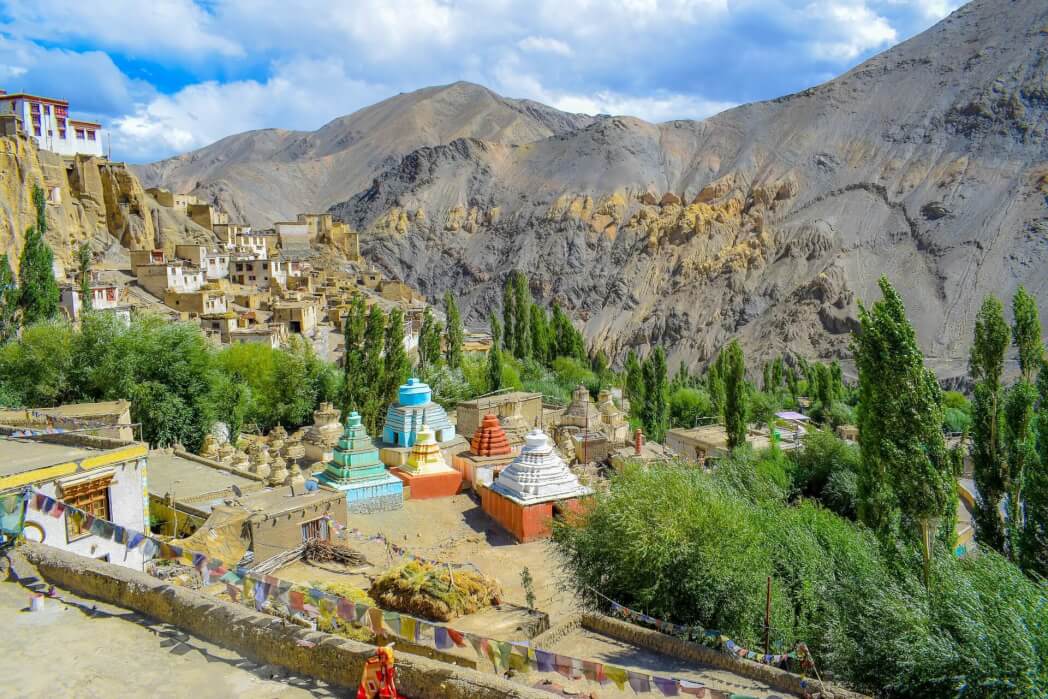
Where is the Markha Valley Trek?
Markha Valley is located between the Zanskar and Leh region of Ladakh in Jammu and Kashmir.
This valley runs parallel to the Himalayan range and is located at a short distance from Leh. Markha Valley trek has captivating, wild and barren landscapes and therefore, it is often called Little Tibet.
Strategically located, the valley offers the stunning views of the Ladakh and Zanskar ranges and also, the 21,000 ft Kang Yissay and the 20,086 ft Stok Kangri peaks.
Best Time to Visit Markha Valley Trek
The ideal time to visit Markha Valley is between June and mid-October. During this time, the weather is Ladakh is cool and pleasant and the average temperature ranges between 20 and 30°C in the daytime. Also, the highways leading to Ladakh are open for civilian traffic.
This is the time when Ladakh receives the bulk of its tourists. Most highways open up at the end of April or the first week of May. The weather clears up and one can enjoy their trip to Ladakh.
Read more: Hidden Hill Stations In India/
However, July and August are the best months for Markha Valley trek as during these months Manali-Leh and Srinagar-Leh highways are open for private vehicles.
Markha Valley Trek Highlights
- Get the opportunity to explore the motley Tibetan markets and historically rich Buddhist monasteries.
- Witness some of the most magnificent Himalayan sceneries throughout the picturesque trek.
- Get the opportunity to home-stay at remote mountain villages and interact with its sweet and simple inhabitants.
- Camp at scenic locations under the sparkling sky.
Markha Valley Trek Location
Sham Valley Trek is located in Ladakh and is a little ahead of Likir village, towards Khaltsey village. You may arrive at Likir monastery, where the track to Likir monastery meets in between Suspool – Bazgo. The trek is hardly an hour’s walk from the road.
Markha Valley Trek Cost
It’s a very subjective question and varies from person to person, like if you love luxury travel then the cost will be high but if you are a medium or solo traveller then its cost is low. So according to my point of view 10,000 rupees per person is enough
How to Reach Markha Valley Trek?
Kushok Bakula Rimpochee Airport is the main airport in Leh City. It has a number of flights that connect Leh with Delhi as well as few major cities in India. You can opt for air travel and have a very unique and heart-throbbing experience of flying over the mountains.
I would recommend you opt for road travel for reaching Markha Valley as road travel will make your trip much more interesting and enjoyable. You can also eat delicious food in dhabas located on the highways. Also, if possible take your own vehicle or else you can rent a self-drive vehicle of your choice.
If you do not have a car with you then it is better for you to hire a private taxi in Leh instead of hiring a shared taxi or depending upon public transport because shared taxi and bus would not be the correct decision as there are multiple places to be covered and you may not find a public transport towards these remote villages at all.
Read more: Sham Valley Trek Ladakh
Now coming to the route, Leh is connected to the rest of India by two major highways: (NH 1D) Srinagar-Leh Highway) and (NH-3) Manali-Leh Highway. The Srinagar-Leh Highway passes through Kargil and Zoji-La and the Leh-Manali Highway passes through famed Rohtang Pass and Tanglang La. It also passes through the upland desert plateau of Rupshu whose altitude ranges from 4,500 m to 5,500 m.
Itinerary for Markha Valley Trek
Day 01 ( arrival at leh ).
Take a flight from Delhi to Leh. I would suggest a morning flight. On arrival, take a taxi to reach the hotel. Then you can visit the local markets of Leh like the Tibetan market(for clothes) and the Moti market in the evening. Try to return early from the markets and take proper rest in the hotel.
Day 02: ( Leh – Shey – Thiksey – Hemis )
Today, you will be heading on a sightseeing tour to some of the important monasteries in the area. We will be visiting Shey Gompa, which was once the summer capital of Ladakhi kings; Thiksey Gompa, which is considered as one of the most beautiful structures in Ladakh and the famous Hemis Monastery belonging to Drukpa Order. Then, you may stay at the guest house.
Day 03: Leh – Spituk (drive) – Trek to Zingchan (3200 mts/10,496 ft)
Try to wake up today by around 6-7 am. I know it is quite difficult to wake up so early when you are on holiday. Yet, to make your trek trip special try to follow some tips. Then get fresh and eat a proper, light and healthy breakfast. Also remember to carry some biscuits, fruits, water bottles, and napkins along with you.
Then, you need to drive to Spituk, which is an hour’s journey away. We shall explore Spituk Gompa, which is believed to be over 500 years old. After visiting Spituk, we will start our trek and after passing a bridge and strolling southwest of Indus River, we will reach Zingchan Village. Then you stay overnight in the camp.
Day 04: Zingchan – Yurutse (3900 mts/12792 ft) via Rumbak
Post breakfast, you shall ascend to Rumbak from Zingchan and then trek along the Rumbak Nala via Yurutse Village, which has vast fields of barley and potatoes. Then, overnight stay in tents.
Day 05: Yurutse – Skiu (3100 mts/10168 ft) via Ganda La
Your trek today will end at Skiu, which can be reached by crossing Reach Ganda La (4900 meters). The pass offers a breath-taking view of the Zanskar Range and other hulking high peaks of the Himalayas. From Ganda La, there is a long descent to the village of Shingo.
The trek trail then leads to a gorge from Shingo Village, which is at a short distance from Skiu. At Skiu, you will see the confluence of the river from Markha Valley. Again, overnight stay in tents.
Day 06: Skiu – Markha (3800 mts/12464 ft)
An easy climb today from Skiu will lead us to Markha Valley and you will also witness several streams while trekking. Overnight rest in the tents.
Day 07: Markha – Thochuntse
Your today’s trek will be from Markha to Thochuntse. Also, to be noted that at Markha, there is a change in landscape and from now onwards the view of heavily forested sections will not be seen rather barren and rugged landscape will follow. Then, you will have to cross a river and come across Hankar en route to Thochuntse. Overnight take rest in the tents.
Day 08: Thochuntse – Nimaling (4700 mts/15416 ft)
Today morning, you will begin your trek to Nimaling. You will be crossing a number of gentle slopes and a chain of ridges. Also, there is a sequence of Mani Walls and chortens on the route. This is counted among the most impressive high valleys in Ladakh and is separated by Kangyatse Peak. Overnight rest in the tents.
Day 09: Nimaling – Kongmaru La (5150 mts/16892 ft) – Sumdo
After the breakfast, you will have to cross to the north of Markha and then ascend to Kongmaru La (5130 m), which is one of the highest pass in the region. After taking a good view of the surrounding snowy peaks and the Karakoram range, you will descend to the Martselang Valley leading Martselang Stream to the Sumdo Village. Overnight rest in the tents.
Day 10: Sumdo – Hemis (4 hrs trek) – Leh
Your trek today will be from Sumdo Village to Martselang. At Martselang Valley, the trek trail broadens into the Indus Valley. Then you shall take a jeep from Martselang Village. Moreover, you will also be exploring Hemis Monastery and then drive to Leh via Thiksey and Shey Gompas. Overnight take rest in the hotel.
Day 11: Back to home
Now your trip is has still not got over. You still have to reach your home. So, reach the airport in time to catch the flight to Delhi and also, for those who have come by road, I wish you a safe journey ahead. Do not forget to capture some photos and videos while driving through the hills, forests and then the plains.
I know you must be feeling quite tired and also sad at the same time because your trip has now come to an end. But I hope you enjoyed your trip to Markha Valley. Till then, keep on trying new trekking activities. We will meet soon with a new trek.
Ask us anything!
Frequently Asked Questions (FAQ)
Is it markha valley trek solo is dangerous.
No, Markha Valley Trek for Solo is not dangerous. But you have to prepare yourself before going on any trek.
Markha Valley Trek Best Time
The best time to visit markha valley trek is may to september.
Markha Valley Trek Difficulty
Markha valley trek difficulty is moderate.
Markha Valley Trek Distance
Markha Valley Trek Distance varies from place to place. For accurate answer just type the distance from your location to markha valley distance you get the exact distance.
- Share This Post:
Related Articles
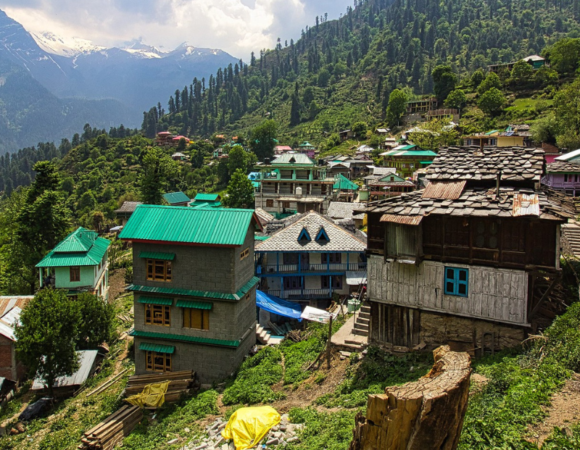
10 Best Hill Station In Himachal Pradesh, Highlights, FAQ’s
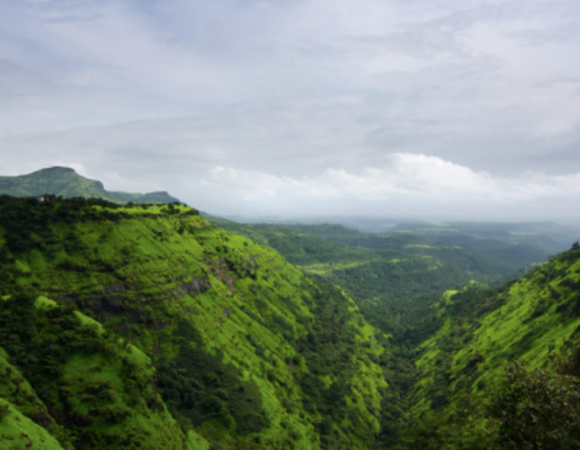
10 Best Hill Stations In Maharashtra, Highlights & FAQ’s
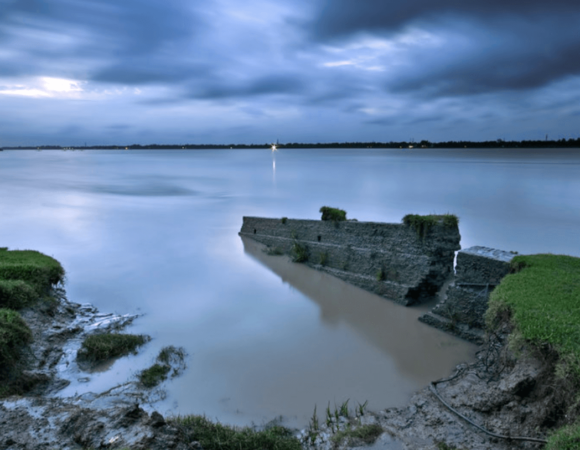
10 Best Hill Stations In West Bengal – Best Time, How to Reach Highlights & FAQs
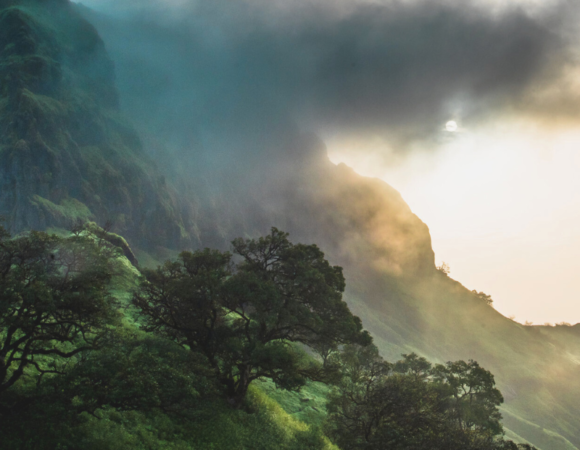
10 Best Maharashtra Trekking Places, Highlights, Treks & FAQ’s
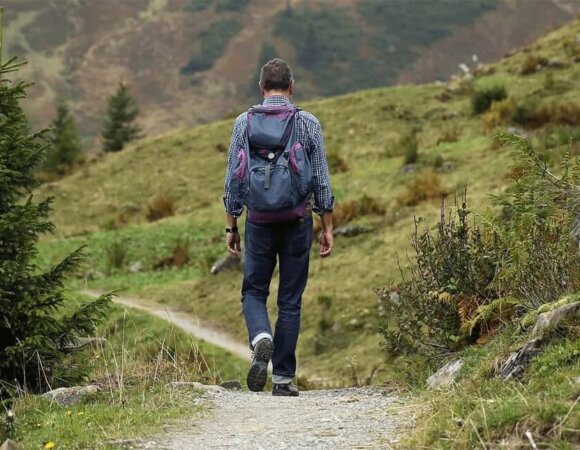
10 Best Trekking Places Near Delhi In 2024 & FAQ’s

10 Best Treks in Himachal That You Can Do in Winters
One thought on “markha valley trek guide 2024: highlights, best time, cost, how to reach and itinerary”.
[…] The most beautiful trekking spot and the most talked about place in India is Ladakh. The stunning snow-laced capes provide great relief to the heart. With an altitude of five, 200 m above sea level and stretching for about 65 km is this Markha Valley trek. […]
Add a Comment Cancel reply
Save my name, email, and website in this browser for the next time I comment.
Things To Carry On Your Trek
Book your experience with us.
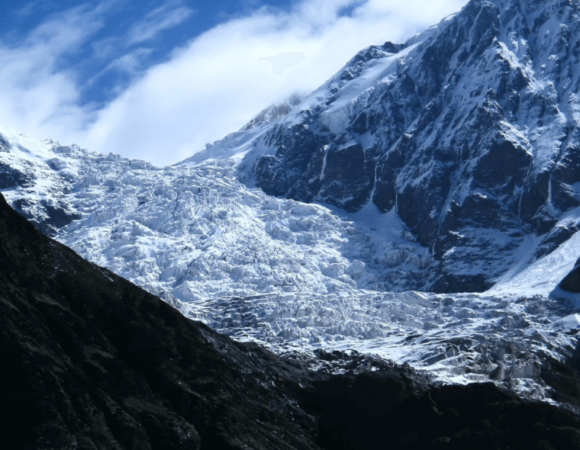
- Amenities 5
Pindari Glacier Trek
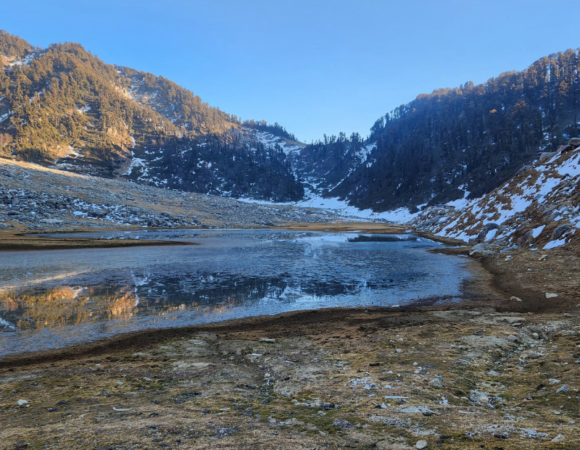
Kareri Lake Trek
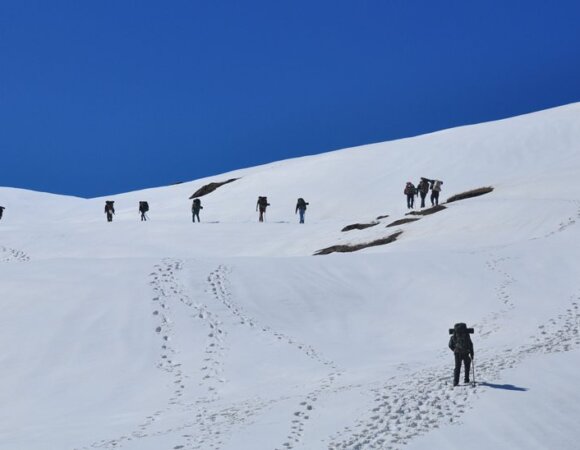
Panwali Kantha Trek

Nag Tibba Trek
Book your unforgettable experience with us, reset password.
WhatsApp Us
- More Networks

Markha Valley Trek
- Book the tour
- Trekking in Ladakh
Duration: 6 Days/ 5Nights
Max Altitude: 17,060ft
Pickup: Leh
Difficulty: Moderate
Placed in the magnificent landscape, Markha Valley Trek is the finest ever trek of Ladakh. Set in the picturesque river valley called Markha, this trek gives you the best feel of the mighty Himalayas in its 7-day duration. The trek goes over the majestic cold, arid deserts of Markha which is part of the famous Hemis National Prak.
The trek is a bundle of high-altitude passes, river crossings, rocky canyons, and vast wildlife. While on this trek you get a magnificent view of Mt Kang Yatse on the third day of the trek. This near pyramid peak has an altitude of 21300 ft. It also goes to the high mountain pass of Kongmaru La which has an altitude of 17060ft.
You will get a lifetime view from this pass of the wide range of the Indus Valley and Ladakh mountain ranges.
Markha Valley Trek India is a grand trek of Ladakh and Kashmir region. You get an amazing view on the trail amid barren mountains for which Ladakh is famous. The trek exposes you to the villages of Markha Valley.
- Book: Leh Ladakh Tour Packages
- Check: Treks in Ladakh
The modest mud houses are set on the beautiful trail of this trek. There are local houses and traditional Buddhist religious motifs that you will see on and off during this trek. The culture and architecture of the valley will mesmerize you.
The best part of this trek which is quite different from other treks is the stay in homes. On this trek, you can lodge in one of the local houses. This makes the Markha valley one of the rare tea-house treks in the Indian Himalayas.
Highlights of Markha Valley Trek
- Markha Valley: Markha Valley is the biggest attraction of this trek. It is the otherworldly location with the remotest of villages. It has scenic panoramas and gives a wide view and an exciting look at the Himalayas. This valley is also famous for its Buddhist monasteries. The valley holds villages that have mud houses and the ancient tribes of Ladakh.
- Mountain Views: This trek has the contrasting landscape of Ladakh and Zanskar Valley. It gives the best view of Kang Yatse Mountain and Stok Kangri peaks.
- Hemis National Park: The trek goes way deep into the Hemis National Park . This national park is quite huge. It holds varied Himalayan wildlife and you get mesmerized by the flora in fauna.
- River Crossings: Markha Valley has exciting and soothing river crossings. The waist-deep river crossings are a thrill in themselves. You will have to ford many river streams. Another fantastic feature of this trek is the trail that goes via rocky canyons. This makes the trek quite experiential.
Itinerary of Markha Valley Trek
Day 1: Leh to Chilling to Skiu
- Altitude: 11,560 ft – 10,490 ft – 11,160 ft
- Distance: 60 km drive, 7 km trek
- Duration: 2 hours drive, 2-3 hours trek
This is the first day of the trek. The day starts with a drive from Leh for about 2 hours until you reach Chilling. Chilling is the base of the trek. Gear yourself in the trekking wear and start your trek. The Cliffhangers trek leader will brief you for the day and give you the overall trek details. The Trek leader will give you dos and don’ts of the trek and will explain in detail about the trail.
You will have a short walk over the road and a trolley bridge. The trail takes a right turn and you will have the proper trail. It is a steep ascent. However, the steepness is for a short distance and then the trail opens out and flattens. This day is a flat walk above the Markha River until you reach Skiu.
The gradient of the day is easy. The distance of the 7km trek is a flat and easy one. You will be passing the beautiful village of Kaya where you can stop for a break and refreshments. From Kaya, 3km ahead is your night stay in Skiu. The homestays in this village are decent and quite a relief in the middle of the rocky landscape.
Day 2: Skiu to Markha
- Altitude: 11,150 ft – 12,370 ft
- Distance: 20 km
- Duration: 7 hours
Today the trek starts along the river. This is a beautiful walk along the gushing stream. The trail as it diverges from the river exposes you to the rough and non-definite trail. You will have to maneuver the trail quite carefully as some portion of the trail is washed away. You will reach after this portion a valley called Sara. It is also a beautiful camping location. However, this is not our campsite.
We will have to walk further until we reach Chalak. It takes around 6 hours to reach Chalak from Skiu. The trail gets a bit challenging as it gradually takes an ascent. Just a few kilometers ahead you will enter Markha Valley. The Markha Valley has deep river crossings. You will have to take off your shoes or be in shorts to ford the stream. Shortly after this fording, you will reach the Markha village which is our night stay.
Day 3: Markha to Hankar
- Altitude: 12,370 ft – 13,000 ft
- Distance: 11 km
- Duration: 5 hours
The gradient of the day is easy. This day is very rewarding as you go to the upper reaches of Markha Valley. The valley starts to open up as you trek for some time. You get to see the magnificent view of Kang Yatse today. This peak is the major attraction of the day.
The trail runs parallel today to the river stream. You will be crossing the Markha River twice on your trail. Shortly you will reach Umlung. It’s a bit away from Umlung when you behold the eternal Mt. Kang Yatse. Once you have crossed Umlung and got the view of the peak, a trek of around an hour will take you to the village of Hankar. This is a gorgeous village with mud houses and homestays to spend the night at.
Day 4: Hankar to Nimaling
- Altitude: 13,100 ft – 15,400 ft
- Distance: 10 km
- Duration: 6 hours
The gradient of the day is moderate. You will be trekking mostly on the flat trail with a beautiful landscape surrounding you.
From Hankar, start trekking after your breakfast. The trail starts with a steep ascent and then reaches the Thochuntse campsite. Here you will find beautiful treehouse tents. A short-distance trek will take you to the base camp of Kang Yatse. The trail gains steepness and you will have to trek in steep ascent for around 70 minutes and then the ascent turns gradual.
The gradual ascent gives a perfect stop for rest as you will reach a river pond that has Kang Yatse in its background. From here you will have to gradually descend to reach Nimaling. Nimaling has a contrasting landscape to what you have seen so far. There is greenery and it is a grazing area of Ladakh. This is the campsite for the night.
Day 5: Nimaling – Kongmaru La – Chokdo
- Altitude: 15,400 ft – 17,060 ft – 12,810 ft
- Distance: 12 km
The gradient of the day is difficult. This is the day you will be ascending the steep Kongmaru La and then have a long descent down to Chokdo. Brace yourself in the morning and be prepared for the tough trek day.
The day starts with a river crossing and trekking towards Kongmaru La pass. The trail of the day is definite and it takes around 2.5 hours of moderate-paced walking to reach the top of the pass. But reaching the pass is rewarding. Once you are at the pass, you will get a fantastic panoramic view of the Indus and Ladakh ranges.
It is essential to take some rest here at the top. From the top will start a long tiring descent. The descent is very sharp and steep with the trail going over rocky terrain which is quite heavy on your legs, particularly on your knees and ankles. It is suggested to carry your kneecaps with you. The trail is over canyons. This long descent will end in Chokdo where you will take a sigh of relief.
Chokdo is a small village for your night’s stay. The best thing is you will have your phone network here.
Day 6: Chokdo – Shang Sumdo – Leh
- Altitude: 12,810 ft – 12,140 ft – 11,560 ft
- Distance: 5 km trek, 50 km drive
- Duration: 2 hours trek, 2 hours drive
This is the last day of the trek and the gradient of the day is easy. The day has a short trek day of around 5km only. The walk is along the river and is a flat walk. You will reach Shang Sundo in about 1.5 hours. From Sumdo take a cab to Leh. This finishes your eternally beautiful Markha Trek.
- All veg meals during the trek. Breakfast, lunch, evening snacks, dinner.
- Camp accommodation on all nights in high-quality tents on a twin-sharing basis. Sleeping bags, sleeping mattresses, dining tents, and cutlery are included.
- Helpers to pitch the tents, wash the dishes, serve the food, and assist while on the camp.
- Mountaineering qualified and experienced trek leaders, guides, and experienced cooks.
- All the necessary mountain medicine includes first aid, oxygen cylinder, etc.
- Passes and Permits.
Meal plan : In every meal plan, we try to provide different varieties, trying not to repeat the dishes, particularly at dinner and lunch. Here is the list of dishes and items from which we serve the clients.
- Breakfast: eggs, paratha, chana, poha, dalia, upma, cornflakes, bread toast, butter, jam, roti, coffee, tea, kehwa, etc.
- Lunch and dinner: we make a variety of dishes and try to serve the varied dishes. On all trek days, there will be different dishes served. We try not to repeat our dishes unless the clients say otherwise.
- We serve veg dishes like veg biryani, veg pulaw, muttar paneer, palak paneer, aloo gobi, rajma chawal, rajma kadhai, mix veg, chana masala, kadhi chawal, dal makhni, bhindi masala, dal fry, veg korma, Kashmiri nadru, Kashmiri haakh, aloo matar, bhaingan ka bharta, dam aloo, andaburji, etc. We have both roti and rice available for dinner and lunch. We serve them with different pickles and salad.
- For evening snacks we have tea, pakoda, soup, noodles, maggie, veg rolls, biscuits, etc.
- For dessert we serve gulab jamun, phirni, halwa, custard, sewaya, fruit chaat, fruit cake, almond cake, etc.
Exclusions:
- Lunch on the first day.
- Personal expenses.
- Anything not specifically mentioned in the inclusion list.
- Offloading
- Transportation
Extra Services:
If you wish to avail of our transportation service, then the extra cost will be 4500 per person . The transportation cost is to and fro. The pickup and drop place will be Leh.
Offloading charges: Markha Valley Trek has mandatory offloading. The cost per bag is Rs 4000/ per bag. The maximum weight allowed is 10kg. Please note that only a proper trekking backpack will be allowed to offload. No trolly or suitcase will be allowed to offload. We strictly follow the rule of adequately placing the load on our ponies.
Markha Valley Trek Packages and Cost
Markha Valley Trek’s cost is 19000/ which includes the basic trekking essentials. You will have a combination of homestays and camping on this trek. However, the complete Markha Valley Trek Package includes your transportation, offloading/porter service, and insurance as well. Cliffhangers has the complete package for this trek. From the airport to the airport, you will get the entire services along with eh sightseeing options of Ladakh.
You can get in touch with our trek experts to give the best of the packages for this trek. We also have private customized packages for Markha Valley. From budget to premium, we have all the required services.
- Book: Kashmir Holiday Packages.
- Book: Leh Heritage Walk .
Best Time for Markha Valley Trek
Ladakh is a cold desert. In winter the region is extremely cold, which makes the summers the best time for trekking here. Hence, the best time for Markha Valley Trek is from July to September. This is the time when the sun is out, temperatures are ideal for trekking in the high altitude.
Markha Valley in Winter
Markha Valley trek in winter is not doable. This trek is purely a summer trek and is done from July to September end. Owing to the cold temperature and snow, this trek gets closed during the winter and is not accessible and recommended to undertake.
October: Often frequently asked, it must be noted that Markha Valley in October is not the ideal time. This time the trek closes and as the autumn sets in Ladakh, the higher passes have a high chance of snowfall.
December: In December Markha Valley receives plenty of snowfall. Hence Markha Valley trek is not done in December.
Markha Valley Trek in Summer
Markha Valley Trek in summer is the most beautiful and recommended one. Summer is the only season in which the trek can be done. You will get the accessibility and the best services and landscape of this region in summer only.
Why should you do Markha Valley Trek?
There are plenty of reasons to do Markha Valley Trek. It has the best delightful landscape along with other attractions that lure trekkers from across the world. Here are some of the reasons to do this trek.
- Ladakh: Since this trek is in Ladakh, what better attraction than Ladakh itself? On this trek, you get to see the real authentic Ladakh. Not only the trek trail, but the sightseeing of Ladakh is part of this trek. You will be driven through a breathtakingly beautiful road to reach the base camp of this trek. You will have to arrive at Leh for this trek, so Leh sightseeing will be part of it.
- The Pristine Village : You will get to see the stunning villages of Markha and Hankar. These villages are right from the old times, spending their lifestyle in the most simple ways with the real cultural ethos of the people still intact. These two villages have a green landscape in the middle of the typical barren landscape of Ladakh.
- Behold Kang Yatse: On your third day, you will behold the amazing peak of Kang Yatse. The pyramid shape of Kang Yatse from the Umlung pass is a fantastic feature of this trek.
How Difficult is Markha Valley Trek
You must be aware of the gradient of any trek before you book it. It must be clearly understood that Markha Valley is a moderate to difficult trek. It is doable by all. It is recommended for fit beginners and experienced trekkers. The trek goes over the high altitude passes above 15000 ft. Hence it must be borne in mind that you will have the sharp ascends while going over to the passes.
Further, there are days when the trek is quite mild and gives you enough time to enjoy the walk in the middle of the stunning landscape of Ladakh. The longest distance is on the second day which is around 20km. However, the altitude gain is fairly low which makes the walk not that strenuous on your legs.
How to Reach Markha Valley
Markha Valley Trek is located in the Markha Valley of the Ladakh region. This is most easily accessible from Leh. The base of the trek is just 60km from main Leh. The entire trail is in Markha Valley and the vicinity of Markha River.
By Air: Leh airport is the nearest airport to the Chilling where the trek starts. Once you reach Leh, Cliffhangers has a shared cab facility that you can avail of to reach the base camp.
By Train: There are no railways in Ladakh. The nearest railway station is Jammu Tawi. From there take a shared cab or bus to Ladakh. It is a long drive.
By Road: Ladakh is connected to all the places across India by road. You either can enter Ladakh via Kashmir or Himachal. The roads are in good condition. However, the distances are long.
Things to Carry for the Markha Valley Trek
Markha Valley is an offbeat trek that is situated in a far-off region. You must have to carry the essentials before you join for this trek. You won’t find much of the trekking stuff in the base camp of this trek. You either have to get these things from your place or from Leh itself.
Backpack: Y ou must carry at least one backpack of 60 liters.
Shoes: You need to have trekking shoes necessarily. The shoes must be sturdy and high-ankle.
Three T-shirts: Carry one full sleeve dry-fit T-shirt, and at least two other T-shirts.
Three insulation layers : Carry at least 3 insulation layers – 2 light fleece and one full-sleeve sweater.
One Outer layer : You need at least one padded jacket/down jacket
Two trek pants: You need to carry two pairs of pants and that will be sufficient for your entire trek.
Trekking poles . Two trekking poles are always better than a single trekking pole.
Raingear: A poncho is a good choice over jacket-type raingear, as the poncho covers your entire body till the knees down and you can keep your daypack bag inside it too.
Rain cover for your backpack: Buy a good rain cover for your backpack to keep it dry and safe. It also helps to keep your backpack from wear and tear.
Daypack: A small bag of around 20 to 30 ltrs to carry your essentials like water bottle, rainwear, headlamp, snacks, etc
Sunglasses: Carry one to protect your eyes from glare and UV radiation.
Suncap: You can either get the normal suncap or a suncap with flaps which is preferred by most trekkers and is advisable by the experts.
Synthetic hand gloves: You can wear them during the evenings and mornings.
Woolen cap or Balaclava: The cap covers your ears, neck, and some parts of your face.
Three pairs of Socks: Take two pairs of sports socks and one pair of woolen socks.
Headlamp: You might want to go to the loo during the night, or just sit and relax outside the camps, you need the headlamp
A toilet kit: It should include things like a toothbrush, toothpaste, small soap, toilet tissue roll, a small moisturizer, lip balm, deodorant, etc. Women should carry their sanitary pads.
Water bottle: carrying a water bottle is a must.
Plastic covers: Carry a plastic bag to keep the wet or used clothes in it.
Personal medical kit: If you are on any medicine, don’t skip that during the trek unless your doctor advises. Always consult your doctor if you have any diseases that can worsen in the mountains or by altitude gain.
Mandatory Documents: Carry your original Aadhar card Passport or Driver’s license.
Lunch Box: Every day you will reach the campsite only in the afternoon, so there will be no hot lunch but a packed lunch. You must buy and carry one small lunch box.
How long is Markha Valley Trek?
The Markha Trek is 65km long. This is the trekking distance apart from the distance you will be converting to reach to Chilling base camp from where the trek starts. You will have to reach to leh first and then from there, the cab will ferry you to the base camp.
What is the altitude of the Markha Valley Trek?
The highest altitude of the Markha Valley is 17060ft which is the altitude of Kongmaru La Pass. This is the toughest day of the trek and takes you to the highest altitude of the trek. The lowest altitude of the trek is 11560ft which is from where you start and end the trek.
Where is Markha Valley Trek located?
Markha Valley Trek is located in Ladakh. It falls 60km away from Leh. This is an offbeat and far-off place, so make sure you are well-prepared for this trek. We recommend not to do this trek solo, as it involves some risks of straying in the barren mountains of Ladakh.
What is the distance of the Markha Valley?
The distance of the Markha Valley trek is around 65km. The distance of each day is different with some days short and some days long. The longest day of the Markha Valley trek is from Skiu to Markha. This is a long tiring day. The shortest duration day is the last day which is about 5kms of the trek.
What is the best time to do the Markha Valley trek?
Markha Trek is best done from July to September. These are the summer months which are the only months in which this trek is recommended. On rest month the accumulation of snow and the rough weather makes this trek quite impassable. As this trek is a high-altitude trek, one must not do it in other months of the year for safety concerns.
What is the difficulty level of the Markha Valley trek?
The difficulty of Markha Valley Trek is moderate. It is quite doable for both fit beginners and experienced trekkers. There are some high-altitude ascents that you will have to cross while on this trek. Most days you will be walking short distances, however on days like the second day, you will be walking the long distance of 20 km.
Is Markha Trek safe?
The Markha Valley Trek is completely safe. It has the best of the trails which are definite and well-marked. However one has to finish this trek with some care. Cliffhanger guides will ensure your safety by guiding you about the trail and accompanying you on every step of this trek.
Can a beginner do the Markha Valley Trek?
Yes, a beginner can do Markha Valley Trek. The only condition is you will have to prepare for this trek. You will have to build the stamina and endurance to make this trek quite easier on you. The trek puts some challenges for a beginner if he/she is not fit enough.
What is the starting point of the Markha Valley Trek?
The Markha Valley trek starts from Chilling. This is the base camp of the trek – a village situated in the far-off region of Ladakh. There is a drive of 2 hours covering a 60km distance from Leh to reach the starting point of Markha Trek.
How many days is the Markha Valley Trek?
The total days for Markha Valley trek is 6 days. This includes the time driving from Leh and going to Leh. The 6 days are leh to leh. One can increase the days depending on your preference, you can add one rest day in between the trekking days, to make this trek more relaxing. However, a 6-day duration is ideal for Markha Valley.
Do you need a permit for Markha Valley?
Yes, you will have to get permission for Markha Valley Trek. Cliffhangers will arrange all the permissions required for this trek. This is included in the basic package of this trek.
Markha Valley from Leh?
The total distance from Leh to Markha Valley is 60km. This makes you reach the base of this trek. From there, no transports go ahead, you will have to trek to reach Markha Valley.

You May Also Like

Nubra Valley Trek

Rumtse to Tso Moriri Trek

Sham Valley Trek

Adventure Pulse
Feel the Pulse of Adventure !!
- High Altitude Treks
- One Day Treks
Everything you need to know about the Markha Valley Trek in Ladakh
- posted on April 19, 2021 April 26, 2021

The hidden gem of Zanskar Himalayas, the Markha Valley trek is one of those few treks which still remain far from the crowds. One of the classic Himalayan Treks, the Markha valley trek is a perfect hike for those seeking stunning Himalayan vistas and experience real Tibetan culture in Ladakh. This trek gives a great opportunity to experience the unique Ladakhi culture and wildlife while trekking through gorgeous valleys and high mountain passes. The landscape is vibrant and encompasses exotic flora and fauna. The 6-day trek through the cold desert of Ladakh offers some exceptional views of the majestic mountains of the Stok and Zanskar range.
Long hours walk, maximum altitude reaching up to 5130m, steep ascent and descent on mountain passes and multiple stream crossings all makes it a challenging yet rewarding trek for trekking lovers.
Some quick facts about the Markha Valley trek:
- Duration: 8 days (6 days of trekking)
- Maximum altitude: 5260m
- Difficulty level: Moderate
- Total distance: Approx. 50km
- Commences at: Leh
- Ends at: Leh
- Recommended age group: 12 years and above
- Recommended for: Experienced trekkers, Fit beginners
- Best time to visit: July to September

Where does the trek start from?
Markha Valley trek begins in the heart of the famed Hemis National Park, popular for the various flora and fauna. Once you arrive in Leh, it is very important to spend a couple of days in Leh to acclimatize to the higher altitude. We will be spending two nights in Leh before starting the trek. From Leh, we drive down to Chilling which is around 65km (3 hrs) from Leh. From Chilling it’s a 3hrs hike to Skiu which is the starting point of the Markha Valley Trek. The trekking distance may vary depending upon the status of the road from Chilling to Skiu which is currently under construction.
How to reach Leh?
Kushok Bakula Rimpochee Airport in Leh is the nearest airport. There are daily flights to Leh from most of the major cities in India.
One can do a road trip on the Manali-Leh highway or Srinagar-Leh highway if you wish to travel by road.
Which is the best time to go for the Markha Valley trek?
Although the trek can be done anytime between June to September, July to August is the most suitable time to do the trek. The temperature is pleasant around this time with the daytime temperature around 20-25 degree and nighttime temperature around 0-7 degree. Expect clear blue skies and gorgeous views of the mountain peaks during the day while the night rewards with star-studded sky.
What’s the itinerary like?
You can find the full itinerary here .
Markha Valley Trek is an 8-day trek from Leh to Leh. The trip involves 6 days of trekking. We will be spending 2 nights in Leh before you head off for the Chadar Trek. This is so that your body has enough time to acclimatize to the altitude. The first day is spent in the hotel and maybe a hike to the Leh Market in the evening. Day two is when we’ll hike up to Shanti Stupa and Leh Palace . One can also go for optional half-day sightseeing around Leh and visit Thiksey monastery and Hemis Monastery .

On the third day, we will arrange a comfortable vehicle for the road journey to a place called Chilling. From Chilling we hike for 3 hours to reach Skiu which is the start point for the Markha Valley Trek. We hike for around 6 hours to reach Markha village and the next day we move towards Thachungtsey via Hankar. Thchungtsey to Nimaling is the most scenic route on the trek. From Nimaling we hike towards Kongmaru La which is the highest point on the trek at the altitude of 5260m. We end the trek at Chuskurmo and drive back to Leh with million memories of this gorgeous trek.
Where will I be staying?
In Leh, you will spend three nights in a comfortable hotel near Leh market. Your hotel stay will be on a double sharing basis. However, we can arrange for a single room on a prior request and at an additional cost. We encourage our guests to use minimal water during their stay as Ladakh is a cold dessert.
While on the trek, you will be staying in 3-person Alpine tents on a double sharing basis. This will ensure you have sufficient place to sleep and also keep your luggage inside. We can also arrange single tent as per prior request and on an additional cost. If it is your first experience of staying in a tent you might find it a little uncomfortable, but it’ll get better and once the trek ends, you’ll miss the tent.
The bottom of the tents is lined with a thin piece of foam. This is to insulate you from the ground. The thin piece of foam is followed by a thicker sleeping mat. As the name suggests, this is the mat on which you’ll be laying. On top of the sleeping mat is where your sleeping bag will be placed. The numerous mats with the thick sleeping bags that we provide will ensure that you get a good night’s rest and wake up charged and ready for the new day.
You can carry your own sleeping mattress if you want to add extra comfort to your tent. We also recommend to carry your own sleeping bag or a liner (not mandatory).
There are homestays on the Markha Valley trek route owned by the locals. However, we will be arranging camping accommodation to avoid any direct contact with the locals to keep them safe during this pandemic.
What will be the Camp arrangements?
On this Camping expedition format for the Markha Valley Trek, we will be carrying all our equipment, ration etc on mules and will be setting up our campsites at suitable locations. Adventure Pulse team will make sure to give you a comfortable trekking and camping experience on this glamping trip. We will be providing three-man tents on a double sharing basis along with sleeping mats and high-quality sleeping bags. A single tent can also be arranged on prior request and at an additional cost. We will be carrying a kitchen tent where the kitchen staff will prepare the meals. There will be toilet tents at each campsite with a portable flush toilet only for the group members to use.
Where will the meals be served?
We will have a separate big dining tent where the meals will be served on a dining table with camping chairs/stools. Dining tents are also used as a commonplace to relax and hangout place. Daily briefings about the trek and next day’s plan will also happen at the dining tent.
Where will we go to the loo?
As part of our premium trek services, we provide a toilet tent with a flushable loo. After the porters reach the next campsite, they will set up the loo on one end of the campsite, away from running water and the camping area. The toilet tents will then be pitched, and the portable flushable commode will be placed. The tent will be sanitized regularly to maintain the hygiene. At the start of the trek, your trek leader will explain how the loo works. Each Toilet Tent will also come equipped with sanitizing sprays, toilet paper and a packet for the waste. While on the trail, you will have to go Au Natural behind a rock.

How fit do I have to be for the Markha Valley Trek?
Markha Valley Trek is considered a moderate grade trek. However, it does require a good level of fitness. The trek involves long days of walking and some steep ascents and descents. With a maximum altitude of 5260m, and some treacherous climb to the mountains passes, this trek will surely test your stamina and endurance. Altitude related problems can also occur hence acclimatization is a very important factor for the successful completion of the trek.
With respect to fitness, you will need to work on your ability to walk for long periods of time with some weight on your back. This is to prepare your body for walking in the mountains with your day pack. If you need any advice on how to go about training for any trek, please feel free to contact us. We recommend following the physical fitness plan as mentioned on our website .
Feel free to contact us at [email protected] for any further information. Follow us on Instagram @adventurepulse for more updates and trekking inspiration.
Follow: @umangdavevisual
5 things to do in Ladakh before the start of your trek
Share this:
« everything you need to know about the chadar trek/frozen river trek, how to prepare for a trek (mentally and physically) ».
An avid trekker himself, Umang has completed his Basic & Advance Mountaineering Courses and led numerous treks in India & Nepal. Umang loves sharing his travel experiences on his blog: Eat, Click, Travel.
Leave A Comment Cancel reply
Post Comment
Quick Links
- Registration Form
- Upcoming Events
- Our Everest Story
- Media Coverage
WANT TO SHARE YOUR TREKKING EXPERIENCE?
We at Adventure Pulse love to hear your trekking stories, especially the outrageous ones. If you have a trekking story, send it to us at [email protected] as a blog or photo blog and we’ll be happy to publish it on our website. HAPPY TREKKING!
- Weekend +91 87 6262 3333
- Himalayan +91 9886 444 809
- International +91 84968 85968
- [email protected]
- One Day Treks
- Two Day Treks
- Himalayan Treks
- International Treks
- Private Treks
- Group Adventures
![Markha Valley Trek [Premium] - Tour Markha Valley Trek [Premium] - Tour](https://vl-prod-static.b-cdn.net/system/images/000/696/989/20d9fde45193baa6c2d7e0a59e6354d8/x600gt/ladakh-g02a1788ab_1920.jpg?1695559650)
- Markha Valley Trek [Premium]
- Secure & Easy Booking
- Best Price Guaranteed
- 1000+ Happy Customers
Markha Valley is a hidden gem nestled in the Himalayas. Discover the untouched beauty of this picturesque region, where rugged landscapes, charming villages, and high mountain passes await. Immerse yourself in the unique culture of Ladakh as you interact with welcoming locals and witness majestic views of Kang Yatse and the Himalayas. With meticulous planning and expert guidance, the Markha Valley Trek promises an unforgettable journey, offering a perfect blend of natural wonders and cultural experiences. Take this extraordinary Himalayan trek that will leave you with cherished memories and a profound connection with the mountains.
LADAKH is home to numerous natural wonders, but the most precious gift bestowed upon this magical land is the Chadar Trek. The trek is all about persistence & survival – learning to survive in the harsh terrains at sub-zero temperatures, interacting with the locals & understanding their way of living, especially in one of the most inhabitable regions in the world, while you trek across a dramatic gorge with frozen waterfalls on the frozen trail of Zanskar spanned out like a “Chadar” it acts as a mirror for the sky!
LEH is located in the northernmost parts of the country. It is traveller friendly, enchanting and a hassle-free fun town lapped in the snow-covered fringes of the Himalayas. You can explore the bustling Local bazaar, and enjoy some delicious food ranging from the local cuisine, Mughlai, Tibetan, and Chinese to Italian. Narrow footpaths, sturdy walls, and a view of snow-covered mountains make you fall in love with the place instantly. There are a number of interesting places and monasteries to visit in and around Leh, such as – Shanti Stupa, The Leh Palace, the monasteries of Shey, Hemis, Alchi, Thiksey and Lamayuru, the Armed Forces Hall of Fame and much more!
You need more information?
- Day 1: Arrival in Leh - Transfer to Hotel
- Day 2: Acclimatization Hike to Shanti Stupa and Leh Mountain (3,500m)
- Day 3: Drive to Skiu (3,400m) - Trek to Sara (3,600m)
- Day 4: Trek from Sara to Markha (3,750m)
- Day 5: Trek from Markha to Thochungtsey (4,300m)
- Day 6: Trek from Thochungtsey to Nimaling (4,700M)
- Day 7: Trek from Nimaling to Chokdo (3,900m) via Kongmaru La (5,200m) & Drive to Leh
- Day 8: Leh Sightseeing Day
- Day 9: Departure - Fly Back
Detailed Itinerary of Markha Valley Trek:
Day 1: Arrival in Leh - Transfer to Hotel Upon your arrival in Leh, the captivating capital of Ladakh, TrekNomads warmly welcomes you to this mesmerizing land of high-altitude beauty. We will transfer you to your comfortable hotel, allowing you to acclimatize to the thin mountain air. Take this day to rest and relax, getting accustomed to the altitude and serene surroundings. In the evening, venture out for a leisurely walk around the local market, where vibrant colours, traditional crafts, and the aroma of local delicacies will immerse you in the unique Ladakhi culture.
Day 2: Acclimatization Hike to Shanti Stupa and Leh Mountain (3,500m) To ensure a safe and enjoyable trek, we dedicate Day 2 to acclimatization. After a hearty breakfast, get ready for a rewarding hike to Shanti Stupa, an iconic Buddhist monument offering awe-inspiring views of Leh and the surrounding landscapes. From there, we venture to a nearby Leh mountain, surrounded by nature's grandeur, providing further acclimatization amidst breathtaking scenery.
Distance covered: Approximately 5 kilometres (round trip).Time required: 2 - 3 hours.
Day 3: Drive to Skiu (3,400m) - Trek to Sara (3,600m) The real adventure begins as we drive from Leh to Skiu, a picturesque village located along the glistening Markha River. Our trek commences from Skiu, leading us through lush valleys and charming hamlets before reaching Sara. Here, amid the tranquil ambience, we set up camp, enjoying a magical evening amidst nature's splendour.
Travel Distance covered: Approximately 90 kilometres. Time required: 2 - 3 hours.
Day 4: Trek from Sara to Markha (3,750m) Today's trek takes us to Markha, a quaint village renowned for its vibrant culture and traditional Ladakhi architecture. Traverse through scenic landscapes, cross the river, and interact with the friendly locals, gaining insight into their way of life. As the evening descends, find yourself amidst the welcoming embrace of Markha village.
Trek distance: Approximately 20 kilometres. Time required: 6 - 7 hours.
Day 5: Trek from Markha to Thochungtsey (4,300m) The trail now leads to Thochungtsey, a pristine camping site set against the backdrop of majestic snow-capped peaks. As we ascend, the landscapes transform, revealing the rugged beauty of the region. Capture moments of serenity and immerse yourself in the untouched splendour of the Himalayas.
Trek distance: Approximately 12 kilometres. Time required: 5 - 6 hours.
Day 6: Trek from Thochungtsey to Nimaling (4,700M) Prepare for a day of breathtaking views as we trek to Nimaling, a high-altitude grazing ground offering stunning vistas of Kang Yatse, a prominent Himalayan peak. Embrace the vastness of the Himalayas, surrounded by pristine beauty, making this a truly unforgettable experience.
Trek distance: Approximately 10 kilometres. Time required: 4 - 5 hours.
Day 7: Trek from Nimaling to Chokdo (3,900m) via Kongmaru La (5,200m) & Drive to Leh The pinnacle of our adventure awaits as we cross the high mountain pass of Kongmaru La at a thrilling altitude of 5,200 meters. Revel in the panoramic vistas before descending to Chokdo, where our trek concludes. From Chokdo, we bid farewell to the mountains and drive back to Leh. Enjoy the evening in Leh, reminiscing about the incredible journey.
Trek distance: Approximately 14 kilometres. Time required: 7 - 8 hours.
Day 8: Leh Sightseeing Day Take this day to explore the captivating attractions of Leh. Visit ancient monasteries like Hemis and Thiksey, marvel at the magnetic phenomenon at Magnetic Hill, and savour the local culture at Leh market. Unwind in the serene ambience of Leh, absorbing the spiritual essence of this enchanting land.
Day 9: Departure - Fly Back With cherished memories and a profound connection with the mountains, it's time to bid farewell to Ladakh. After breakfast, we will transfer you to the airport for your onward journey. Take with you the indelible experiences of the Markha Valley Trek, and we hope to welcome you back soon for more extraordinary adventures with TrekNomads.
Risk and Liability
We will endeavour to make your program smooth and as pleasant as possible. However, the entire course of trekking depends on the ranges of the mighty mountains, physical health, and environmental conditions. Therefore, TrekNomads shall not be responsible for any changes in the itineraries due to unavoidable circumstances and natural disasters such as landslides, road blockages, floods, snowing, cancellations of flights and delays, or any type of sickness including altitude sickness.
Do’s and Don’ts:
- We believe in leaving the mountains in a better condition, which is why we follow a no-litter policy on our treks. Each trekker will have to bring back the waste that is created during the trek.
- Trekking is best enjoyed when you’ve worn comfortable clothes. Try and avoid wearing Jeans, bright colours and heavy apparel as much as possible.
- A lighter backpack always helps you have a better trek, try and carry just as much as needed.
- Always be in sight of your trek lead, if you feel the need to stop for any reason at all, please keep the trek lead informed.
- If you do come across any reptiles, animals or even insects during the trek, please keep your calm and let it patiently pass by. Any kind of noise and panic will scare them as well.
- Do not venture out into the forest/waterfalls on your own as it may be dangerous.
- Trekking is a good adventure, having said that, it is our primary responsibility to take good care of ourselves and be compassionate towards fellow trekkers
- If, at any point, during the trek, you feel uneasy or unwell, please inform the trek lead immediately
- Tune in to the sounds of nature while on a trek and avoid carrying speakers or playing music during the course of the trek
- To help you enjoy the trek to the fullest, we avoid smoking and consumption of alcohol, and other intoxicants during the course of the trek
What is included in the tour
- 04 nights accommodation at a Deluxe Hotel in Leh on a double or triple sharing basis with dinner and breakfast
- 04 nights of tented accommodation on a double or triple-sharing basis during the trek
- Meals: Dinner on Day 1, (BF/Dinner) meals on Day 2, (BF/Lunch/Dinner) meals from Day 3 to Day 8 and BF on Day 9
- Standard vegetarian food (plus eggs) for breakfast, lunch and dinner during the trek
- Hot drinking water facility during the trekking days
- Transportation as per the itinerary by NAC Vehicle, Leh to Chilling (Day 3) & Chokdo to Leh (Day 8)
- Porter for personal luggage during the trek up to 10 kg
- Trek equipment: Sleeping bags, Mattresses, Utensils, Ropes
- Tents: Trekkers tent (twin/triple sharing), Kitchen & Dining tent, Toilet tent
- 1 Mountaineering qualified & professional trek Leader
- Local Guide (Number of guides depending on the group size)
- 1 High Altitude chef & support staff
- Porters for carrying common equipment (like rations/tents/utensils/groceries)
- Basic First Aid Kit with a portable oxygen cylinder.
- The facility of keeping extra luggage at Leh when leaving for the trek
- Personalised Dri-Fit T-shirt
- TrekNomads goodies
What is NOT included in the tour
- The cost to reach Leh and back
- Single room occupancy at Leh
- Individual Tent & Porter (available at extra cost)
- Personal accident and travel insurance
- Medical, Emergency Rescue and Evacuation cost
- Personal trekking gear
- Tips for guide, chef, porter, etc
- Local sightseeing and monastery entrance fee, camera fee, etc
- Transportation is not on a disposal basis. It is strictly as per the program, any extra running will be charged extra.
- Any other expenses incurred apart from inclusions
- All personal and medical expenses, emergency expenses like extra day stay or vehicle charges due to delays, natural calamities (landslides, floods), flight delays/rescheduling/cancellations, any accidents / medical evacuations, riots/strikes & etc.
Other Details:
- Trek Gradient: Difficult
- Trek Distance: 50+ Km
- Assembling Point: Leh
- Trek Duration: 30+ hours
- Average Temperature: 25 to 5 degrees (during the day) and 5 to -15 degrees (during the night)
- Season: July - September
- Nearest Airport: : Leh Airport (Kushok Bakula Rimpochee Airport)
- Nearest ATM: Leh Airport and Market
Frequently Asked Questions (FAQs) for Markha Valley Trek with TrekNomads:
What is the best time for Markha Valley Trek? - Discover the ideal trekking season from mid-June to mid-September for Markha Valley Trek, ensuring pleasant weather and breathtaking vistas.
How challenging is Markha Valley Trek? - Explore the moderate to difficult level of Markha Valley Trek, ideal for trekkers with prior experience and good physical fitness.
How to avoid altitude sickness during the trek? - Acclimatization days during the first two days are crucial and also following the instructions by the trek lead on drinking enough water and eating well during the trekking days.
What is the duration of Markha Valley Trek? - Unveil the 9-day adventure of Markha Valley Trek, including acclimatization days and exploration of stunning landscapes.
What are the accommodation options during the trek? - Experience 3-star hotels at Leh and cosy stays in comfortable tents with essential amenities at designated camping sites during Markha Valley Trek with TrekNomads.
What kind of meals are provided during the trek? - Relish delicious and nutritious vegetarian meals, including local and continental dishes, catered to diverse tastes and dietary preferences during Markha Valley Trek.
Is Markha Valley Trek suitable for solo travellers? - Find safety and camaraderie in Markha Valley Trek, as qualified trek leaders and support staff guide solo travellers through this unforgettable journey.
What are the cultural highlights of the trek? - Immerse yourself in rich cultural experiences, meeting friendly locals, visiting ancient monasteries, and cherishing Ladakhi heritage during Markha Valley Trek.
What are the essential trekking gear required? - Prepare for Markha Valley Trek with sturdy trekking shoes, warm clothing, rain gear, sunglasses, and more. A comprehensive packing list will be shared upon booking.
Are there age restrictions for the trek? - The recommended age range of 12 to 65 years, subject to physical fitness and medical conditions, for embarking on the Markha Valley Trek.
Disclaimer: The information provided in these FAQs is subject to change based on the latest guidelines and conditions. For the most up-to-date details, kindly refer to TrekNomads' latest information before undertaking the Markha Valley Trek.
Loading the map...
- CONNECT WITH US
- TREKNICAL DETAILS

Recognitions

OTHER POPULAR TOURS
![Valley of Flowers Trek and Hemkund Sahib [Premium] - Tour Valley of Flowers Trek and Hemkund Sahib [Premium] - Tour](https://vl-prod-static.b-cdn.net/system/images/000/326/464/f004eeac1383bb5aea2b18eb9400c343/x400gt/VOF_Banner.png?1684915067)
Valley of Flowers Trek and Hemkund Sahib [Premium]
![Everest Base Camp Trek [Premium] - Tour Everest Base Camp Trek [Premium] - Tour](https://vl-prod-static.b-cdn.net/system/images/000/352/493/2f06596a5543585d0f67bc5c9eabe2dd/x400gt/Everest_Base_Camp.png?1684317973)
Everest Base Camp Trek [Premium]
![Kashmir Great Lakes Trek [Premium] - Tour Kashmir Great Lakes Trek [Premium] - Tour](https://vl-prod-static.b-cdn.net/system/images/000/414/735/bed5a46f080cd0e89659ed19c0c6d7aa/x400gt/TrekNomads_Website_Banner__13_.png?1684931452)
Kashmir Great Lakes Trek [Premium]
OTHER ACTIVITIES

- Testimonials
- Customized Private Treks
- Corporate Outings
- Cancellation Policy
Online booking system by Vacation Labs | © 2024 TrekNomads

- +918879421532
- +919869765955
- [email protected]
- Winter Trek
- Summer Treks
- Our Team Members
- Do's & Don'ts

MARKHA VALLEY TREK
- Best Price Guaranteed
- Instant Confirmation
- Secure & Easy Booking
Region: Leh Laddakh
Markha Valley Trek
Markha Valley trek is a wonderful introductory trip to the remote and magical Buddhist kingdom of Ladakh. The trek takes one into the most hinterlands of cold deserts of India. Markha valley trek is also called as the ‘Tea house Trek’. These tea houses will keep popping up on the trek and will help rejuvenate the strength of a tired trekker by taking a sip of hot cup of tea. This superb trek takes one through the deserts of Markha and Indus with numerous streams en route. It is a journey to the land of fluttering flags, Stupas, Mane wheels and unusual gullies. There are 2 prime high passes Ganda La and Kongmaru La to cross which offer a distant view of Zanskar range. Trek goes through the Hemis National park where one can see the rich treasured fauna, mountain sheep, rabbits and snow Leopard. The trek begins at Stok, passes through beautiful mountain villages; colorful Buddhist monasteries, and the high altitude pastures of Nimaling (home to the legendary snow leopard and Himalayan blue sheep) – from which the views of the Kanz Yatze Peak are magnificent. It is a non repetitive trailing into the insight of Ladakh concealing the incredible beauties behind the spectacular mountain ranges. It is a moderate trek with few sheer climbs which can be done by anyone.
Things to Pack:
Rucksack, cotton clothes, good trekking shoes, a warm jacket,warmer, woollen or monkey cap covering head and ears, UV rays protected sunglasses, raincoat, extra socks, water bottle, torch, cold cream, sunscreen, toilet soap, towel, walking Stick and medicines that you usually use.
How to Reach LEH modest
Flight is easiest mode of transport. Delhi is center destination. From Delhi there are flights till Leh which fly once daily. Jet Airways, Air India & Go Air offers flight services between New Delhi & Leh. It is very much preferred to make your bookings well in advance as there are surge in pricing after a period of time. Due to snow-capped mountains it’s highly impossible to take road transport. So much preferred is flight.
Fix Departure tariff 17,999/- excluding GST of 5%
Tariff For Customized Group Per Person
17,999/- (above 15 Participant)
20,500/- (11 – 15 Participants)
22,000/- (8 – 10 Participants)
27,500/- (4 – 7 Participants)
35,000/- (2 – 3 Participants)
Departure Dates:-
Trek Line up:
Day 1: Arrival at Leh. (3500m/11480ft)
Day 2: Leh - Chilling (3195m/10480ft.) - S kiu (3366m/11040ft.) (6-7hr.)
Day 3: S kiu - Markha (3760m/12330ft.) (5-7hr.)
Day 4: Markha - Hankar (4030m/13220ft.) (4-5hr.)
Day 5: Hankar - Tachungtse (4376m/14350ft.) - N imaling (4841m/15880ft.) (5-7hr.)
Day 6: Nimaling - Chogdo (3905m/12800ft.) - Leh (3500m/11480ft.)
Day 7: Depart Leh.
Detailed Itinerary:
Day 1: Arrival at Leh. (3500m/11480ft.)
Reporting – Acclimatization – Orientation & Briefing of the trek – Trek Preparation & window shopping
(Sufficient time would be given for visiting market and nearby places)
Meet at Leh and check into the hotel. This day is reserved for relaxation and acclimatization as it is vital for a healthy trip ahead. Today, you will be reaching Leh. All of a sudden when you take in the cool dry air of Ladakh, your body won't conform to the new changed environment, that too in only couple of hours ! We will be meeting in the afternoon for briefing and orientation.
Overnight will be spent in hotel.
Day 2: Leh - Chilling (3195m/10480ft.) - Skiu (3366m/11040ft.) (6-7hr.)
Today we start early morning to drive till Chilling. The bridge to cross the river is broken by the recent flood and hence you get to cross the river in an interesting rope trolley. I bet if have not done it before, adventure begins right away!
All your trek stuffs and equipment are transferred in the similar fashion. Once you cross the river, the horses are loaded and then we are set to start our trek to Markha Valley. Today, we camp at Skiu. A 3 - 4 hour easy trek on flat trail with occasional short ascends and descends.
The trek route is very interesting and the landscape is very fascinating and unique. Sudden appearance of few green patches on the otherwise barren, creamy mountain adds a unique contrast to the scenery. Sightings of wild animals and locals settlings enhance the delight of the day. Our campsite is defined and we after some 2-3 hours reach our campsite.
Day 3: Skiu - Markha (3760m/12330ft.) (5-7hr.)
Waking up to a wonderful morning in Skiu, today we trek to the village of Markha. An easy trek with almost a flat walks on most part of the trail, with occasional short ascents and descends like yesterday's. You will be having 5 - 6 hrs of walking today.
The views throughout are breathtaking. Watch out for the different and unique rockscapes and structures of the mountains formed by wind and water erosion. With our previous experiences, we tried to tickle our imagination with the illusions created by these unique structures and strongly supported our conclusions of what they looked like - ‘trunks of elephant’, ‘doorway to a very old tomb’, 'dinosaurs', etc. It’s an interesting game to play which keeps us engaged with the mountains continuously and it goes unrealized when we reach our campsite.
Markha is a very beautiful campsite. The campsite is designated on a flat meadow with a stream flowing by. Do take time out in the evening to visit an old monastery nearby.
Day 4: Markha - Hankar (4030m/13220ft.) (4-5hr.)
The trek to Hankar from Markha is a short one, and we have kept it so to enable you to spend some good time in this prosperous valley of Greens with snow covered peak of Kang Yatse hovering over it from the top. You will be having 4 - 5 hrs of trek for today.
Its just an beautiful place to be in, and just passing by will not do justice to it. Spend a night here, talk to the local herders and farmers. Know more about them. All of these makes your journey memorable, not just the photos.
Day 5: Hankar - Tachungtse (4376m/14350ft.) - Nimaling (4841m/15880ft.) (5-7hr.)
After spending a peaceful night in the village of Hankar, today we will head to the high altitude pasture land of Nimaling. The terrain changes immediately after crossing Hankar with no mentionable greens to be seen further en route. The route is jaw-dropping with unique structures of the mountains and the rocks. Here its very easy to spot blue sheep and ibex, snow leopards too !!
A walk of some 2 - 3 hours brings us to small grassy plains which is the designated campsite of Thochungtse. After taking some rest here, we head towards Nimaling. We will be having 5 - 6 hrs of trek today.
After crossing Tachungtse, we climb a mountain hump straight ahead of us. At that altitude, it does take some time, but once done, enjoy up-close views of Kang Yatse. A huge massif overwhelms us with its presence. We reach a small lake where we rest and watch the reflection of Kang Yatse on the water surface. It’s from here, the route splits and one goes to Kang Yatse base camp and the other one descends to Nimaling - a vast plateau encircled by tall mountains all over.
Day 6: Nimaling - Chogdo (3905m/12800ft.) - Leh (3500m/11480ft.)
Today you will be walking towards Chogdo from Nimaling. The walk is of 4 - 5 hrs. Then you drive back to Leh. Overnight stay in hotel at Leh.
Day 7: Depart Leh
Today, you will be leaving Leh and flying to your destination.
What is included in the tour
- Transport required in the trek.
- Highly advanced & certified mountaineering guide from Himalaya Destination.
- Skilled Guide who has ample knowledge of the route.
- Vegetarian meals on the trek (Breakfast/Lunch/Dinner)
- Cooks/Helper and other requisite staff.
- Porters/mules for carrying common equipments (like rations/tents/utensils)
- Equipments – Tents on sharing basis / Sleeping bags / Sleeping Mats or guest house.
- Basic First aid Kit.
- Forest Permits and camping charges.
What is NOT included in the tour
- Personal Porters for carrying trekker’s backpacks.
- Personal trekking equipments – like trekking poles or sleeping bag liners.
- Personal insurance or cost of emergency evacuation.
- Purchases of personal natures (like mineral water bottles/bottled or canned beverages/chocolates/dry fruits etc)
- Food to/from the trail head.
- Food in hotel/guesthouse won’t be included i.e for 1st and last day.
Where is Markha Valley Trek?
What is the best time to trek markha valley, how difficult is the trek, how can i prepare for the trek, what type of clothing should i carry, what is the age limit for the trek, which type of shoes should i buy, what kind of food is provided during the trek do i have to carry lunch box, what kind of weather is during the trek, who will lead the trek, how much do i have to trek each day, what is the group size for the trek, how are your accommodation facilities.
- INCLUSIONS/EXCLUSIONS

OTHER POPULAR TOURS

Harihar Fort Trek

Sagargad Fort Trek

Vikatgad Trek
OTHER ACTIVITIES

- Cancellation Policy
- Privacy Policy
- Work with us
MUMBAI ADDRESS
Shop no 4/5, Jaywant Estate, Jangal Mangal Road, Bhattipada Junction. Bhandup (W), Mumbai - 400078
MANALI ADDRESS
Near pnb bank, Village Naggar, Dist and tehsil Kullu, H.P - 175130
LEH ADDRESS
First floor Palace view Guest house near polo ground, Leh - 194101
Online booking system by Vacation Labs | © 2024 Himalayan Destination
TREKKING IN LADAKH
Winter treks, mountaineering in ladakh, cultural tours in ladakh, adventures in ladakh, fixed departure treks - join a group, ladakh information, mountaineering, cultural tours, join a group, markha valley trek from chilling, day 1: chilling - skiu, day 2: skiu - markha, day 3: markha - hankar, day 4: hankar - nimaling, day 5: nimaling - kongmaru la - shang sumdo, day 6: shang sumdo - hemis, getting to / from the trek, markha valley trek - faq, how long is the markha valley trek, how high will i go on the markha valley trek, how difficult is the markha valley trek, is the markha valley trek crowded, how many days of acclimatization are needed before starting the markha valley trek, what will the weather be like during the markha valley trek, how are the homestays during the markha valley trek, what will i eat during the markha valley trek, where will i get drinking water during the markha valley trek, will i be able to charge my camera/phone batteries during the markha valley trek, will my mobile phone work during the markha valley trek, what do i need to carry for the markha valley trek, will i have a porter during the markha valley trek, how to extend the markha valley trek, what is the group size for the markha valley trek, how do i get from leh to the markha valley trek.
Markha Valley: The Most Popular Trekking Route in Ladakh
Not all of us have the luxury, fortune, or the profession that enables us to hop city to city – travelling and exploring the innermost corners of the world. But every once in a while each one of us desires for a life to take us on an adventure that reinvigorates and rejuvenates us enough to handle the chaos of life once again. These little escapades act as the fodder for our toothy smiles when our hair is greying. The Markha Valley Trek of the pictorial and ever-popular Leh-Ladakh promises to be one such an indelible experience.
The Markha Valley trek by the crystalline waters of Markha River is inarguably the most popular trekking route in Ladakh and we understand why some trekkers may be put-off by that. We, trekkers, do have a penchant for exploring the unfamiliar and uncharted territories, mountains, routes, and wilderness. But the Markha Valley Trek is popular for a reason and any trekker worth his salt who is missing out on a trek to this stunning location is missing out on beauty and memories galore.
About Markha Valley Trek
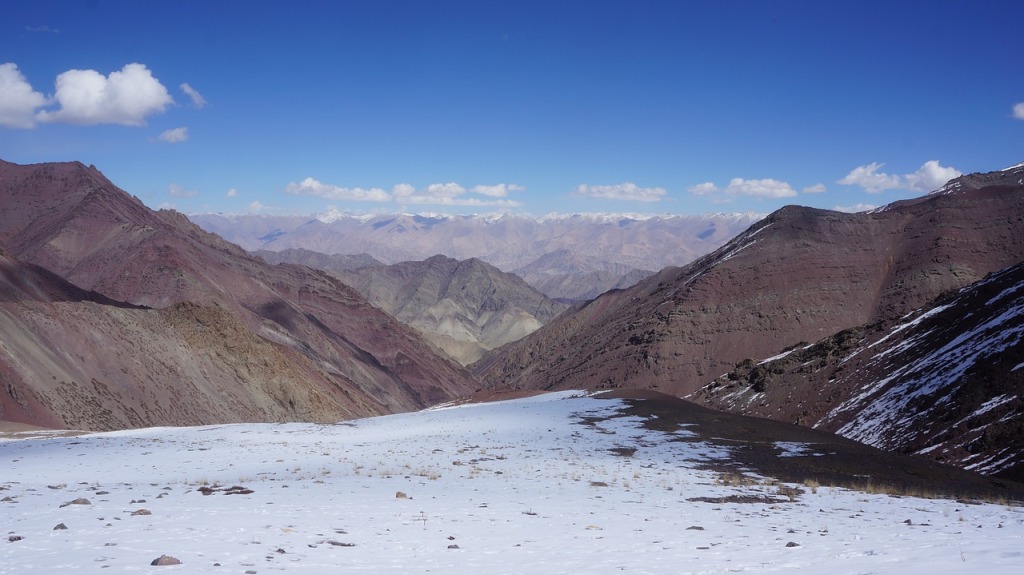
Scattered yaks grazing on vast green plains, verdant valleys encircled by the gigantic, rocky, snow-tipped mountains of 6000m, the delicious aroma of fresh mountain air, hushed little villages and a placid river of turquoise blue water to keep you loyal company; sounds like paradise but this little slice of heaven is none other than the Markha Valley .
With its inception in the dry and arid Leh, Markha Valley is the largest valley of the area . A memorable journey of 8 days and with a cool 65kms covered, Markha Valley is never about a grand destination but rather about wandering through barren landscapes, lush green plains, gushing streams, and tiny settlements of Skiu, Sara, Markha, Hankar & Nimaling. Giving you ample chance to dive deep into Tibetan culture , you engage with the friendly Buddhist locals, wine and dine in their snug little cafes and explore fallen forts, old monasteries, and their ruins. Markha Valley takes you on a trip that is all culture, rugged beauty, and adventure.
- Difficulty: Moderate-Difficult
- Duration: 8 days
- Maximum Altitude: 5200 m
- Location: Leh-Ladakh
- Base Camp: Leh
- The ideal time to visit: June to September
Quick Facts about Markha Valley Trek
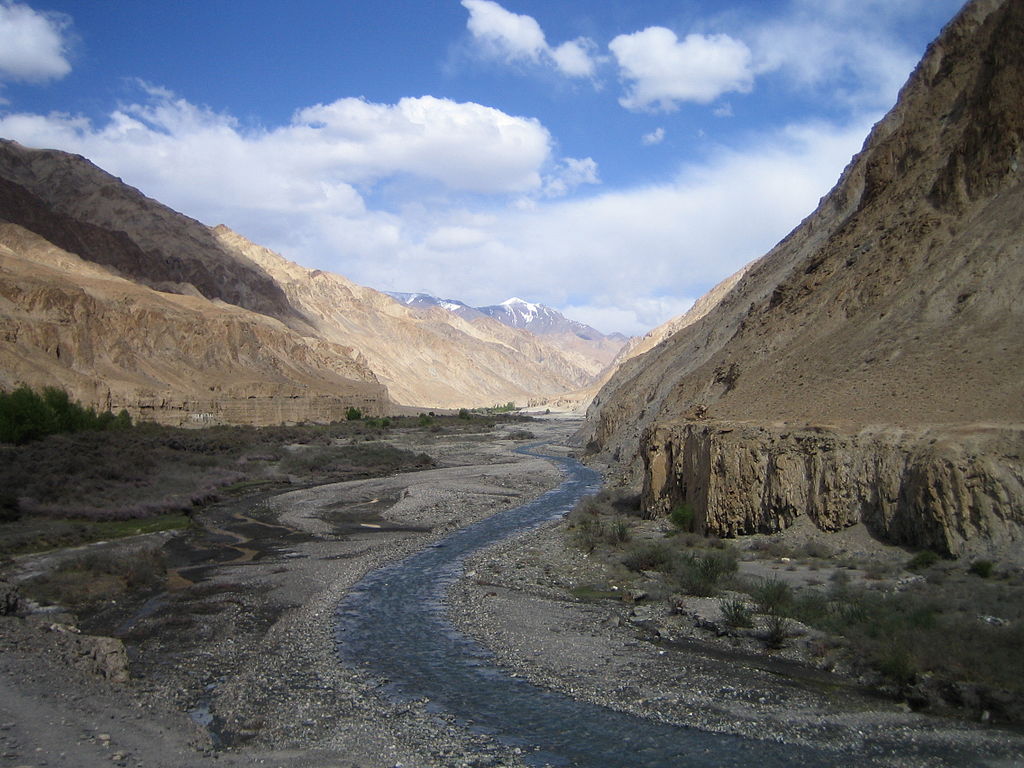
- The classic trek route of Markha Valley trek is named after the location’s famed Markha River . The most prominent mountain passes of the region are Ganda La (4900m) and Kongmaru La (4950m).
- The trek passes through the Hemis National Park which remains well-protected and acts as a fitting sanctuary to obscure plants and rare breeds of animals. The snow leopard is the most famous inhabitant of the area and maybe spotted in winter.
- Although the Markha Trek promises to provide you with the solitude you so deeply desire, it is one of the few treks where you can enjoy the luxury of living in home stays . If you aspire to share a few days with the people of the mountain, this is an opportunity you cannot miss out on.
- The trek to Markha Valley is in its most gorgeous self during the month of September. You witness the valley engaged in making arrangements to usher in a new season as you spot changes in the colours of fields and trees. If you are planning to set out on this adventure during the winter months, just remember to pack warmer.
- Depending on how and who you are traveling with, you may choose to hire porters or horses to accompany you. Since the trek is a long one, it might get exhausting to carry your luggage all the way through especially with camping gear.
How to reach Leh
Many flights connect New Delhi to Leh , wherefrom your trip commences. A trip via air is surely recommended as it’s obviously much quicker, hassle-free, and depending on how much in advance you book your tickets, they might even be cheap. The flight journey vows to be an exciting one as it gives you a gorgeous aerial view of the fascinating mountain ranges you are soon to explore. Leh airport has frequent flights from major cities of the country thus, is easily accessible.
There are two routes to reach Leh, the one is Leh-Manali road and the other is Leh-Srinagar road. The journey to Leh via road is a complicated one but an exciting one nonetheless especially if you are traveling in a large group. You may reserve a jeep or avail bus services from Manali which would typically take 2 days to reach Leh. However, if weather conditions do not support your journey it may extend to 3 or 4 days. Alternatively, you may also choose to travel via the beautiful Srinagar, which too is a journey of 2 days and takes you through the famed villages of Kargil and Khalsi.
The Jammu Tawai Railway station is the nearest railway station and is well connected with cities like Pune, Bangalore, Delhi. It is 712 kms away from Ladakh,this distance can be covered by hiring a taxi or a cab. The journey to reach Leh is partially covered via rail and then by road. The other nearest railway stations to Leh are Chandigarh, Pathankot Junction and Kalka railway station. These too are well connected to major Indian cities.
Best Time to Visit Markha Valley
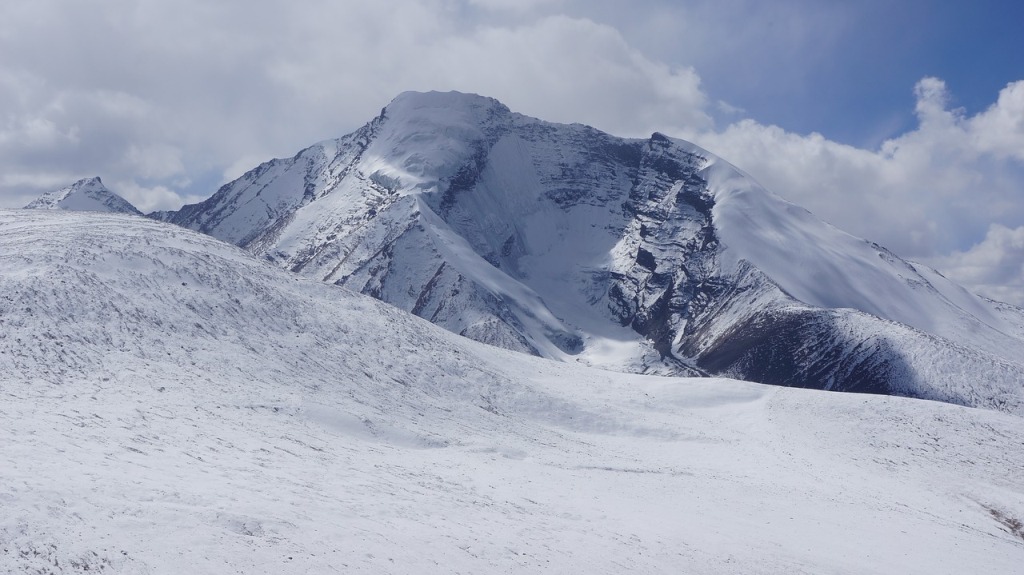
The Markha Valley invites trekkers to experience its grand terrains through the majority of the year . However, the best time and season to visit the valley would be from the month of June to September. The weather in the area remains cozy with the sun shining through and is followed by calm, cool nights that lull you into sleep after strenuous hikes of the day. It is advised not to traverse the land after September after which the area experiences heavy snowfall which would potentially make the journey on foot dangerous and difficult.
Packed to the brim with adventure, bewitching landscapes, rugged mountains and unique beauty, the trek to Markha Valley is sure to be the trek of a lifetime.
A Detailed Itinerary and Guide to the Markha Valley Trek
The Markha Valley trek is 8 days long trek with the difficulty grade of moderate to difficult. It is a challenging trek that is recommended for the seasoned trekkers. As it is a high altitude trek with few steep climbs which challenges you and tests your stamina. The trek length of Markha Valley trek is 65 kms with proper rest and acclimatization day in your itinerary you cover this distance and reach the Markha Valley elevation of 17,100 ft. Here is the Markha Valley Trek Itinerary:
Day 1: Arrive at Leh (3500m)
One can choose to reach Leh via Rail, Road or Air as per your convenience. You stay at the home stay or the guest house for the night. Proper rest is mandatory as one should be cautious to protect themselves from facing the Acute Mountain Sickness (AMS) in the coming days to follow.

Day 2: Acclimatization at Leh:
The second day of your itinerary you acclimate yourself to the surroundings. This is done by roaming out, talking walks and definitely exploring the beautiful Leh. Locals are very friendly here, interact with them but souvenirs from the local shops and encourage the local handicraft. The cuisine is worth experiencing so eat nearby at the cafe and enjoy the culture and cuisine. Don’t try to exhaust yourself by walking a lot. Return to your guest house early and take proper sleep.
Day 3 Leh to Chilling (3200m) drive and Trek to Skiu (3400m)
- Distance: 65 km drive and 9 kms trek
- Duration: 2-3 hrs drive; 4-5 hrs trek
Your trekking expedition starts with a drive through the paved roadways of the pictorial town of Leh. The ride offers you a first-class view of marvelous landscapes, military camps, the intriguing Magnetic Hill, and the GurudwaraPathar Sahib. As you reach the much-talked-about location of Chilling, take a deep breath, and take in the stunning beauty of your surroundings. The grandeur is only to exemplify from this point forward.
Your trek commences with you crossing the mighty Zanskar River via the trolley bridge. After which you begin your ascent to the lonely albeit lovely village of Skiu, gently tucked in between ginormous rocky mountains. The initial half-hour of the trek is a tough climb as you get used to the altitude and climate. However, the taxing part of the journey is soon over as the trail soon converges with the road above Markha River and continues to be a relatively flat route till Skiu.
Once at Skiu you have the option to stay the night at a homestay or settle in for camping. Located at the confluence of the rivers Shgri Nala and Markha, the tiny hamlet of Skiu has an old monastery, small white stupas, and the ruins of a once gorgeous palace. Get a good night's rest here while dreaming of your upcoming trek tomorrow.
Day 4: Skiu –Sara (3500m)
- Distance: 10 km
- Duration: 3-4 hours
On Day 4 on your Markha Valley Trek you will be welcomed by vibrant species of birds like Magpie and animals like blue sheep and mountain goats. The trek trail is well defined and well paved with the Markha River accompanying you throughout. The attraction of this day is the wooden bridge that marks halfway of your day 4 journey. Another attraction is the Nagding village where the houses have meditation caves with paintings dating back to the 20th century. The trek from Nagding to Sara is marked by an entrance decorated with animal skeletons. This marks the end of the day and you stay at a traditional home stay, where you reach by lunch time. Explore the surroundings and rest.
Day 5: Sara to Markha (3700m)
- Distance: 11 km
- Duration: 4-5 hours
Day 5 is a long day of flat trekking, river crossing, and green valleys. The Markha River Trek is renowned for its rugged barren beauty but this day offers picturesque views of flourishing greenery as it takes you along barley fields and thickets. One of the most exciting and challenging segments of the day is that you get to cross the icy cobalt waters of the Markha River not once but twice. The pictorial village of Chalak which is covered in fields of barley with houses atop small hills. The trail remains scattered with sacred and holy Mani stones engraved in Buddhist slogans and prayers.
The trail gains steepness for the next 2-3 km up until a valley opens up and a river crossing presents itself inviting you into its icy cold running waters before you enter the village of Markha. Trek for a couple more kilometres to reach the largest village of the valley – the Markha Village. Make the most of your stay at the village and explore ruined forts, forgotten monasteries, and converse with the amiable locals before calling it a day.
Day 6: Markha – Hankar(4000m)
- Duration: 5-6 hours
Today promises to be a day of unfiltered beauty with your first real treat visible from the upper Markha Valley wherefrom you get to witness the Kang Yatse – a perfect pyramid snow-cloaked mountain. You continue your journey along the river for most of the day and wade through it twice before reaching the small settlement of Umlung. Umlung offers you a grand view of Mt. Kang Yatse (6400m) in all its glory – a view that is certain to astound you and bewitch you. A little way from here is the Hankar village – the last village of the route. Henceforth it will simply be you and your group exploring mountains and terrains miles away from civilization – things are about to get much more interesting subsequently.
Day 7: Hankar – Nimaling (4700m)
Despite being a more or less lengthy trek – Day 4 is all about enjoying where you are and making the most of the spectacular setting you find yourself in. 1 km from Hankar you find the trail diverting into two sections where you opt for the left path. From here on, you will be met with many such diversions, needless to say, it can be quite confusing. It’s imperative to stick close to your guide during this part of the trek. After 2 hours of trekking, you find yourself in the Thochuntse campsite with vast expanses of green fields and a number of teahouse tents. Another hour of trekking takes you to a picturesque pond of emerald green waters with the Kang Yangtse standing magnificently tall and beautiful in the background. This would be the ideal location to have your lunch.
From the pond, you continue along the trail to reach the windy plateaus of Nimaling. Despite being perched atop a staggering altitude, Nimaling is lush green; sheep and mountain goats can be seen grazing idly and the area is even used extensively for summer pasture. Depending on the season, you may also witness snowfall in the area. Spend your night camping on the plateau, let the faint wind carry you to a peaceful slumber; an exciting day awaits you tomorrow.
Day 8: Nimaling – Kongmaru La – Chokdo and drive to Leh
- Distance: 16 km
- Duration: 7-8 hours
Today’s trek promises to be challenging yet filled with pleasant surprises. You begin your day with a short but steep climb to the Kongmaru La. Here you will be greeted by the spellbinding beauty of the Karakoram Mountain Ranges and the majestic Mt. K2 – one of the highest peaks of the world – second only to the Mt. Everest. With prayer flags dancing in the chilly wind, the mountains playing hide and seek with the morning sun and ranges that seem to stretch till eternity – this is a sight you will keep close to your heart forever.
After enjoying the scene of a lifetime, you now begin your descent to Chokdo, a small village. The descent is tricky and often brutal but the feeling of thrill and the adrenaline rush keeps you invigorated all through the arduous journey. As you make your way through the route you spot the Indus Valley and Ladakh Range. This will be the last descent of your 8 days long Markha Valley journey. Get in the cab for your journey back to Leh with a bag full of memories and with a hope to come back again to soak in the beauty of Leh-Ladakh.
Deals And Offer
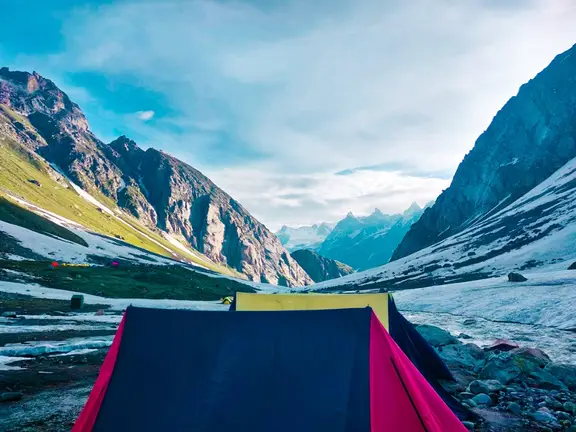
Hampta Pass Trek
4.87 ( 438 ), hampta pass trek 2024 - chandratal lake trek | moxtain, free cancellation till 30 days prior trek, rental & gear available on rent, book with 20% initial amount.
See Dates / Book Now
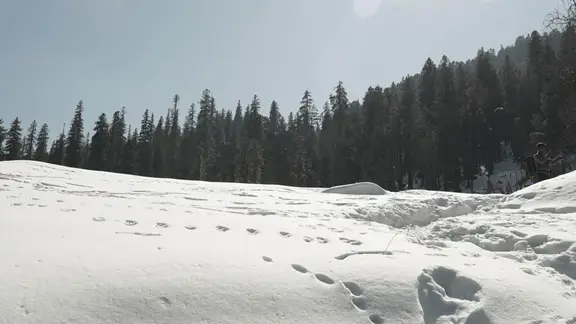
Dayara Bugyal Trek
4.85 ( 398 ), dayara bugyal trek 2024 - 6 days trek | moxtain.
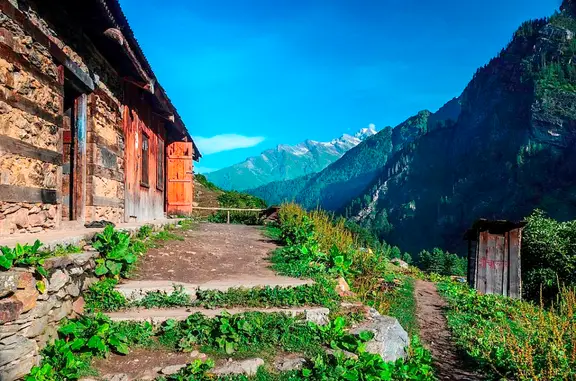
Kasol-Kheerganga-Tosh-Malana-Trek
4.56 ( 24 ), similar blogs.
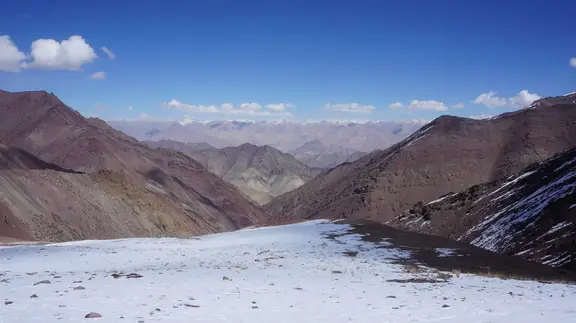
Lost of Trekking Season: Hampta Pass Trek

Har Ki Dun Trek Route and Map
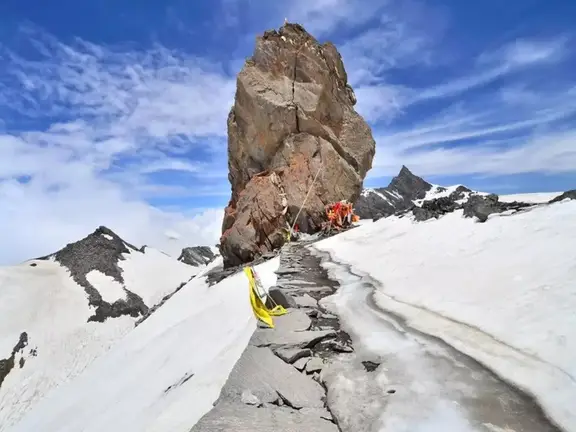
Srikhand Mahadev: The Pilgrim Trail
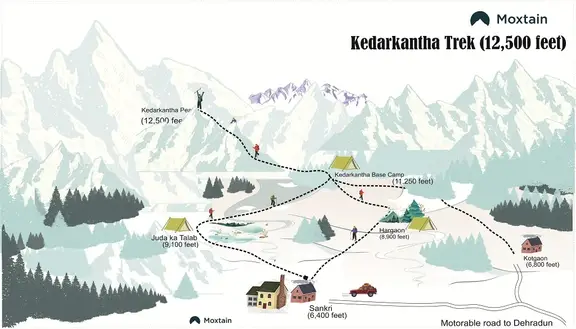
Kedarkantha Trek Route Map
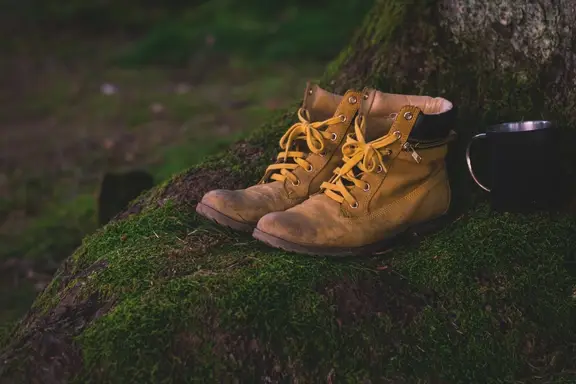
The Essential Gears you need for Trek and the Benefits of Renting them
Similar trips, stok kangri, mayali pass, everest base camp trek, annapurna base camp trek, goechala trek, nag tibba trek, deoriatal chandrashila, bara bhangal, sandakphu phalut trek.

Markha Valley Trek
Markha valley.
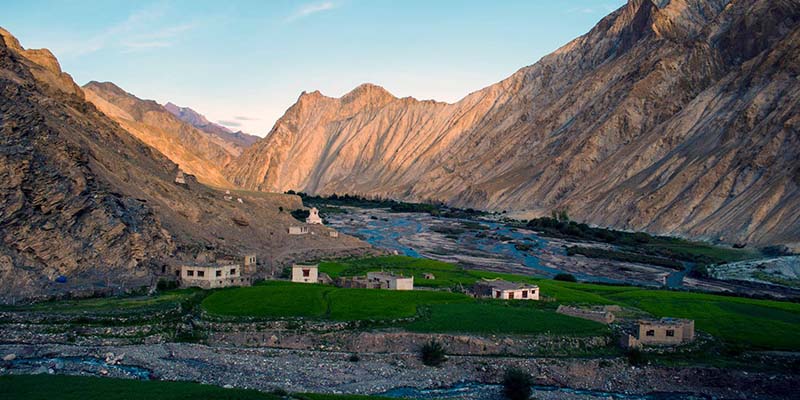
Description
Reviews (0), things to take, available dates, include / exclude, heaven on earth markha valley trek.
Markha valley Trek, Kashmir is the most sought tourist place. No doubt it is called heaven on Earth. It is the place for adventurers and trekkers and a popular gateway for its raw and arid thrills with spectacular trails.
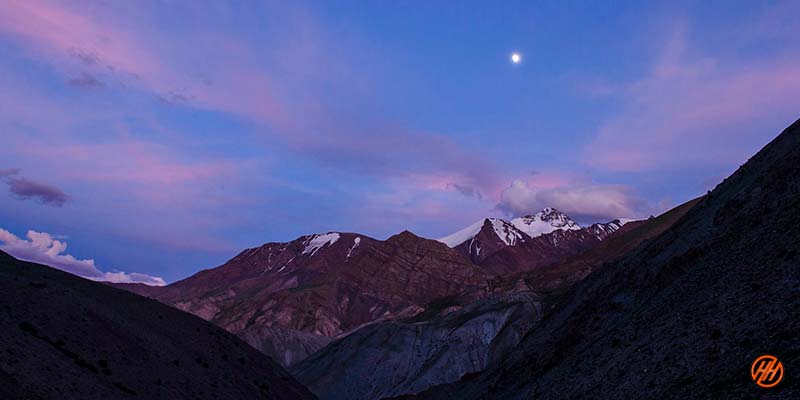
Magnificent barren Landscapes in Markha Valley Trek
Markha valley Trek Give Us From lush green to yellow barren landscapes, it is quite a thrilling adventure of 8 days passing alongside the Indus river. Markha Valley is the largest valley in the region of course, Leh is the start point of Markha valley Trek, which is an added advantage to explore the Buddhist monuments in Leh. You will be astonished to traverse through the tiny hamlets as you gain altitude.
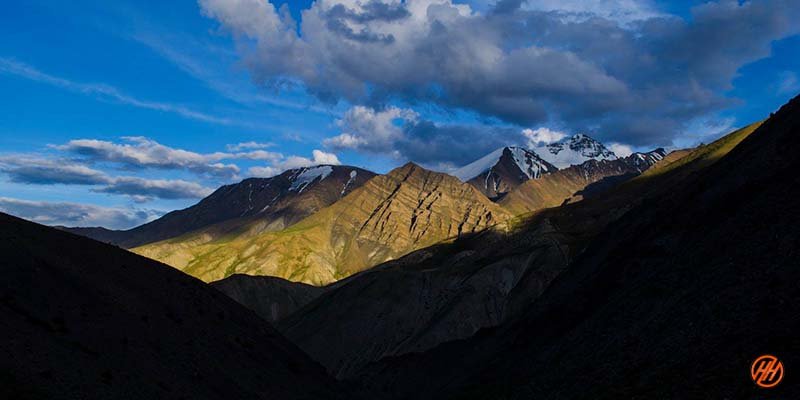
Spectacular villages and several mountain ranges in Markha Valley Trek
At Markha valley Trek You will be left in awe once you traverse through the tiny hamlets as you gain altitude. These villages have cae and tea houses that will rejuvenate your soul when you are tired from the strenuous hike.
One after another, Rumbak, Yurutse, Skui, Markha, Hankar, Nimaling settlements will revitalize you. Not only that most of the villages have preserved monasteries, ruined forts, and temples. Amongst them, the Tacha monastery is an eye and heart catcher that lies between the mountains.
Ganda La and Kongmaru La are the two cardinal passes to be crossed en route. These passes are known for the panoramic views of infinite Karakoram and Ladakh ranges. The stunning sights of K2 mountain, Stok Kangri and Kang Yatse peaks are fulfilling and the motivation of this trek.
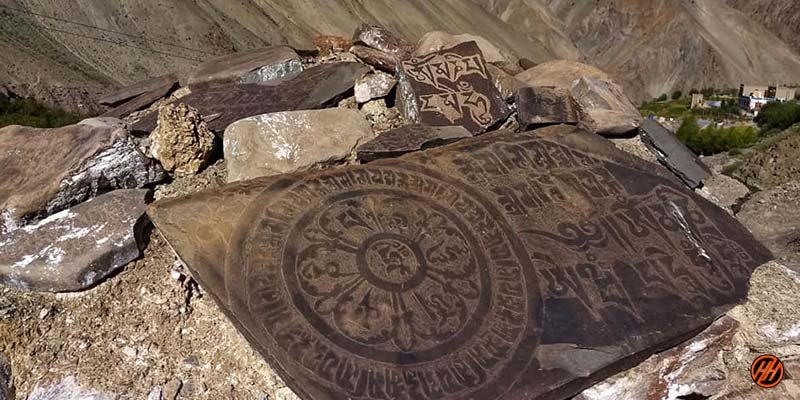
Why to choose Markha Valley Trek ?
See firstly, the trekking distance is a total of 128km by taxi it is 64km. By foot 64km which is to be covered into the 8 days. Leh- Chilling- Skiu-Sara- Markha-Hankar- Nimaling- Chokdo- Kongmaru La- Leh
Before heading towards the itinerary, it is really essential to perceive the reason behind choosing the Markha Valley trek
Markha valley Trek is a high-altitude mountain trek Altitudes is 5200M
The Starting trail is moderate– difficult as compare. So, this trek is for the people who have done high altitude treks before. Not meant for beginners, or family or school tour
Need proper gear & clothing for sub-zero temperature for Markha valley Trek
You got to see so many heavenly bodies at one place like the panoramic view of the Himalayan ranges, like Karakoram and Ladakhi ranges. You can see pine forests, different variety of flora and fauna surpassing
I think Do spare time in Interaction with our local’s team, and you will get to know about some of the ancient tales of Indian mythology and our local cultures, this is good ideas for trekkers
Beautiful landscapes so carry proper photo gear & Extra battery backup.
The backpack should not exceed 12 kg only
Getting to our Base Camp Bara Hazar
Option 01 – By Air Direct flight to Leh is available across the country
Kolkata- Leh
Pune – Leh
Bombay- Leh
Jet Airways, Go Air and Air India provide daily (once every day) flight service between New Delhi and Leh.
In the summer season, the services may even be provided twice a day.
However, if you plan a trip to this area of the country, you must try to book your tickets well in advance.
This might even cut down the prices which may be levied on booking at the last time.
You would enjoy the flight as you would fly over many untouched areas and even some mountain ranges.
The aerial view is just fascinating and gives a great start to your tour.
Option 02 – By Road
The road from Manali to Leh is only open in the summers.
The road trip may take you 2 days, but depending upon the weather conditions, the travel may also extend to 3 or even 4 days.
You should also make sure that you carry at least two spare tires.
Good advice would be to carry a sleeping bag with you well, as the bus may stop in the middle of nowhere for the overnight stay.
Another route to Leh via Srinagar also takes around two days.
On this route, you would pass through some lonely yet famous villages like Kargil and Khalsi.
You can reach Leh around 5:00 am to 7:00 am, vehicles will be arranged and
there you can meet our office members.
ATM Point & amp; Mobile connectivity in Markha Valley Trek
ATM POINT: Withdraw money before your journey, Manali is the last point
where you will find ATM.
(If you want to withdraw the money then do it in Leh.)
Note:- Himalayan Hikers arrange vehicles for you from Leh and Drop Tempo
Key Points Markha Valley Trek
Duration: – 7 Nights Days from Leh to Leh
Base camp: – Skiu base camp
Summer Temperature: – 10°C to 15°C and Night: 0°C to 7°C
Markha Valley- Altitude: – 5200m
Best Time: – May to June and September to October
Trek Level: – Moderate- Difficult
Trek distance: – 65km
Group Size: – a minimum of 5 people a maximum of 15 people
The altitude we are going to cover per day
Leh – 3500m
Chilling – 3200m
Skiu – 3400m
Sara – 3500m
Markha – 3700m
Hankar – 4000m
Nimaling – 4700m
Chokdo – 3700m
Kongmaru – 5200m
Short Itinerary of Markha valley Trek
Day 1 : Pick up to you from Leh( No trekking)(3500m)
Day 2 : Acclimatization Day At Leh(Walk around nearby) (3500m)
Day 3 : Drive Leh to Chilling and trek to Skiu (65km By car) (2/3 hours) (4171m)(9km by foot)(4/5hours)(3400m)
Day 4 : Trek from Skiu to Sara(10km) (3/4hours)(3500m)
Day 5 : Trek from Sara to Markha (10 km)( 3/4 hours)(3700m)
Day 6 : Trek from Markha to Hankar(11km) (5/6hours) (4000m)
Day 7: Trek from Hankar to Nimaling(9km)(3/4hours)(4700m)
Day 8: Trek from Nimaling to Chokdo Via Kongmaru La drive to Leh(16km)(7/8hours)(5200m)
Day 1: Pick up from Leh
Total distance 0
Mode of journey – By taxi
Altitude – 3500
Night stay – Hotels
Himalayan Hikers will pick up the trekkers from Leh and leave for the hotels to acclimatize at around 6:00 to 7:00 am.
Markha Valley trek begins from Leh. Arrive in Leh through flight or train.
Take it slowly once you arrive in Leh. Since it is at the hazardous height of 11,000 ft direct landing to this height may trigger AMS.
Make sure you rest well and not strain your body during your stay in the hotel.
Leh has gained popularity as the adventure capital of India.
It is quite famous amongst wanderers, which you can evidently see as you roam here and there.
Acclimatization is very important. Don’t rush, take it easy.
Day 2 : Leh(Acclimatization)
Mode of the journey – (No journey as will be acclimatizing)
Altitud 3500m
Night Stay – Hotels
This is an extra day added in the itinerary to help you get acclimatized better.
Therefore, utilize this day and try to stay outdoors. Hike up to the Shey Palace, Thiksey Monastery, Thiksey Gompa to experience the Buddhist culture. Thiksey Gompa is the largest in central Ladakh, located on a hill.
Additionally, you can interact with the locals and fellow travelers to gain some knowledge about the adjacent areas. Roam in the Leh city and the Leh Bazaar. You can collect souvenirs from a variety of shops.
You must spend the sunset at the Shanti Stupa, which is known for its dazzling lights in the evening.
Say goodbye to the wonderful Leh and rest in your hotel.
Day 3 : Drive to Chilling and trek to Skiu
Trek Distance – 72km (7/8 hours journey)
Mode of the journey – 65km by car and 9km by foot
Altitude – 3400m
Night Stay – Our Campsite – on a twin share basis
Get set as your real trek journey commences. You will be riding along the skillfully paved roadways crossing marvelous landscapes.
Throughout the road, you will encounter military camps decorated with colorful big rocks around the camps.
Do not miss Gurudwara Pathar Sahib on the right and Magnet Hill on the left as you move ahead.
The Stok Range remains on the right until it vanishes slowly when you reach Hemis National Park.
You will be pleasantly surprised once you reach Sangam. Indus and Zanskar rivers, both bottle green, yet so unique, form the most spectacular confluence.
This point is also famous as the starting end for rafting. Take a diversion here towards Chilling.
The surrounding view henceforth changes magically. Valley having stunning purple, black, grey shades of the mountains.
Juniper and tall alpine trees will border the route as you cross the Zanskar river over green iron bridges.
Take a deep breath once you get down at Chilling, as the walking will begin in a few minutes.
Skiu will mark the first camping in the tents. It is located at the confluence of rivers ShgriNala and Markha.
Skui village is largely divided into two sections, upper and lower village. Lower Skui has 12 houses quite close to each other.
A small trudge, old monastery and ruins of a palace, separate it from upper Skui.
There are small white stupas and mani stones laid towards upper Skui. Markhariver lies on the right of the village.
Most of the places here offer homestays. Relax after a mini-trek, while looking forward to the upcoming trek.
Day 4 : Trek from Skiu to Sara
Trek Distance – 10km(3/4hours journey)
Mode of journey – By foot
Altitude – 3500m
Night Stay – Campsite – on twin share basis
Start fresh for the actual first trekking day. Be vigilant about birds and animals. Markha valley harbors enormous wildlife.
Magpie birds will be visible right after you step out of the house. The trail is quite evident and well-paved intermittently.
The Markhariver will remain escorting on the right, which incepts from Kang Yatse peaks.
In an hour a hut of Women Cafe can be spotted, take a small break here and keep walking.
The trail is enclosed with the valley that goes through sparse forest cover. Another hour’s trudge and the first wooden bridge comes at Zanpa Yoakma.
The bridge marks halfway of the day’s trek to Sara. Despite that, try not to relax here, because in merely 25 minutes another coffee shop at Hamourja is waiting for you to rejuvenate.
Look out for black sheep, deer, mountain goats on these banks.
Keep walking straight till Nagding village for another 40 minutes.
Right in front of the houses spot meditation caves at a height on the valley walls.
These caves are believed to be having paintings of the 20th century.
The banks of the Markha river get wider and you can find yourself stepping in the powdered sand. Enjoy the feeling of Himalayan sands.
Day 5 : Trek From Sara To Markha
Trek Distance – 10km (3/4hours)
Altitude – 3700m
Night Stay – Our Campsite – on a twin share basis
Start early today from Sara, carry along packed lunch.
The trail is somewhat similar to the previous day. Despite that, you will always find something new in this mysterious valley.
The first tea houses arrive immediately after 30 minutes at Chalak village.
The village has houses placed on small hills with stone protection shelter for domestic animals at the base.
Visit any of the villagers they will greet you with Namkin Chai and biscuits. Re-energize by affectionate talks and hot drinks. The destination is 2 hours away from here.
You will have to walk in the running stream of the Markha river to reach the Markha village.
The cold water will bring back all the energy. In 20 minutes, you can see the hamlet. Find your homestay and pack up for the day.
Day 6 : Trek From Markha to Hankar
Trek Distance 11km (5/6hours)
Altitude – 4000m
Take the most advantage of the innocence of the salient villages because today will probably be the last habitats on the route.
The trail is beautiful and refreshing when it merges with flowing rivers and streams.
These water bodies can also be crossed over a bridge.
Umlung village is a small village and will serve the last teahouse of the trek with yet another serene monastery to your sight.
After Umlung you can get the first sight of Mt. Kang Yatse(6400m).
It seems as if the peak is calling you! Follow its voice, again overcome the river several times and enter the Hankar village.
Try to spot the magically placed Tacha monastery on a mountain. It is the last hamlet of the trek and your refuge plac
Day 7 :Trek From Hankar to Nimaling
Trek Distance – 9km (¾ hours)
Altitude – 4700m
Night Stay – Our campsite on a twin share basis
Get all enthusiastic, after yesterday’s tough trek, today will be an easy and short trek.
Start walking and in 1 km you will find diversions or paths separating out. The other route goes to Rupshu and Zanskar.
Keep walking on the left path until a stone bridge. This marks that you are on right trail.
Henceforth, you can see many diversions, please be careful and follow the trek leader/guide.
In the next 2 hours, the pastures of Thochuntse becomes visible. There camping sites and tea houses here.
Try to engulf yourself in nature and move slowly just as you focus on the Kang Yatse peak.
The peak seems to grow bigger and bigger. Surprisingly, tranquil twin lakes also come along the path.
The trails enter into a huge grassland after a few fights crossing streams of the high altitudes.
Sheep, mountain goats, sometimes rabbits are found grazing at Nimling.
It is a pleasant camping place. It is the high point you will attain on this trek.
There are instances of snowfall at this site hence we prepared for that. Above all that, just try to merge into the high world and sleep in peace.
Day 8: Trek FromNimaling to Chokdo Via Kongmaru La drive to Leh
Distance – 16km(8/9hours) 2 hours drive to Leh
Mode of journey – By foot(16km), By taxi (2 hours drive)
Altitude – 5200m
This day will be nostalgic and exciting, as this is the last day of the trek landing to the highest pass of the trek.
Also, this day will be filled with surprises. After a strenuous climb of 2 hours to Kongmaru La pass, you will be pleasantly welcomed by the Karakoram Range Mountains and the excellent array of peaks.
Hold your breath for the mind-blowing sight of the huge K2 Mountain, the second-highest peak in the world.
There are prayer flags moving along the wind. To your surprise, there is a good network connection from the pass.
The trail then gradually descends, coinciding with villages to say goodbye.
The immediate trail from pass has steep and narrow descend which later opens to Chikirmo village.
Throughout the route, you can get indulged in the scenery of Indus valley and Ladakh range.
After a gradual climb down and rocky terrain, you will reach Chokdo.
This the last stop of the entire trek, which also has many homestays.
Get into the pickup vehicles that will take you to Leh.
Mandatory Documents
Please carry the documents given below.
Original and photocopy of government photo identity card- (Aadhar Card, Driving License, Voters ID, etc, Passport and Visa important to foreigners Medical Certificate (First part should be filled by the Doctor and Second part by the Trekker) Declaration Certificates
Note: – Many trekkers commit the same mistake of carrying unnecessary items on a trek which only makes the backpack heavy. It is important to know the right items to carry. It differs from season to season if you are trekking in summers then carry less layers of warm clothing and if you are trekking in winters carry enough layers to protect yourself against chilly cold.
Necessary Items for trekkers

Backpack (50 to 60 liters) A strongly built backpack with good support is compulsory for a trek. (Rain cover is important)
Sturdy Trekking Shoes The shoes should be strong enough with good support. The people ask if sports shoes would be comfortable but it is good to bring the right trekking shoes.
The Clothes You Should Bring On a Trek Avoid keeping extra clothes because it only makes you backpack heavy.
Trek Pants – The jeans are never suitable for a trek so you need at least 2-3 trek pants for treks carry more for longer treks.
Jacket – Jackets are very important to carry on a trek it protects you against the chilly weather. So carry 2 jackets on a week long trek.
Layers of warm Clothing Carry warm woolen layers or fleece. Carry more layers during winter season (at least 2 to 3) and less during summer.
Thermals – The Temperature decreases at night so you might be need thermals for Night.
T- Shirts – Bring those t shirts which dry fast.
Poncho –They are needed if you are trekking on a Rainy day to keep you dry.
Hiking Pole
Water Bottle 2
Cap or Balaclava
Woolen and Waterproof Gloves
Socks (Woolen and Regular)
Torch head light
Personal Toiletry Items – (toothpaste, toothbrush, toilet paper, sanitizer etc.)
Carry Personal Medical Kit
Personal Medical Kit (Carry minimum 5 tablets and maximum 10)

Diamox – (Prevents altitude sickness)
Digene – (It cures discomfort in stomach, acidity)
Crocin Advance – (Cures fever and headache)
Aspirin/Combiflam – (Pain reliever)
Disprin – (Cures headache)
Avomine – (Prevents motion sickness)
Avil – (It treat allergies)
Norflox TZ & Lomofen – (Prevents Diarrhoea)
Ranitidine – (Reduces the amount of acid in stomach)
Volini/Moov spray – (For sprains)
Betadine/Savlon – (Antiseptic cream)
Stretchable/Elastic bandage
Note:- Use medicines only when prescribed by the doctor. In case you face any problem during your trek, discuss and take advice from the Professional guide.
Sorry! Here are no Available dates right now. For Any Queries you can Email us with [email protected] and Call Us +91 9756197558
What is Included In This Trek?
Transport Facility Leh To Leh
Forest Permit and entrance fee
Accommodation in tents on twin share basis
All meals: breakfast, packed lunch, tea, coffee, snacks, soup and dinner
(All camping gears)
High quality tents
Sleeping bags
Separate Toilet tents – Ladies and Gents
Dining Tent
Dining Table
Kitchen team
Radio Walkie Talkie for Communication
Good Experience Trek Leader guide and Technical guide
Medical Kit
Oxygen Cylinders
Crampons and Gaiters
What is Not Include In This Trek?
Personal Insurance
Medical Certificate
Personal toiletry Items and Personal Medicine kit
On first day En Route to base camp the Breakfast and Lunch are Not Included
Last Day En Route Lunch and Dinner are Not Included
There are no reviews yet.
Your email address will not be published. Required fields are marked *
Name *
Email *
Save my name, email, and website in this browser for the next time I comment.
Related Tours
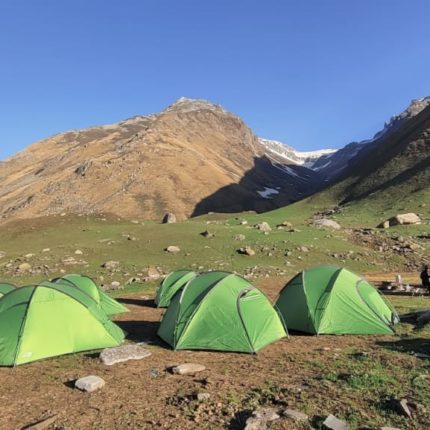
Buran Ghati Trek
Buran Ghati pass is a Adventures Trek or pass in Himachal Pradesh-2024
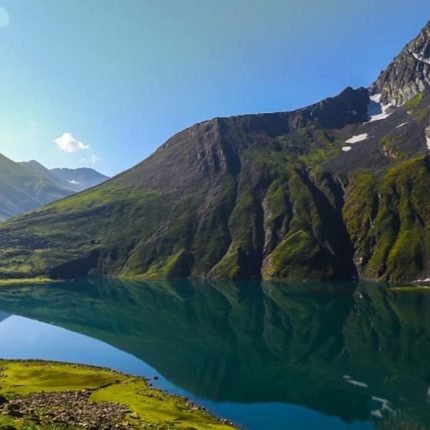
Kashmir Great Lakes Trek
Kashmir Great Lakes Grandeur of Kashmir Valley-2024
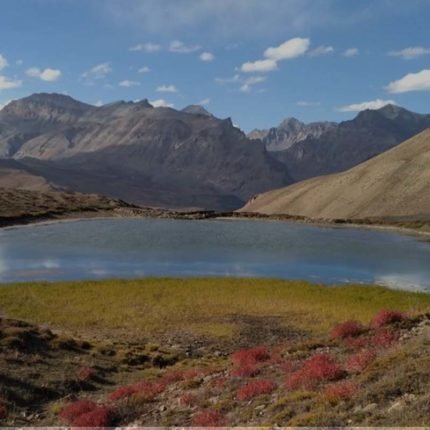
Kanamo Peak Trek
Kanamo Peak Trek in Spiti Valley in Himachal
Book Your Trek
- Overview Itinerary Dates Include/Exclude
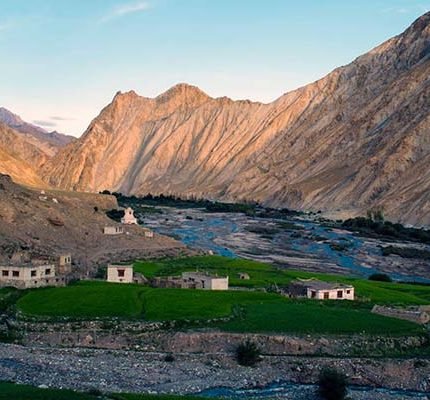
You will receive an email containing a link allowing you to reset your password to a new preferred one.
Verification mail has been sent.
Please check your mail to verify your account.
Click Here to Login
- How To Reach
- Dates & Price

33°57'24.6"N 77°17'52.6"E
Markha Valley Trek

Pickup Point
Leh Airport, India
Minimum Age
- Markha Valley trek offers a striking contrast of trekking in a dry cold desert valley while providing beautiful views of Ladakh & Zanskar ranges, the 21,000 ft Kang Yissay and the 20,086 ft Stok Kangri peaks.
- The Markha Valley trek goes inside the beautiful Hemis National Park and involves two pass crossings- Gandala La (15748 ft) and Kongmaru La (17,060 ft).
- Some exciting waist-deep river crossing sections on Markha River to trails going across interesting Buddhist villages and rocky canyons are some of the features that give this trek a unique fervor.
- With close proximity to Leh, which is one flight away from most Indian metropolitan cities, Markha Valley Trek can be something any experienced traveler to Leh should definitely consider doing.
The Markha Valley Trek is one of the most astounding and well-known treks in the Ladakh region of India. Located in the northwestern part of India, the Ladakh region is famed for its savagery and uneaten beauty. The trek follows a remarkable high valley with excellent views across the mountain region and is one of the best ways to experience the unique culture of the High Himalaya region. The Markha Valley trek goes long with the Markha River downstream taking in several high passes including Ganda La (15748 ft) and Kongmaru La (17,060 ft). From both passes, you get grand views across the landscape with the tall peaks of Kang Yatse and the Stok Kangri (20,086 ft) coming into sight. Not only is the trek one of mountain beauty, but it also takes trekkers through an outlook of ancient farming with many green irrigated fields and local villages being passed along the way. You'll also encounter several monasteries and meet the shiny dressed monks as they go about their daily lives. You will be open to several waist-deep river crossings, high rocky canyons, and tour many Buddhists villages en-route.
Quite less are aware of the dryer and barren side of this heavenly place. The most desired adventure hub Leh, popular for its raw and arid thrills, is a gateway to the burned-out trails. With Markha Valley trek one gets to redeem the dry region of mighty Kashmir. The mysterious ride of 9 days, exhibiting lush green to yellow barren landscapes, passing alongside Indus river, will stay in mind for your lifetime.
Markha Valley is the largest valley of the Ladakh region. Leh is the starting point of this trek, which is an added advantage to explore the Buddhist monuments in Leh. You will be astonished to traverse through the tiny hamlets as you gain altitude. Surprisingly, these villages host cafes or tea houses serving rejuvenating hot drinks when you are tired from the strenuous hike. One after another, Rumbak, Yurutse, Skiu, Markha, Hankar, Nimaling settlements will revitalize you. Not only that most of the villages have preserved monasteries, ruined forts, and temples. One of them, the Tacha monastery is a beautiful and heart catcher that lies between the mountains.
Though the trek goes through dry regions the Indus, Markha and numerous streams will come your way. Since the trail goes through Hemis National Park, all its treasured fauna, mountain sheep, Argali, rabbits, snow leopards can be spotted at every camping site. Ganda La and Kongmaru La are the two cardinal passes to be crossed en route. These passes are known for the panoramic views of infinite Karakoram and Ladakh ranges. The amazing view of K2 mountain, Stok Kangri and Kang Yatse peaks are fulfilling and the motivation of this trek. On limpid days one can get to see faraway Tibet region. A small trek ahead of Markha Valley and you will get to the base of Kang Yatse peaks. The trail is of easy to moderate grade with 1-2 steep sections, is recommended to all age groups. This is not one of those typical treks that retrace the same path while descending. Therefore, you get a wider and non-repetitive insight into Ladakhi Himalayas. Each day reveals mesmerizing views concealed behind the mountains.
Best Time to Visit
The best time to visit Markha Valley trek is between June and mid-October. During this time, the weather is Ladakh is pleasant and the average temperature ranges between 20 - 30�?�°C in the daytime. July and August are the best months for Markha Valley trek as during these months Manali-Leh and Srinagar-Leh highways also open for private vehicles.
Brief Itinerary
Detailed itinerary, day 1 : arrive in leh and rest for the day.
Arrive in Leh and rest to acclimatize in the thin air of Leh. Spend your day at Leh. If you like, you can visit ancient monasteries, palaces, and museums that the place is famous for. Drop by Shey, Thiksey Gompa, and Stok Gompa. Being in the same destination will assist in getting acclimatize well for high altitudes. Towards the evening, you can enjoy a hike to Leh palace. The rest of the evening will be spent on relaxation.
Day 2 : Trek from Leh to Zingchen via Spituk
The Markha Valley starts from Spituk. Continue on the dirt road from Spituk, along the Indus River, all the way up to Zingchen. It takes about two hours to reach Zingchen on foot from Spituk. Drive from Leh to Spituk and reach Spituk early in the morning as it gets very hot in the day time en route to Zinchen. Carry extra water as it may take several hours to find a source of drinking water. At Spituk look for the set of the first Gelukpa Gompa in Ladakh. Go past the village and cross the bridge over the Indus River. After crossing the bridge look out for the guards of Hemis National Park. Walk by the trail until you notice a small village on your right. All this while the Indus is on your right.
The green scenery now gives way to dry grounds. There are a series of dry gullies to cross for about 2 km. The trail then splits into two. One is the jeep trail which remains in the lofty grounds while the other is the mule trail which is shorter. After a 4 km Markha Valley on the mule trail you reach a vantage point from where you get an impressive view of the Indus Gorge below. Look out for some prayer flags. Leaving behind the Indus river, walk towards Zinchen gorge ahead which is another 7 km far away from the junction of Indus and Zinchen Rivers. As you cross over, the trail heads towards the south as you cross another road bridge next to a gorge. An additional 3 to 4 km walk and you will reach Zinchen.
Day 3 : Trek from Zinchen to Yurutse
The trail crisscrosses a stream flowing through a gorge. Take the wooden bridge to cover the stream and go to the left of the gorge. Further up move to the right and cross the stream. This trail heads to Rumbak from Zinchen. It takes about 3hrs to reach Rumbak. From there start to your right side to reach Yurutse. Take the small wooden bridge over the stream which takes you to the valley on the right. A 984 ft climb from there, brings you to Yurutse village.
Walk ahead for an hour and cross the bridge past a forest check post of Hemis National Park. The trail is well placed by Forest Officials and proceed till Sumdzom. Register and obtain permits to enter the park. From Sumdzom there is an upstream walk and you come across the wooden bridge two times as you pass through an alluring gorge (Zingchen Nala). The trail enters a valley that narrows down as you move ahead passing via two rocky canyons of sorts. In front of you is Kandala Nallah trail through fields. On the left side, the trail proceeds eastwards up to Rumbak Village. The rocks are rounded so tread carefully. There is an easy stream crossing that will appear to your west after which you get a grand view of the snow-clad peaks of the Stok Mountains as you cross over a fenced plantation area. Rumbak is at a height of 12,470 feet. Notice a route moving further down ahead to Stok La where you can go climbing the Stok Mountains, namely Stok Kangri. Rumak takes the turn towards Yurutse which is a slow climb and can be hard as the effects of high altitude sink in. The landscape is barren and the mountain brightens with a yellow glow and green pastures. Overnight stay in Yurutse.
Day 4 : Trek from Yurutse to Skiu via Ganda La Pass
Start early in the day towards the Base camp of Ganda La which is a steep gradient involving an hour-long hike. As you move up the valley to the base camp, look for the peak of Stok Kangri looming behind you. Look for the usual prayer flags as you reach the lower base camp of Ganda La at an altitude of 14,272 feet. A further 30 minutes or 1 km will bring you to the high base camp of Ganda La. Enroute you may sight Blue Sheep, Marmot, and Argali roaming the land freely. The Ganda La Pass is a further 1 km up in the valley where the elusive Snow Leopard resides, though sighting one will be rare. At the top of Ganda la pass, you get a grand view down to Zinchen Gorge and Stok Mountains and towards the Skiu side of the valley. The contrast in the landscape on both sides is incredible. The trail is well defined, zig-zags all the way up to the pass. Keep your ears well protected as it is extremely windy. As you pitch down to Skiu, observe the terrain intensifies becomes rocky in nature. This pass crossing section can be hard for trekkers as one may experience headaches, nausea, etc. Ensure you do not hike too fast as the variance in height gained and lost is significant for the day. Carry plenty of water as the quality of water is not that good on way till Shingo. A water filter can help you here.
After two hours of difficult descent, you will reach a settlement named Shingo (13,615 feet). The last section of the Markha Valley for the day until Skiu takes around 3 to 4 hours. The dusty trail undergoes a yellow-colored valley. From Shingo lookout for a trail heading south towards the village field from where you take a logical trail moving towards your left. This trail enters into a narrow gorge with an abundance of wild roses that bloom in the months of July-August.
The trail is well established all the way till Skiu. Expect to cross Shingo Nallah three to four times on the way to Skiu. All this while, the trail is descending down crossing the stream on stepping stones. The bottom of the gorge is full of willow and Sea buckthorn providing much-needed shade from the sun. 1.5 km before the end of the gorge, the stream disappears and you reach Skiu. You have just entered Markha Valley. Observe Markha River coming down from Chilling. This is the point from where Stok Valley blends with Markha Valley. We camp overnight at Skiu.
Day 5 : Trek from Skiu to Markha
Today is a moderate day for trekking with very little altitude gain/loss though there is a lot of distance to cover. From Skiu, start eastwards towards the Markha Valley. Walk along with the Markha River with mountains on both sides. The trail for the day is a comparatively level walk over the river bed, side trails along the river with few parts where you have to climb up and down due to broken down trails in few sections. Walk beside the river for 2 km till you reach a bridge section. Do not cross over but stay on the route along the river. The trail from here has few washout sections requiring you to climb, few meters up and down to pass the broken section of the trail. The trail to Chalak village from here goes through a bridge crossing towards your left and a further 2 km Markha Valley to reach a clearing known as Narding go around with a 3km walk up the valley to a spot called Sara.
Another one km and you reach a bridge crossing section. Cross the bridge and return back to the right side of the river. Observe cultivated Barley fields ahead. You have reached Chalak. We rest at Chalak village and have lunch. It takes around 4 hours to reach Chalak from Skiu. From Chalak the trail ascends slowly as you pass by a trail marked with Bharal horn for directions. Observe chortens and mani walls set high above the river throughout the way. After 2 to 3 km the valley comes up and a river junction takes you to Markha Village. Let the guide decide the best spot for the river crossing. You may find the height of water to be femur high. The water is icy cold so better to take off your shoes and socks and pull up your pants. Once you cross over, Markha Valley for a couple of kilometers till you see a final bridge crossing. As you cross over the bridge you approach Markha -the biggest village in the area, where we camp for the night.
Day 6 : Trek from Markha to Thochuntse
Today is another moderate day for trekking. Follow the trail from Markha village alongside Markha River, remaining at the right side. Ignore a wooden plank bridge. After 2 km you reach the intersection where a path from Zanskar meets up. Look for suitable spots to cross over Markha River. You will be required to cross over at least twice. Consult a local in Markha or leave it to the experience of your guide to making this decision. After the second river crossing, it is a 2-hour hike up to Umlung. Look out for the Umlung Gompa and cross over from its base to reach Umlung. You can get a breathtaking view of Mt. Kang Yissay as you climb up from Umlung towards Tacha and Hankar. After 2 hours, skirting up a gorge, you reach an old village named Hankar. A km past Hankar the trail breaks into two. One going to Thochuntse and the other to Zalung karpo La. Continue on the trail going along the branch takes you to Thochuntse which is another 1 km ahead. Proceed to a bridge made of stones and you enter a field area which is Thochuntse. Camp overnight at Thochuntse.
Day 7 : Trek from Thochuntse to Nimaling
It’s a shorter 6 km trek to Nimaling. 15 minutes from the Thotchuntse campsite, the trail forks. Take the trail to the left. After 1 hour climb, the landscape is smoother, curvier. The climb becomes gradual. After one hour into the climb, leads you to a pond where you can fill water. A distant walk on a grassy meadow leads you to Nimaling. You see effusive streams on your left with a glacier backing the Kang Yatse and to the right is the Kang Yatse peak. The campsite of Nimaling is in a broad valley and is completely exposed to strong winds. When it snows, the green of the valley turns to an absolute white carpet glittering with snow. Camp overnight at Nimaling.
Day 8 : Trek from Nimaling to Shang Sumdo via Kongmaru La Pass and Drive to Leh
Today is a difficult day due to the highest altitude pass crossing of the Markha Valley. From Nimaling look ahead towards Kongmaru la Pass. Cross a stream part and continue towards the north climbing a long face of a ridge leading to Kongmaru la Pass. The hike from Nimaling to Kongmaru la pass takes around 2 hours and is a steep incline hike. At the top of the pass, you will get a great view of Indus valley and Ladakh ranges. You can also see a wide array of wildflowers on the slope leading to the pass. You also get a mobile signal of the BSNL network here. The downhill descent from the pass to Sumdo is brutal. The terrain is rocky and drops down steeply as you enter into a narrow canyon after trekking down 2 to 3 km.
The canyon has a typical landscape one is accustomed to seeing in Ladakh. The brown and reddish rocks on both sides allow not more than 2 to 3 people to pass at a time. After 2 hours of hiking the canyon widens up till you reach Sukarno. The hike from Sukarmo to Shang Sumdo is a long one with a major part on a dry river bed. After an hour of walking on the river bed, you come to a section running along a small hill. The trail here is descending consistently. The last section involves an hour of level walks to reach Sumdo along the same river. Sumdo is a small village with tea shops and parachute tents. Take a cab from Sumdo to Leh which is 8 km on the highway road. You can also Markha Valley to Hemis to visit the Hemis Monasteries. This is a 2 hour Markha Valley from Sumdo. From Sumdo, it takes about 2-3 hours to reach Leh.
Day 9 : Depart from Leh
We will arrange a cab for you from the pickup point in Leh which will be the Airport, the charges for the same are not included in the package. For communications purposes, we will create a Whatsapp Group before the departure date of the trek and will share the details regarding the transportation. The drop at Leh Airport after the trek will be arranged in a similar way.
How to reach Markha Valley Trek Starting Point ( Leh ) :
By Air
The Kushok Bakula Rimpochee Airport in Leh is the highest airport in India. You can get daily flights to Leh from most of the cities in India. Frequent flights ply from Delhi, Mumbai, Bangalore, Chennai, and Kolkata. Standing at an elevation of 11,150 feet, Leh is one of the highest cities in India.
The nearest major railway station is the Jammu Tawi railway station which directly connects major cities of India like New Delhi, Mumbai, Chennai, Bangalore, Kolkata and many more. It is the most convenient stop, from where frequent buses and cabs are available.
You can use either the Manali-Leh highway or Srinagar-Leh highway if you wish to travel by road. The Srinagar-Leh highway is more preferable than the Manali-Leh highway.
Latest Stories
Why trek with us .
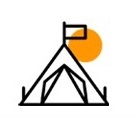
Fixed Departures All
Get yourself fit, nutrition tips, things to take, health & safety.
- Accommodations at Trek: All accommodations on the trek will be on twin sharing basis in Tents or Homestays. Any accommodation in a hotel/guest house/hostel will be in a budget hotel.
- Guides: An experienced guide will accompany you for the trek. The team will have years of experience and well equipped for any emergency situation.
- Services of a Professional Trekking Team: A team of an experienced Cook, Camp Staff, Porters/Mules will accompany you for all the arrangements on the trek .
- Meals: All Meals on the Trek are included. We will serve Vegetarian Indian food on the trek which will be cooked by our high altitude chefs. It will be a five-course meal plan.
- Camping and Safety Equipment: All the camping equipment such as Tents, Sleeping bags, Toilet Tents, Dining Tent, Mattresses, and other things will be provided by us and we guarantee the quality. Safety Equipment including Medical kit, Oxygen Cylinder, Oximeter, Crampons & Gaiters(if required) will be provided by us. We recommend you to bring your own sleeping bags if possible.
- Trek Permits and Forest Camping Charges: Only for Indian Clients, All the applicable trekking permits, Camping Charges, Forest Entry Fee, etc will be paid by us. Foreigners have to pay these charges if not mentioned.
- A Life-Changing Experience: We assure you that by trekking in the Himalayas you will have a life-changing experience and we will do everything we can to provide you with the best services and make your venture in the wild an unforgettable one.
Note: Prior to booking any adventure with Trekmunk, it will be mandatory to sign the waiver form and get a medical certificate from a doctor in due time, without these, you will not be allowed to start the trek. All this will be done online without using any paper.
- GST and Other Taxes: The goods and services tax is not included in the price mentioned with the trek. They are subjected to change according to the government rules of India.
- Food in Leh: Food in Leh is not included in the package. You can dine anywhere in Leh city, we can recommend a few good options.
- Flights and Transportation: Flights or other means of transport are not included in the package. Transportation from Home city to Leh and Leh to Home city is not included in the package. Any expenses occurred during the journey are not included in the package cost.
- Personal Equipment: Your Rucksack, personal clothing, shoes, trek poles, and other personal trekking gear is not included in this package. You have to bring your own gear according to the weather and difficulty of the trek.
- Portage of Personal Bags(Offloading): We highly advise you to carry your own burden (your rucksack) but due to any reason, if you wish to not carry your rucksack, we can arrange for a porter/mule to carry it. For this service, you will be charged over and above the trek cost. The charges for offloading vary with every trek.
- Travel Insurance: Travel Insurance is not included in this package. We recommend you to have travel insurance before opting for such adventures. You can buy insurance from us while booking the trek, it is optional.
- Personal Expenses: Any personal expenses incurred (Laundry, Bottled Water, Beverages, Snacks, Orders at tea houses or dhabas, Tips for guides, Camera fees, etc) are not included in the package.
- Emergency Expenses: Any costs arising out of unforeseen circumstances such as accidents, bad weather, landslides, road conditions and any other circumstances beyond our control are not included in the package.
- Anything not mentioned in Inclusions of the package.
Cancellation Policy And More Information
Booking Terms:
1. Confirmation Policy :
Upon Booking, An invoice will be sent to your mail & within 12 to 24 hours the booking confirmation with additional details will be sent to your mail.
2. Cancellation Policy:
Note: Following Cancellation policy will be followed for departures booked on or before 31st May 2021-
1) Cancellation up to 7 days before the start date of the trek: Get a complete cash refund (minus 5% transaction fee). The money is refunded to the same bank account, credit, or debit card from where the payment was made.
2) Cancellation during the last 6 days before the start date of the trek, and not counting the day of the trek: Full refund with 100% of the trek fee in the form of a Trekmunk Trek Voucher. Valid for 1 year from the date of issue. Can be used on any Trekmunk trek.
3) Cancellation on the start day of the trek, or no show on the start day of the trek : Unfortunately, no refund.
For more details, go to https://www.trekmunk.com/cancellation-policy
3. Refund Policy:
Any refund applicable will be processed within 10 to 15 business days as per the company policy.
4. Postpone/Transfer of a booked trek:
1. You can postpone your booked trek for a period of two months (61 days) but we will charge a 20% processing fee. The last date for the postponement will be 15 days before the start of the trek. Failing to book the slot in 2 months (61 days) time, would be considered a cancellation with no refund of any kind. Postpone of a booked trek can only be done once.
2. You can transfer your booked slot for the trek to any fit person till 15 days before the trek. You just have to mail us the request and rest we will handle. The new person has to get all the mandatory documents duly signed for the trek.
More Information:
1. We Trek for a Cause : For overall development of the areas we run our operations in, we donate Rs 100/- per booking from our profits which are used for the upliftment of the local people and conserving nature. We have named this initiative as - Trek for a Cause. For more details, follow: https://www.trekmunk.com/trek-for-a-cause
2. We are paperless : We are focusing on Sustainable Tourism and to do that we are trying all measures to convert our trek operations to be Eco-Friendly. Going Paperless is one step closer to our aim.
3. Single-Use Plastic : Trekmunk does not encourage the use of single-use plastic items. We are ensuring that our team is working together to reduce the problem and educate those around them. We will send you instructions on how to go plastic-free on your adventures.
4. Preparing for your Holiday : Getting some additional exercise makes a lot of sense to spend time before coming on a trekking adventure. The fitter you are, the more enjoyable you will find the experience. Hiking in the hill country is the best training but jogging, squash and swimming are also good for developing cardiovascular fitness and stamina. To read more on how to get fit, follow: https://www.trekmunk.com/get-fit-for-trek
5. Electricity Supply & Plug : You will get electricity supply till the starting point of the trek. If not Indian, We recommend you check if you require an adaptor for your electrical items at: http://www.worldstandards.eu/electricity/plugs-and-sockets/
6. Currency: The unit of currency in India is the Indian Rupees.
7. Health & Vaccinations:
Severe Allergies : If you have a severe allergy please inform the Trekmunk office before you travel. We will do all we can to help, but we cannot guarantee an allergy-free environment on trekmunk trips. You will need to carry your own treatment for the allergy with you, as 'adrenaline auto-injectors' are not carried as standard by our leaders and staff. You should inform your leader on the arrival of your allergy, and let them know where you keep your adrenaline pen.
Vaccinations : You should contact your doctor or travel clinic to check whether you require any specific vaccinations or other preventive measures. You should be up to date with routine courses and boosters as recommended e.g. diphtheria-tetanus-polio and measles-mumps-rubella, along with hepatitis A and typhoid. Malarial prophylaxis is not usually required for trips in the mountains, however, if you are visiting rural and remote low lying areas then they might be necessary.
8. Passport & Visas/Identity Proofs : If foreigner, Validity for 6 months, should have blank pages, and should be kept with yourself all the time.
9. Water : If you are on a trekking or cycling holiday, water is supplied to fill up your individual bottles. This will be boiled or filtered. Additionally, you should take purification tablets or a filter bottle (such as a LifeStraw, Sawyer Filter) to treat your water when in towns or where water is not supplied. We do not encourage the purchasing of single-use plastic bottles.
10. Altitude : This adventure involves going to a very high altitude. This is not something that you should worry about; the human body is quite capable of adapting to a very wide range of altitudes, but it is important that we follow some simple rules in order to acclimatize successfully. We will send you the information in your mailbox about Acute Mountain Sickness and trekking in high altitudes. On this trip, we carry bottled oxygen for use in emergencies.
11. Guidance on Tipping : Tipping is the accepted way of saying thank you for good service. Normally the guide and any other trek staff are given their tips at the end of the trek and this is best done as a group. The main guide will make sure that the tip is appropriately distributed among all the staff members on the trek.
12. Spending/Emergency Money : Approximately Rs. 8000-10000/- (in Indian Currency)should be carried for miscellaneous expenses including porter and trek crew tips, drinks, soft drinks, etc. We recommend that you carry your travel money in the form of cash as the availability of ATM is less in these remote areas. This can also serve as your emergency spending money.
13. Travel Insurance : It is recommended to have travel insurance for these kinds of adventures. When taking out insurance please ensure the policy you choose covers you for the activities and altitude included in your itinerary. We will ask for the Travel Insurance Details over a mail. Indians can buy insurance from us while booking the trek.
Traveling with these people is surely an insanely enthralling experience. This is my second backpacking trip with these people and the way I had imagined backpacking to be has been fulfilled by them and they have given me surely more. The best thing about travelling with these pe ...
Chadar trek is considered to be one of the most difficult and dangerous treks, which requires a lot of skilled trek leaders, a perfect guide and a strong team of porters. I choose Trekmunk for Chadar and they proved they are a perfect team. Highly skilled trek leaders, profession ...
I chose (after a lot of research) Trekmunk for my first trek - The Hampta Pass and Chandratal Trek. And I am so really glad I did so. The trekker needs to only focus on the trek and the beautiful landscape around him/her. The rest of everything is taken care of by Trekmunk from d ...
Traveling with these people is surely an insanely enthralling experience. This is my second backpacking trip with these people and the way I had imagined backpacking to be has been fulfilled by them and they have given me surely more. The best thing about travelling with these people is that you understand the true meaning of travelling and experience it very closely. You are given great freedom but at the same time taking care of. You participate in the process of backpacking. You have a trip leader with you but he acts more like a friend as the days pass by! We attended the hornbill festival and did a wonderful trek to Dzukuo valley in Nagaland with the leadership of this group. You break the boundaries of yourself when you travel like a true traveller and that is possible with these people.
Chadar trek is considered to be one of the most difficult and dangerous treks, which requires a lot of skilled trek leaders, a perfect guide and a strong team of porters. I choose Trekmunk for Chadar and they proved they are a perfect team. Highly skilled trek leaders, professional skiers, gave us details on how to walk on slippery ice. Professionally trained and certified with wilderness medication programs always ready to take your care in any condition and travelers themselves. One will enjoy their company, their travel stories and their way of leading a trek. Cheers to team Trekmunk.
I chose (after a lot of research) Trekmunk for my first trek - The Hampta Pass and Chandratal Trek. And I am so really glad I did so. The trekker needs to only focus on the trek and the beautiful landscape around him/her. The rest of everything is taken care of by Trekmunk from day 1 till the end of the trek. Scrupulously managed logistics; no compromise on safety and security; experienced, intelligent and knowledgeable trek leaders; scrumptious meals; contingency and backup plans; etc. make Trekmunk an ideal choice to go trekking with. My trek was lead by Ashish Pathania, Prashant Reddy and Sanjay Thakur. The three are were thorough professionals. They were jolly, very helpful, experienced, knowledgeable, organized, and needless to say polite yet strict when needed. They played the most important roles in making sure our overall trekking experience was a wonderful one. Thank you Trekmunk for one of the most beautiful experiences I have had till date. Will see you guys soon.
I had the best time of my life at Sandakhphu Phalut trek arranged by Trekmunk. Literally I felt like I was in heaven and I was soo very happy. I will recommend everyone to opt for Trekmunk. I was a solo woman traveler and was a bit worried, but things went very smoothly and I enjoyed it a lot. I miss my fellow trekkers too. I am very satisfied with their arrangements.
I was bored with my regular 9 to 5 schedule and then I decided to seclude myself from the chaotic city life. So, I went to Brahmatal trek last month along with a couple of my friends. We went with Trekmunk and it was a lovely experience. The trek guide, Ramesh was very polite and helpful. The food and snacks were amazing. The activities in the campsite during our overnight stay is something that I am gonna cherish my entire life. I am waiting for my next trek with Trekmunk.

Related Blogs
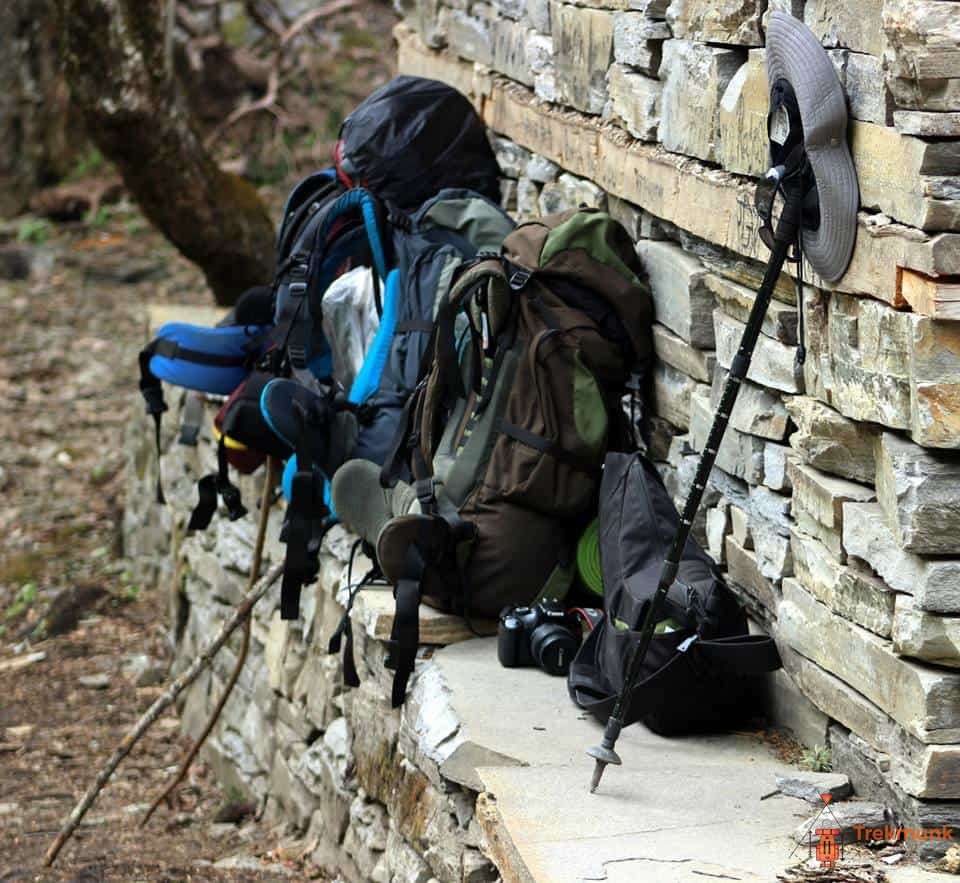
Related Tours
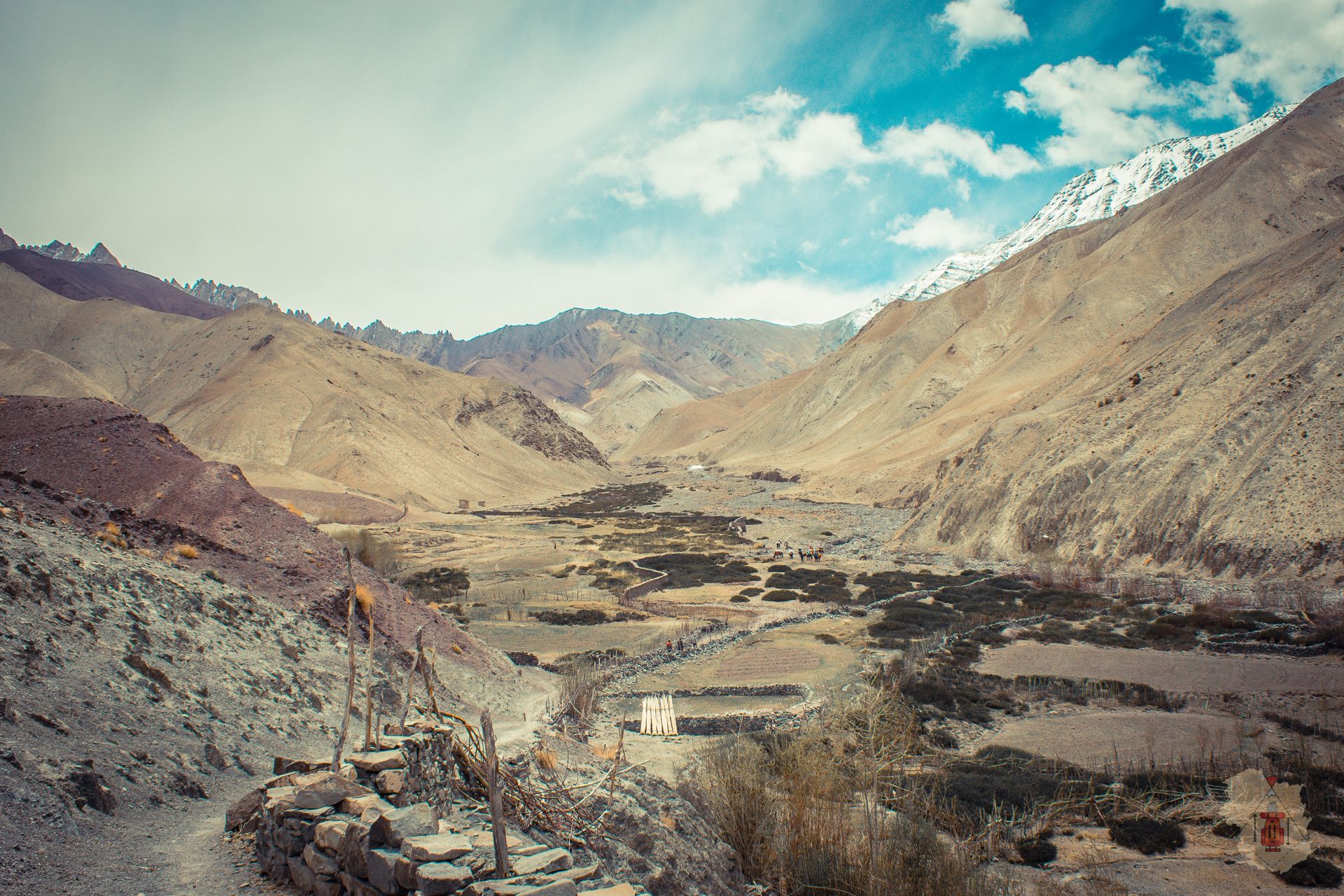
Nubra Valley Trek
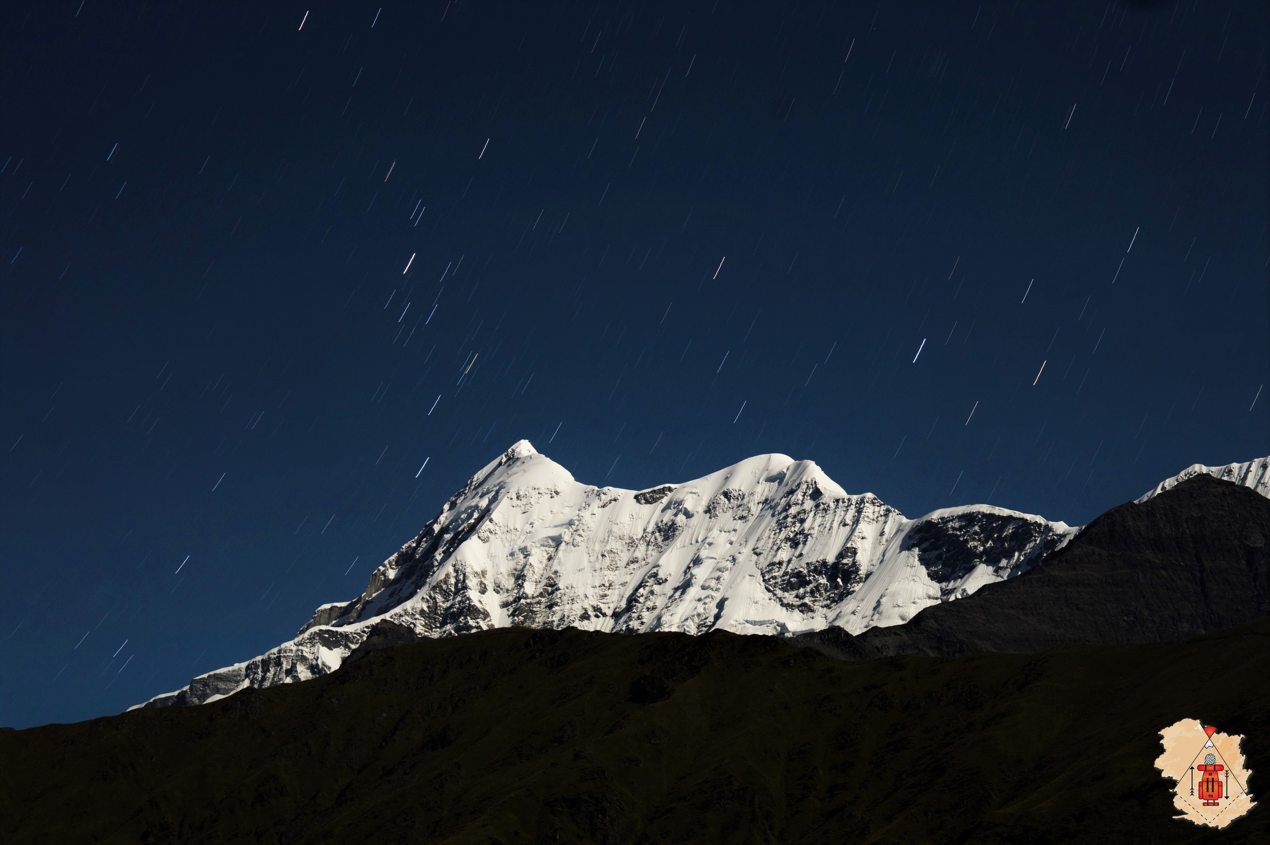
Roopkund Trek
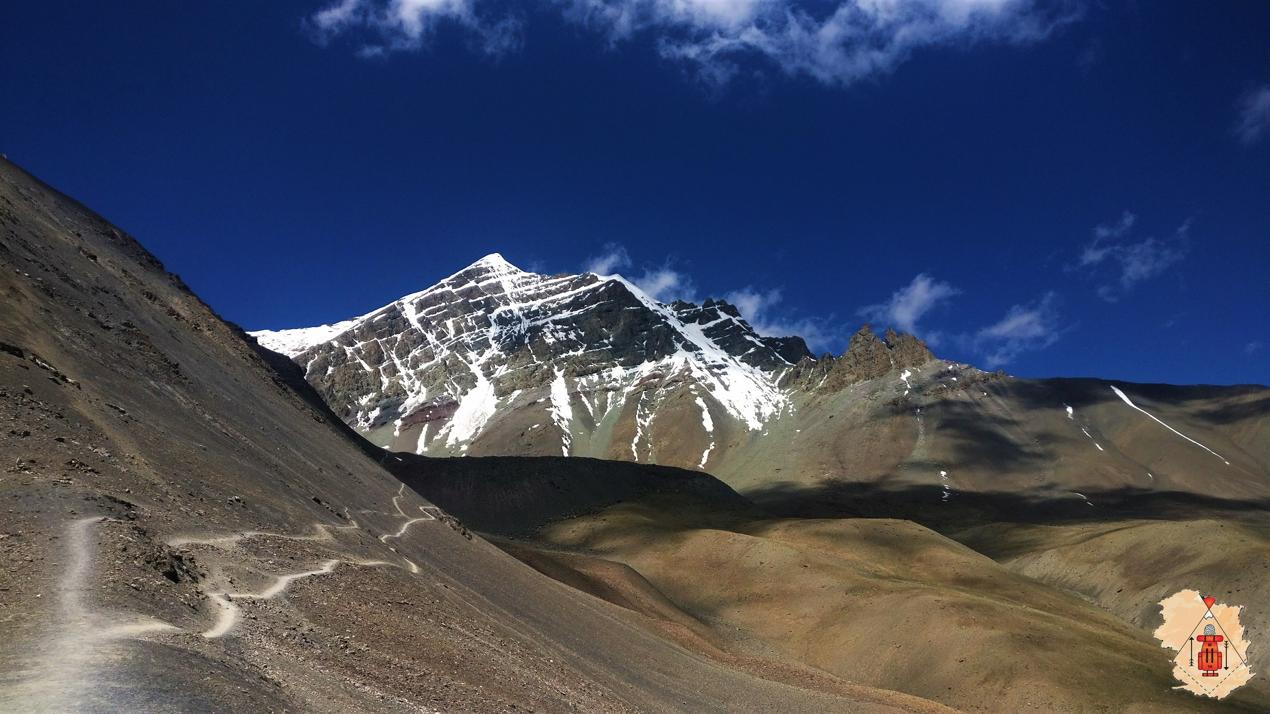
Stok Kangri Trek
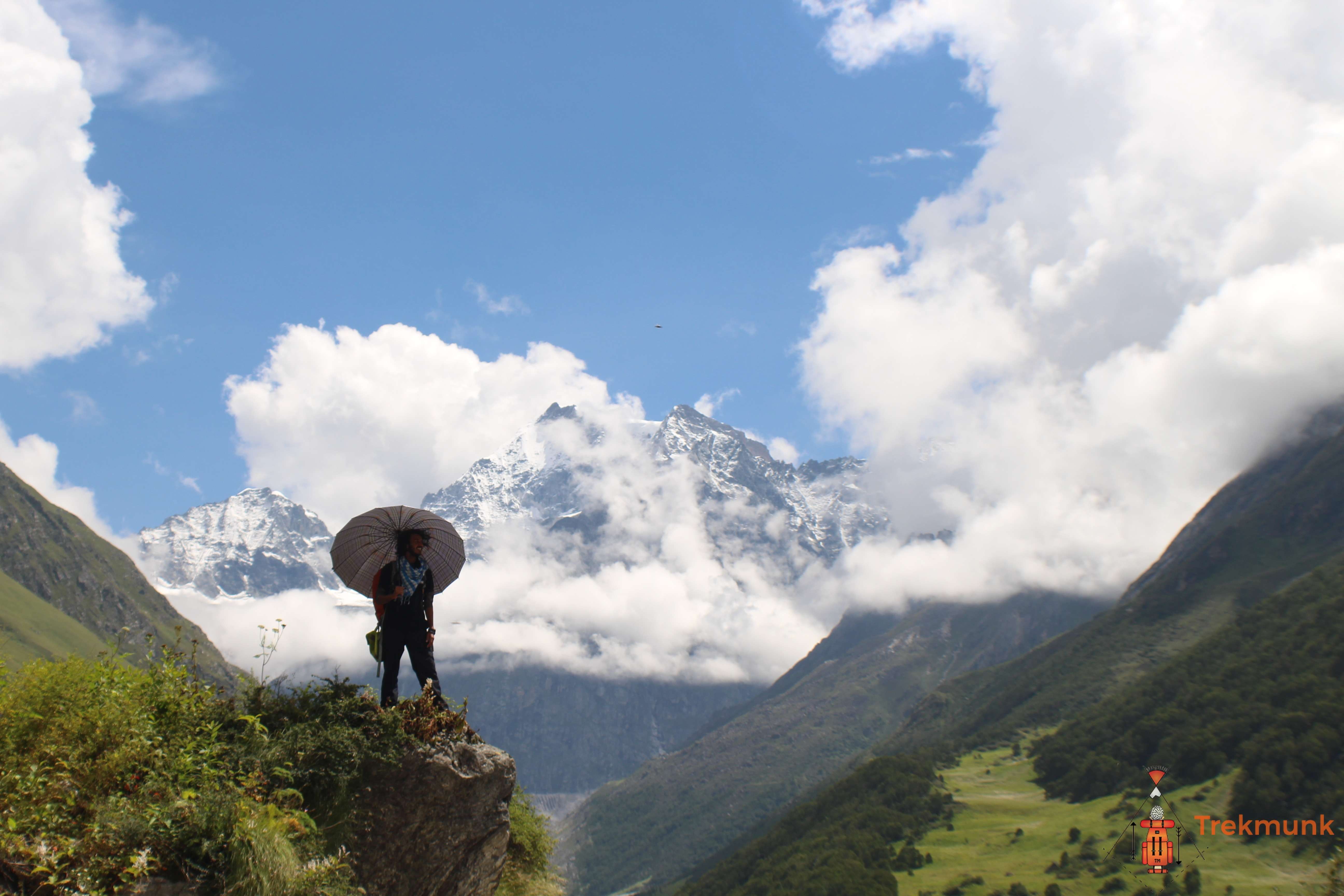
Valley of Flowers Trek

"Trekmunk is changing the indian trekking industry"
"10 Most Promising Adventure Sporting and Trekking Companies - 2020"
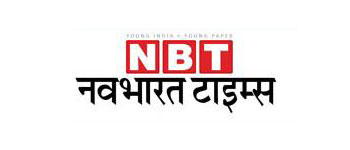
" Things you do for the Passion for Travel"
Hello there, How can we help you ?
Timing: 10 am to 6 pm IST (GMT +5:30)
Whats App Us
You will be redirected to your dashboard shortly. We will also call you back in 24 hrs .
- Markha Valley Trek: A Gateway To Ladakh’s Hidden Villages And Valleys
Markha Valley is bestowed with the diverse beauty of rocky mountains, snowcapped peaks, and serene hamlets. Thus, making Markha Valley Trek a rollercoaster ride in different terrains. Circling some parts of Hemis National Park, this trek has a difficulty level of moderate to difficult depending on your fitness level. Also known as the tea house trek, this trek offers varied levels of adrenaline rush. Some of which include steep ascends, river crossing, bridge crossing, etc. What by day paints a picture of a picturesque landscape, by night covers you with a blanket of numerous stars. Starting off Chilling village, this trek sure makes for one hell of an experience.
Best Time To Go For Markha Valley Trek
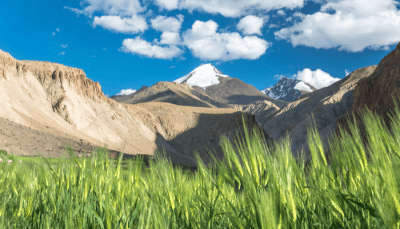
The best time to visit Markha Valley Trek is during the months of June and September. These months comprise the summer season in Ladakh. During these months the temperature is moderate and the terrain is mostly clear. Moreover, it is the best time to visit both the Srinagar-Leh route and the Manali-Leh route. Post-September, the roads get blocked due to frequent snowfall and most passes get closed. Traveling during the months of June and September, you can also save yourself from the blows of harsh winter winds.
The ideal duration of this trek comprises a total of 6 days. A duration of 6 days takes you through various scenic check-points such as Chilling, Skiu, Markha, Hankar, Nimaling, Kongmaru La, Shang Sumdo, etc. Moreover, it lets you take sufficient halts in-between the trekking trail. Even though Markha Valley is considerably warmer during June, August, and September, it is nowhere as warm as the planes. Therefore, make sure to always carry woolen clothing and an extra pair of socks.
Must Read: 12 Astounding Spots For Trekking In Ladakh That Need To Be On Every Hiker’s Bucket List!
How To Reach The Base Camp
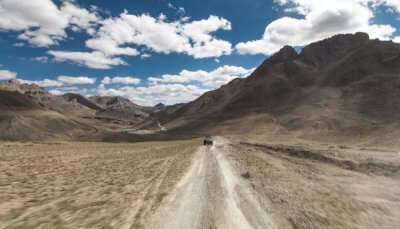
Image Credits: Pixabay
The base camp for Markha Valley Trek is a small hamlet called Chilling. This village is situated at an elevation of 3,346 meters above sea level. Moreover, it is connected by Leh by the following modes.
- By Bus: Situated at a distance of approximately 66 km from Leh, Chilling can easily be reached by road. Moreover, it is the only mode of transport to reach Chilling from Leh. The village is situated inside the premises of Hemis National Park. One can make their journey by bus every Wednesday and Sunday.
- By Car/Taxi: Another way to travel to Chilling village by the means of car or taxi. It is also the fastest mode to reach Chilling by Leh. Taxi rides will cost you somewhere around INR 1200 and INR 1500. If you don’t have much experience driving in high altitude regions, it is recommended that you hire a local driver.
Suggested Read: 7 Valleys In Ladakh That Prove It Is Indeed A Paradise On Earth!
5 Highlights Of Markha Valley Trek
Markha Valley Trek in Ladakh crosses past many awe-inspiring checkpoints. Some of these checkpoints are beautiful campsites while some are picturesque villages. Listed below are some of the highlights of this trek.
1. Skiu Village
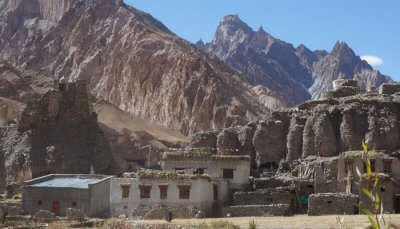
Skiu Village is situated adjacent to Kaya Village. This village is situated within the premises of Hemis National Park. It is one of the very first villages that you will pass through in this trek. It is circled with huge rocky mountains. Here, one can stay in homestays and can also opt to camp.
Suggested Read: Stok Kangri Trek: A Remarkable Yet Difficult Trekking Experience In Ladakh!
2. Markha Village
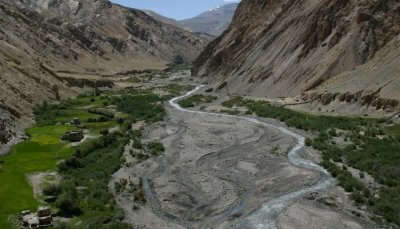
Situated alongside the famous Markha River, Markha Village is the biggest village situated in Markha Valley. It is home to more than 22 families and is an important checkpoint of Markha Trek . Here, one can also find numerous homestays to rest for the night. En route, you can also spot local people with their yaks.
Suggested Read: Explore The Hemis National Park In Ladakh to Witness Wildlife In High Altitudes
3. Hankar Village
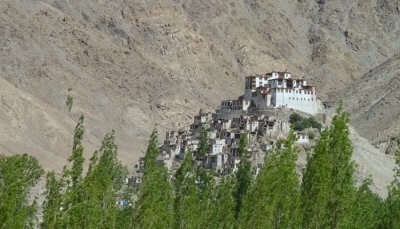
Hankar is a small village with awe-inspiring landscapes. It is also considered as one of the most beautiful stops in this trek. This village also offers you picturesque views of a monastery. Moreover, staying the night in this village will also bring you closer to the local cuisine of Ladakh.
Suggested Read: 8 Tourist Circuits Of Ladakh To Cover The Best
4. Kang Yatse Hill
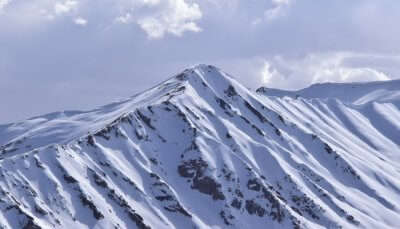
On your way to Markha Trek, you will also enjoy the spectacular views of Kang Yatse Hill. This throne-shaped peak is situated inside the premises of Hemis National Park. Enjoy gazing at the snow-covered peaks and capture the incredible landscape with your camera. Kang Yaste has two summits roughly situated at an elevation of approximately 6400 meters.
Suggested Read: Head To Ladakh In Winter For An Adventure Of A Lifetime
5. Kongmaru La

Kongmaru La is situated at an elevation of 5130 meters above sea level. It is also the highest point of the trek and offers spectacular views of the Kang Yatse Hill. This high-altitude pass connects Markha Valley with the Indus Valley. You will pass through this pass on your way to Chokdo Village.
Further Read: Leh Ladakh Bike Trip: Everything You Need To Know From The Scratch!
Head on for a breathtaking experience with Markha Valley Trek in Ladakh. Also, witness the intriguing changes in the enchanting landscape as you get-going. This trek accounts for nothing more than a thrilling holidays in Ladakh . So say Juley to your next adventure in the mountain peaks of Ladakh.
Disclaimer: TravelTriangle claims no credit for images featured on our blog site unless otherwise noted. All visual content is copyrighted to its respectful owners. We try to link back to original sources whenever possible. If you own rights to any of the images and do not wish them to appear on TravelTriangle, please contact us and they will be promptly removed. We believe in providing proper attribution to the original author, artist or photographer.
Frequently Asked Questions About A Gateway To Ladakh
What is the best time to go for Markha Valley Trek?
The best time to go for Markha Valley Trek is during the months of May and September. During these months the temperature is moderate and the terrain is mostly clear.
What are some of the safety tips to keep in mind while trekking in Ladakh?
Given below are some of the safety tips to keep in mind while trekking in Ladakh:
- Owing to the high altitude, It is important that you take time to acclimatize for a few days upon your arrival in Leh and before going on a trek.
- Always equip yourself with a personal first-aid box.
- Make sure you are accompanied by a travel guide before heading for a trek.
- During your trek, make sure to take sufficient water breaks to keep yourself hydrated.
- Also, pack ample dry snacks like dry fruits to help you keep the pace.
- Carry a sturdy pair of hiking shoes that you are comfortable wearing.
- Pack an extra pair of socks and undergarments.
- Pack extra batteries and power banks.
What are the top treks in Ladakh?
Given below are some of the top treks in Ladakh:
- Stok Kangri Trek - Difficult
- Kang Yatse 2 Trek - Difficult
- Chadar Trek - Difficult
- Markha Valley Winter Trek - Moderate
- Sham Valley Trek - Moderate
Are there any villages situated in Markha Valley?
Listed below are some of the villages situated in Markha Valley:
People Also Read:
Skandagiri Trek Chadar Trek Bhrigu Lake Trek
Recent Posts

Manali To Leh Road Trip: A Comprehensive Guide For Your Next Adventure

Leh To Nubra Valley: A Comprehensive Guide To Plan Your Next Trip
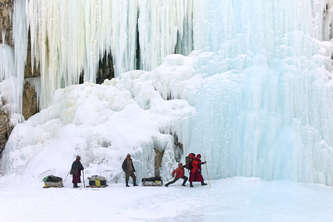
Head To Ladakh In Winter 2023 For An Adventure Of A Lifetime
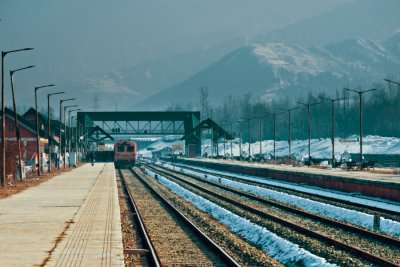
The New Direct Train From Delhi To Leh Will Get You There In Half The Time
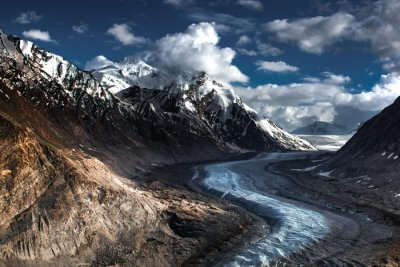
Zanskar Valley Trek 2023: A 10-Day Adventure For All Trekking Enthusiasts1
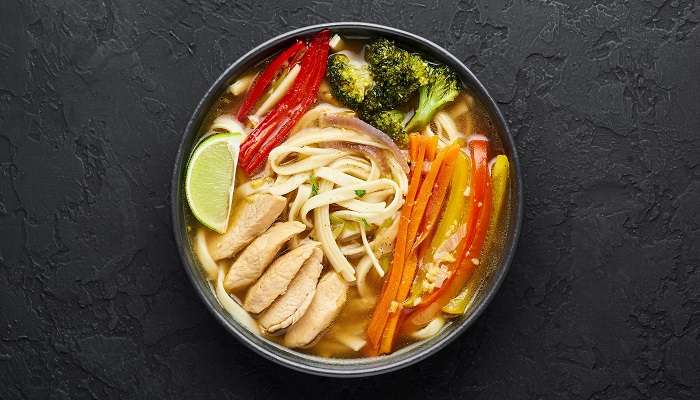
Food of Ladakh: 8 Must-Try Dishes For Every Foodie
Trending Blogs

20 Mysterious Places In India To Visit In 2023 More Bizarre Than The Bermuda Triangle

10 Scariest Roads In India That Are A Driver’s Nightmare

101 Places To Visit In India Before You Turn 30 in 2024

35 Exotic Places To Visit In December In India 2024 To Enjoy A Surreal Vacation

60 Best Honeymoon Destinations In India In 2024

95 Best Honeymoon Destinations In The World In 2023 For A Romantic Escape!
Best Places To Visit In India By Month
Best places to visit outside india by month.
- TravelTriangle
- Ladakh »
- Tour Packages
- Honeymoon Packages
- Family Packages
- Budget Tour Packages
- Luxury Tour Packages
- Adventure Tour Packages
- Group Tour Packages
- Kerala Tour Packages
- Goa Tour Packages
- Andaman Tour Packages
- Sikkim Tour Packages
- Himachal Tour Packages
- Uttarakhand Tour Packages
- Rajasthan Tour Packages
- Tour Packages From Delhi
- Tour Packages From Mumbai
- Tour Packages From Bangalore
- Tour Packages From Chennai
- Tour Packages From Kolkata
- Tour Packages From Hyderabad
- Tour Packages From Ahmedabad
- Kerala Tourism
- Goa Tourism
- Sikkim Tourism
- Andaman Tourism
- Himachal Tourism
- Uttarakhand Tourism
- Rajasthan Tourism
- Hotels in Kerala
- Hotels in Goa
- Hotels in Sikkim
- Hotels in Andaman
- Hotels in Himachal
- Hotels in Uttarakhand
- Hotels in Rajasthan

- Cultural Trips
- Wildlife Expeditions
- Destinations
- Outdoor Programs
- Discover trekking
- Health and fitness
- Experiential learning
- Trekking tips
- Outdoor skills
- Trekking gear
Markha Valley Trek
Proceed booking, already a member.
Username or E-mail
Forget Password?
Don't have an account? Create one.
Or continue as guest, adding item to wishlist requires an account, why book with us.
- Small groups - (6-12)
- Experience nature
- Sustainable experiences
Got a Question?
Do not hesitate to give us a call. Our team of experts will be happy to talk to you.
+91-9667867679 [email protected]
- 8 Days/7 Nights
- 17100 ft./5212 m
- 12 Participants
- August-September
Markha Valley Trek Overview
Beyond the commercial lanes of Leh City lies a remote Himalayan escape, an offbeat trail of Markha Valley. Markha Valley trek is one of the most popular trekking routes in Ladakh. Tucked inside the Hemis National Park, the trek is renowned for dynamic sceneries, quaint villages dotted with colourful monasteries and rich Ladakhi culture.
An adventurous and less explored trek in Ladakh, Markha Valley offers picturesque landscapes, a thrilling climb to Kongmaru La Pass and the panoramic beauty of Mt. Kang Yatse. The hamlets along the trail have tiny houses of mud and brick. The fluttering colorful prayer flags keep you company and the Buddhist monasteries in these villages enhance the serenity of these remote villages.
The trek in the cold desert of Ladakh is a hit among adventure lovers. On this river valley trek, trekkers discover the majestic view of Mt Kang Yatse, Stok Kangri peaks, Ladakh, and Zanskar ranges. The highlight of the Markha Valley trek is witnessing the pristine Kang Yatse peak (6,400) atop the Kongmorula Pass at 17,000 ft.
As the trek is inside the Hemis National Park, you can encounter plenty of wildlife sightings on the trail. You will come across wild sheep and yaks grazing high on the steep mountain slopes.
Markha Valley is one of the few Indian treks where you can enjoy the comfort of tea houses. Rich Ladakhi culture, desolately beautiful landscapes, and exotic Himalayan wildlife perfectly define the Markha Valley trek. This journey of an immersive escape reveals the untouched beauty of Ladakh’s interior, providing a different perspective on life and the diverse experiences the place has to offer.
Markha Valley is a perfect getaway if solitude is what you seek. Stunning landscapes, Himalayan wildlife and enriching culture await on this off-beat trail in Ladakh.
Markha Valley trek brochure
Inclusions .
- Breakfast, Lunch and Dinners (Day 1 Dinner to Day 7 Breakfast)
- Tents, Homestays/Dorms
- Cloakroom Charges
- Trained and Qualified Guides
- Certified Outdoor Leaders
- National Parks and Sanctuaries
- Forest Permits and Entry fees
- Kitchen Tent
- Toilet Tent
- Dome Tents
- Sleeping Bags
- Wilderness Medical Kit
- Climbing Rope
- Climbing Accessories
- Microspikes
- Oxygen Cylinder
- Oximeter, Thermometer etc.
Exclusions
- Airport Pickup and Drop – Note you have to manage your travel yourself (The address of your stay in Leh will be shared 3 days before your trek starts.
- Stay of Day 8 in Leh.
- Transit meals (Day 1 and Day 8)
- Personal expenses
- Offloading charges
- Cost incurred due to change in the itinerary
- Additional services (including mules, assistance, health-related support etc.)
- Anything not mentioned in the inclusions list.
Markha Valley Trek Itinerary
Day 1 : reach leh (11,500 ft.).
We reach Leh and acclimatize in Leh as the town is located at an altitude above ten thousand. We go for a small hike to Shanti Stupa and stay in a Home Stay. the day is for resting and letting your body get adjusted to the condition outside.
Day 2 : Acclimatisation Day at Leh. Morning walk to Shanti Stupa and sunset climb to Tsemo Namgyal.
As Leh is an altitude of 11,500 ft, it is essential to stay here for one more night and let your body acclimatized to the weather. It is important to let your body adjust to the weather and altitude of the place. You can go for an exploration around the city, and witness the charm of Leh city. However, avoid doing any activity that can stress your body and hamper the acclimatization process. Drink enough water, and hot soup and keep hydrated.
Day 3 : Drive to Chilling (10,500 ft.) and trek to Skiu (11,150 ft.)
We reach Chilling, the confluence of Indus and Zanskar. Chilling is also the place from where the Chadar trek starts. It takes around 2 hrs to reach Chilling through picturesque rocky mountains. You will drive through the pretty landscapes of Ladakh to reach Chilling.
After you get down at Chilling you will start climbing to Skiu. The trail to Skiu is barren and without any settlements on the way. On the way, you will witness rocks of different colors on the way to Skiu. The stream flows by in the village.
Skiu is a small village with very few houses. We reach Skiu in the afternoon and have lunch there. We will camp here for the night on the outskirts of the village
Day 4 : Skiu (11,150 ft.) to Sara (11,800 ft.)
The trail today is on level ground, and you will reach Sara after a gradual walk for about 5 to 6 hours. You will walk on the riverbed, and Markha river gives you company almost throughout the trail. Sara is a beautiful village covered with green paddy and barley fields. The scenery of this quaint village is picture-perfect. The village is the only place where you will see some greenery. The village has green barley fields, and the charm of old stone and mud houses. You cannot help but soak in the beauty of nature. Our team spends time in indulging outdoor activities while the solitude of the village
Day 5 : Sara (11,800 ft.) to Markha (12,200 ft.)
Today, the starts early and you will cross a small hamlet of Chalak on the way. You will walk along the Markha river. You will be crossing the river today and the water will be icy cold. After Chalak, the trail climbs gradually. After walking for another few hours on an undulated trail, you will reach Markha village. Markha village is the biggest village on the entire trail and has the maximum number of houses. You will also find tea houses and homestays here.
Day 6 : Markha (12,200 ft.) to Hankar (13,400 ft.)
The day is comparatively comfortable today. You will start from Markha village and head for the next stop in Hankar. After walking on an undulated trail, crossing some icy cold streams, you will reach a small settlement of a few houses, Umlung. Umlung offers a spectacular view of Mt Kang Yatse.
Day 7 : Hankar (13,400 ft.) to Nimaling (15,800 ft.)
You will have to cross icy cold rivers today. The view continues to get better. You will see a monastery on the way to Namling. The trail is a mix of steep climbs and comfortable walk. After walking for a while you will reach the campsite at Thochuntse and have your lunch here. During the trekking season, you will find a few tea houses here.
You will also cross lakes on the way today. If you walk towards the right then you will reach the base camp, and the left route takes you to the campsite of Nimaling. From here, you will head towards Nimaling. After walking for another few hours the pasture of Nimaling opens up. Nimaling is a huge flat ground, and you can witness plenty of wildlife here. Himalayan Sheep, Yaks, and goats are grazing in the green pasture.
Day 8 : Nimaling (15,800 ft.) to Chokdo (12,100 ft.) via Kongmaru La (17,100 ft.) and Drive back to Leh
Today we will start around 7:00 AM and reach by 10-11 AM. Today is the summit day and you will be on the top of Kongmaru La Pass situated at 17,100 ft. While the view today is going to be beautiful the climb to the top is going to be challenging. The walk up to Kongmarula is a steep ascent, and an arduous one. Once you reach the top, you will get a network for the first time. You can call your loved ones while standing at 17000 ft. above sea level. Kang Yatse I, II, and III stand out prominently.
After spending some time at the Pass. You will descend from Kongmaru La through a narrow valley. As you continue to descend, on the other side of the pass, you will witness beautiful and colorful rocky mountains, a sight your eyes take time to believe. By the time you reach Chokdo, it will be around 5:00 PM in the evening. From Chokdo you will be picked up by a cab and you will drive back to Leh.
How to reach the basecamp of Markha Valley trek?
✈️ nearest airport – leh airport, ladakh.
Markha Valley trek starts from a place called Chilling. The distance between Chilling and Leh is around 60km and is covered in 2 hours. To begin the Markha Valley trek, one must first reach Leh, which is conveniently connected by air to major cities. You can fly directly to Leh or travel by road from Srinagar/Manali.
The other option to reach Leh is by road. Manali – Leh highway and Srinagar – Leh highway are the two options to reach Leh by road.
You can travel on shared cabs or buses from Srinagar to reach Leh. It is suggested to halt on the way. The distance of 437 km is covered in 11-14 hrs. You can opt for a night halt in the major towns of Sonmarg, Drass and Kargil.
If you travel from Manali to Leh by road, you can opt for shared cabs or bus services. The other option is to travel by private and HRTC buses from Manali to Leh. The distance between Manali and Leh is around 454 km and is covered in a 15- 16 hour drive.
Markha Valley Trek Map
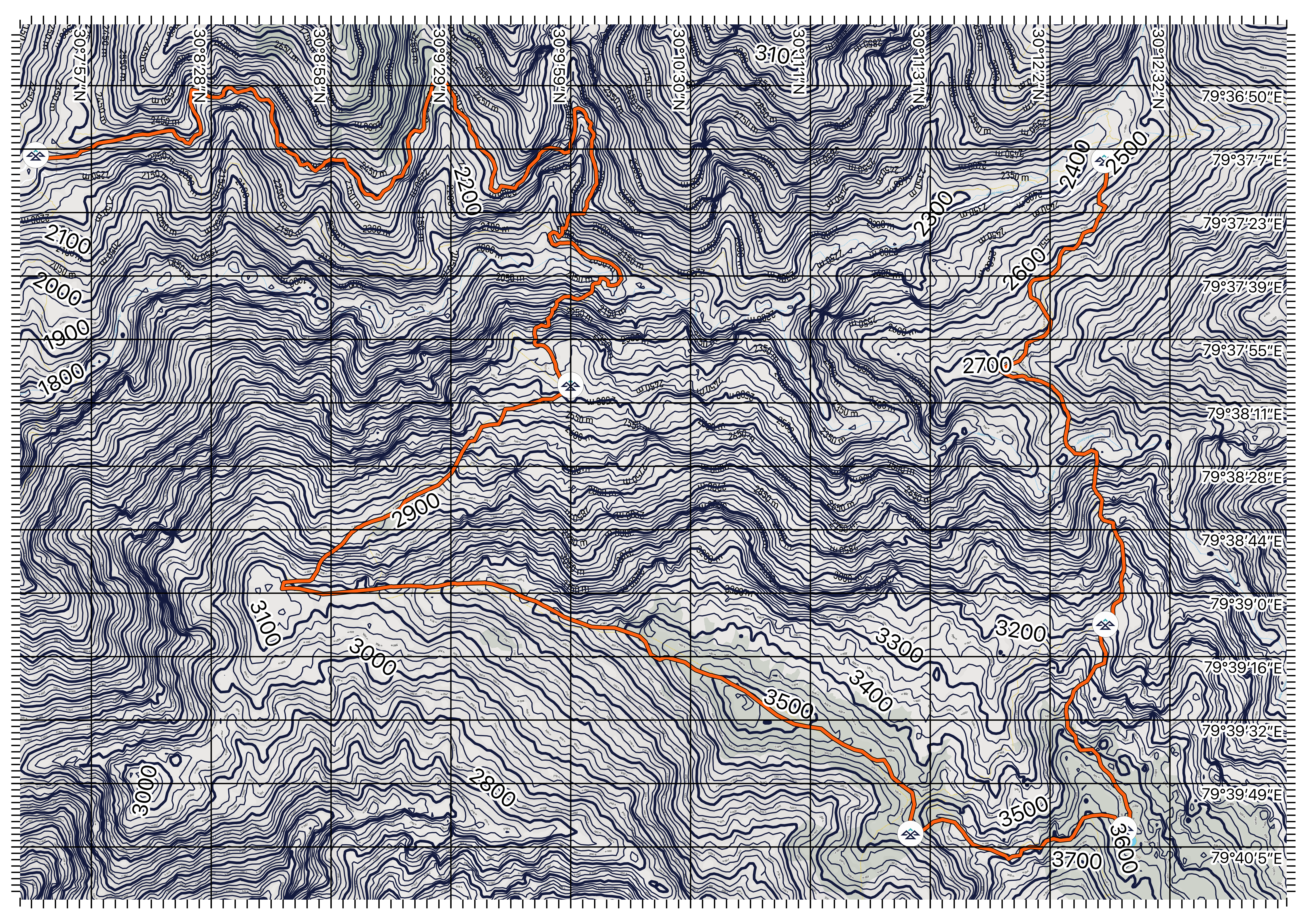
Markha Valley Trek FAQ
How long is markha valley trek.
The total distance of the Markha Valley trek is 78 km. You walk an average of 5 – 7 hours daily.
Is Markha Valley Trek suitable for beginners?
Markha Valley is a challenging trek. We suggest the trek to people with prior experience of high altitude trek. If you are a beginner with good physical fitness, you can consider the trek after consulting our Outdoor Leader.
How difficult is Markha Valley Trek?
The trek can be categorized as difficult considering the duration and altitude of Markha Valley.
What will be the temperature in Markha Valley trek?
Markha Valley’s temperature hovers around a minimum of – 5°C to 4°C during the summer season. The maximum temperature during the trekking season is 25°C.
Read more about Markha Valley temperature here .
What is the best time to visit Markha Valley Trek?
The best time to visit Markha Valley trek is from June to September. The trek is off-limit during winter due to harsh weather conditions.
Read more about Markha Valley’s best time here.
Will there be snow on the trek?
Yes. Markha Valley trek is accessible in summer. You will find the remnants of winter snow at Kong Marula Pass.
What is the cost of Markha Valley trek?
The Markha Valley trek cost is Rs 21500/-
The trek cost covers your experience from basecamp to basecamp.
Will there be a network in Markha Valley Trek?
The last place with a mobile network will be the base camp in Chilling. You will receive a scanty network on the last day of your trek at Kong Moru La Pass, then in Leh city.
Where is Markha Valley Trek located?
Markha Valley Trek is in Ladakh. The trek starts from a place called Chilling.
Where is the base camp of Markha Valley trek?
Chilling is the starting point of the Markha Valley trek. Chilling is at a distance of 68 km, around 2 hours from Leh City.
What is the duration of the Markha Valley Trek?
It takes 8 days to complete the Markha Valley trek, including travel to and from the base camp.
What is the altitude of Markha Valley trek?
Markha Valley trek takes you to an altitude of 17,100ft. Markha Valley starts at an altitude of 10,490ft from Chilling.
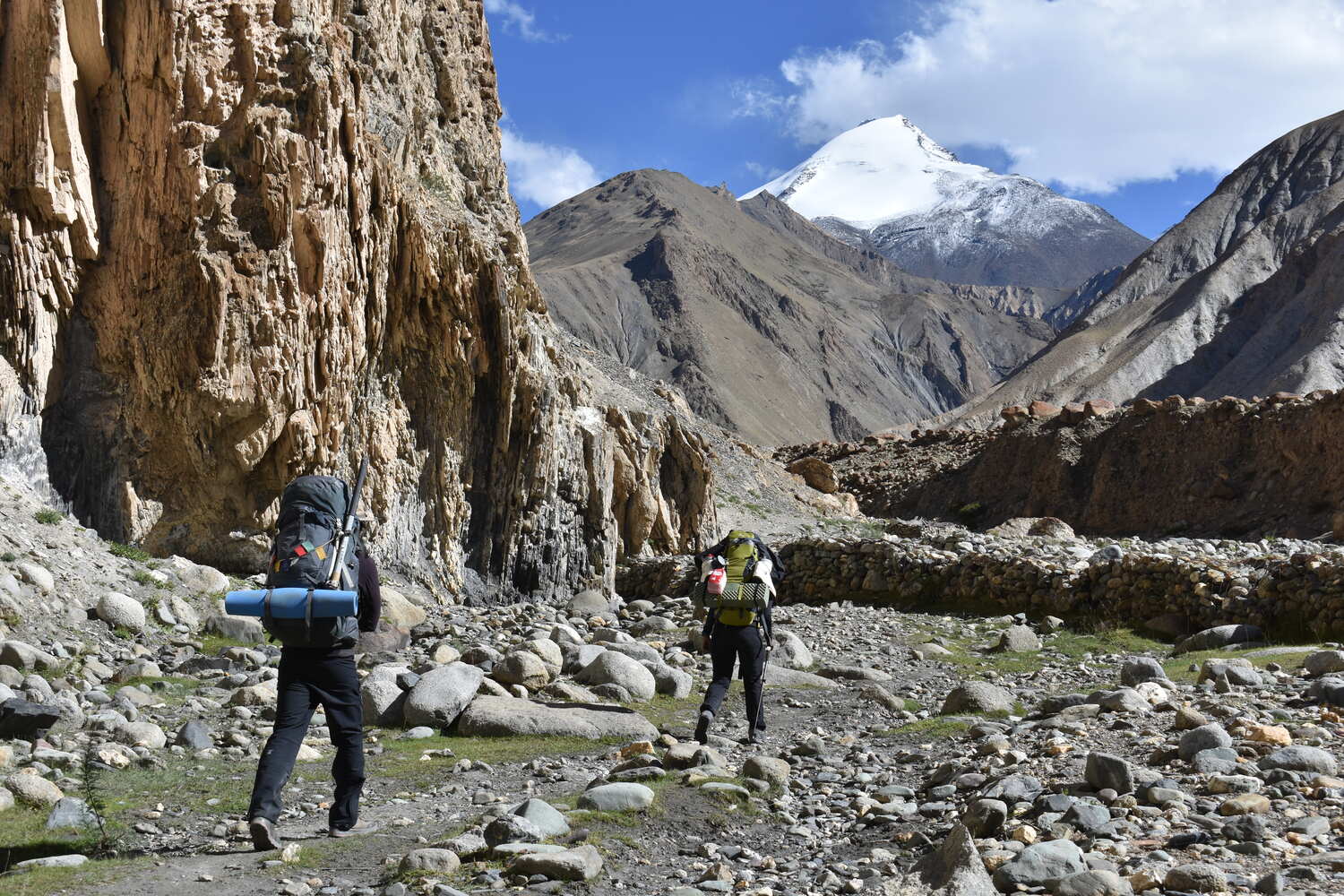
How should I prepare to avoid AMS?
Drink more water than your daily intake to avoid AMS on the trek. Additionally, it’s crucial to have nutritious meals during the trek. In case, you are still concerned about getting AMS, we recommend carrying Diamox tablets with you. However, your outdoor leader will advise you on whether or not to take it.
I have a medical condition. Can I join the trek?
We believe that everyone should have the opportunity to trek, regardless of any medical conditions they may have. At OWLS, we have our doctor on hand to discuss any medical concerns you may have. We can provide the necessary support and preparation for your trekking experience.
What document do I need to carry?
Please keep the following documents ready before filling out this form
- Health form (for all participants of Kashmir and Himachal Pradesh treks) and (for all participants <15 and > 60 years of age)
- RTPCR for children <15 years/Vaccination certificate for adults (for Nepal treks)
Should I bring snacks to eat on the trek?
Although we provide filling breakfast, lunch, and dinner along with morning tea and evening snacks, you can carry some light snacks for munching on the trail. You can carry protein bars, dry fruits, and homemade snacks like Shakkarpara to help you give that extra energy on the trek.
Who will be leading my trek?
Our Outdoor Leaders are a team of experienced and well-trained individuals. They have completed the Basic Mountaineering Course and possess first-aid knowledge. In addition to this, they are certified Wilderness First Responders and have been trained to act responsibly in case of any unforeseen accidents.
Do I need to get my medical kit for the trek?
You don’t need to carry your medical kit. If you have your prescribed medications, you need to carry them on the trek
What kind of arrangement is available for accommodation on the trek?
The accommodation will be on twin sharing basis. One tent will be shared by two trekkers.
Is there any arrangement for offloading on the trek?
Yes. Communicate your requirement to the trek leaders beforehand, as it will be difficult to arrange to offload at the last minute. The offloading charges will be Rs 350 per bag, and your bag should not weigh more than 9 kg.
Note: At OWLs, we suggest our participants carry their backpacks and avoid offloading. However, in case of pressing circumstances, you can opt for offloading.
Is there any option to keep our luggage at the base camp?
Yes, you can leave the extra luggage at the base camp. However, do not leave valuables like laptops, jewellery, or any other expensive items in the base camp.
What will be the toilet facilities on the trek?
The OWLS team will set up a toilet tent near the campsites. The toilets will be dry toilets and you will have to use toilet paper. There will be a pit dug by the team and you will have to cover your nature’s call with dry soil. Avoid using wet wipes, as they are not biodegradable. At OWLS, we thrive to leave no trace in the mountains.
At the base camp, you will have regular concrete toilets.
What will be the food arrangement on the trek?
The food offered will be as per the nutritional requirements. As you will be walking every day for 4-6 hours, you will be burning a good amount of calories. The team makes sure that the food you will be offered is healthy and helps you sustain through the day. The regular meal comprises eggs, locally grown vegetables, rice, roti, and pulses. The menu changes from day to day.
What will be the status of the mobile network on the trek?
You will have access to mobile networks in Leh. We suggest our participants call their friends and family from the base camp. There will be no signals throughout the trek.
Are there any ATMs at the base camp?
The last ATM will be in Leh city.
Carry a sufficient amount of cash with them. Since the base camp is situated away from the cities and lacks basic facilities like ATMs and digital payment options, it is always better to be prepared.
You can carry the cash for cab fare and food to and from the base camp. We suggest carrying a minimum of 5-6k to ensure you have enough funds for your journey.
Will there be hot water facilities?
It is recommended to drink water from natural sources when acclimatizing to the temperature of the mountains. Since resources are limited at high altitudes, we do not provide hot water. However, during the winter months, when natural water sources freeze, we do provide water to our participants. Another reason for avoiding hot water on our trek is to prevent health issues such as diarrhoea.
Related Tours
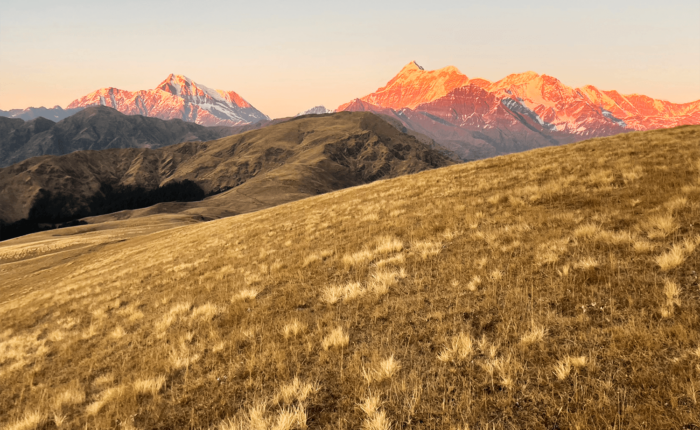
Ali-Bedni Bugyal Trek
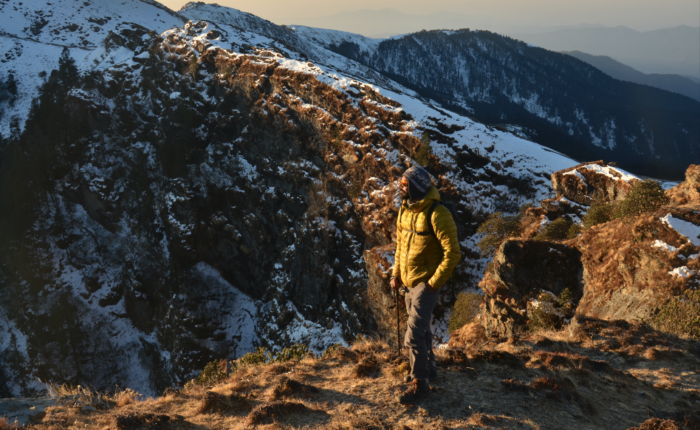
Brahmatal Trek

Send Your Query

MARKHA VALLEY
16000/- --> markha valley.
Region: Leh,Ladakh, (J&K) Duration: 9 DAYS/8NIGHTS Level: Moderate Distance: 40kms Trek Altitude: 17,060 ft Pickup Point: Leh Drop Point: Leh Best Season: May to October
Brief ITINERARY
Day-1 Delhi – Leh:Complete rest for Acclimatization for the Markha Valley Trek. Day-2 Drive from Leh to Spituk and trek to Zingchan Village Day-3 Trek from Zingchen to Ganda La Base Day-4 Trek from Ganda La base to Skiu via Ganda La Day-5 Skyu to Markha Day-6 Markha to Thochuntse . Day-7 Thochuntse to Nimaling . Day-8 Nimaling to Shang Sumdo and drive to Leh . Day-9 Fly from Leh to Delhi .
ABOUT THE DESTINATION:
Costs includes.
Accommodation –Camping during the trek & in Leh guest house/Dormitory (Day 1,& Day 8 Night) Meals while on trek (Veg.) Tents, Sleeping bags, sleeping mattress, kitchen tent, dinning tent, toilet tents Safety Equipment Trek equipments. Permits & Fees for Indian Nationals First aid medical kits and oxygen cylinder. Qualified & experienced trek Leader, Guide ,cook and Support staff to help trekkers.**Common gears is carried by porters and staffers. Transport during trek as per itinerary.
COSTS EXCLUDES
Food / Meal in Leh. Any kind of personal expenses Insurance. Mules or porter to carry personal luggage. **Personal Backpack- Normally TTH expect to carry your personal luggage on your own, if you don’t want to carry your backpack so you can give it to porter/Mules, but you have to inform us in advance and have to pay Rs. 700/- extra per day per bag. The backpack weight cannot more than 10 kg. Mineral Water & other Beverages Tips & Gratuity Anything not included under the head “COST INCLUDES”. Buffer Day Any Kind Of Expenses For Loss / Misplaced / Theft On Personal Belongings Cost Incidental To Any Change In The Itinerary- Stay On Account Of Train , Flight Cancellation / Ill Health / Road Blocks And / Or Any Factors Beyond Control.
How to Reach
Jet Airways, Go Air and Air India provide daily (once every day) flight service between New Delhi and Leh. In the summer season, the services may even be provided twice a day. However if you plan a trip to this area of the country, you must try to book your tickets well in advance. This might even cut down the prices which may be levied on booking at the last time. You would enjoy the flight as you would fly over many untouched areas and even some mountain ranges. The aerial view is just fascinating and gives a great start to your tour.
The road from Manali to Leh is only open in the summers. The road trip may take you 2 days, but depending upon the weather conditions, the travel may also extend to 3 or even 4 days. You should also make sure that you carry at least two spare tires. A good advice would be to carry a sleeping bag with you well, as the bus may stop in the middle of nowhere for the overnight stay. Another route to Leh via Srinagar, also takes around two days. On this route, you would pass through some lonely yet famous villages like Kargil and Khalsi.
Himveer Tour & Trek GUIDELINES
Do’s and don’ts on a trek.
1.Alcohols or any other intoxicating products "STRICTLY PROHIBHITED" during the trek. 2.Always pay heed to the trek guides or instructors. 3.Try not to leave the group under any circumstances. 4.Avoid trekking during the nights as it is extremely dangerous. 5.Avoid using earphones as that might hinder your hearing. 6.Do not participate or encourage littering of the places in any form. 7.While visiting the local villages and tourist sites, obey the local guidelines and instructions. 8.Do not harm or interrupt the local sentiments of the places.
Your safety is of paramount concern while travelling with Himveer Tour & Trek. Please note that your leader has the authority to amend or cancel any part of the itinerary if it is deemed necessary due to safety concerns. Since adventure entails travelling in remote mountainous regions, we cannot guarantee that we will not deviate from it. Weather conditions, health condition of a group member, unexpected natural disasters, etc., can all contribute to changes in the itinerary. The leader will try to ensure that the trip runs according to plan, but please be prepared to be flexible if required
Fixed Departure
Himveer tour & trek importants links, himveer tour & trek basic trek gear checklist for client.
A) A good quality rubber sole with mid sole and ankle support (Medium or high ankle) shoe. Click here
Himveer Tour & Trek Medical Form For Thr Client
Himveer Tour & Trek treks organised by SHRIDHANT EXPEDITIONS (OPC) PVT LTD. take place in some remote and less-developed regions, without means of rapid evacuation, Click here
Frequently asked questions(FAQs)
Here are answers to a list of generic questions which are asked to us on any treks. We have tried to answer most of them and this list of questions keeps growing with time. If you still have doubts, Contact Us us over phone or email to clear your doubts. We will be happy to help !!
Photo Gallery

Fixed Departure for Bali Pass - Ruin Sara
Holi Splash Sale: Save upto 20% on summer adventures!
Markha Valley Winter Trek
Available batches, brief description.
In the winter world of trekking, Markha Valley is an unconventional trek to explore. Not only is it ideal for people who want to experience the Chadar Trek without going on the Chadar Trek, but Markha Valley is also a winter wonderland with distinct topography and captivating sceneries that give you a total offbeat experience.
The millennial term for this marvel is Chadar 2.0. Almost half of the valley's landscape is covered with the frozen Markha river and the other half is composed of the dry and picturesque ranges of Ladakh.
Markha river is a tributary of the main Zanskar river. During winters, the river freezes, and the glistening white streams extend like frozen branches towards several quaint villages like Chilling, Skiu, Sara, Markha, and Hunkar. The humbling part of this 10-day trek is staying in cozy homestays immersed in the fascinating world of Ladakhi culture.
The winter ecosystem of this place comprises exotic vistas, extensive valleys, enriching culture, rare flora and fauna making it an ideal place for trekkers, travelers, and nature lovers alike.
This magnificent winter wonderland falls within the boundaries of the Hemis National Park. During the trek, if we are lucky, we will witness some exotic birds like the Eurasian magpie, whitecap redstart, and chukar partridge. Herds of Himalayan blue sheep cross our path every now and then. Keep your cameras ready to freeze the nimble sheep in your frame. The fascinating element of the frozen river is that you can slide, skate and even dance on it. It does not require any special gears to navigate it. Some of the other interesting elements here are the ancient monasteries, old wooden bridges, sharp brown peaks, and serene stupas. The main attraction here is the view of the mighty peaks Kang Yatse 1 (6,400M) and Kang Yatse 2 (6,250M). To get a comprehensive idea of the attractions of this place, check Highlights of the Markha Valley Winter Trek
The ideal time to do this trek is from January to March. Though the terrain and trails of Markha Valley are fairly easy with a moderate gradient, one has to walk for a distance of 10 km every day. For a beginner, this could be extremely strenuous. The main challenge here is facing sub-zero temperatures. During the daytime, it falls to -15 degrees and at night, it tends to drop further down to -25. In campsites like Hunkar, the winds amplify the chillness to -35 degrees. To understand the challenges of the trek and the nature of the trail, check Who is this trek meant for?
If you are a winter lover, then Markha Valley Winter Trek is the perfect match for you. Scroll down to get more information about the trek like itinerary, blogs, policies, etc.

Brief Itinerary
Detailed itinerary.
Arrive at Leh (3,500M)
Leh is the center for many popular treks like Stok Kangri, Kang Yatse, Spituk, Chadar, and Markha Valley. Once you reach Kushok Bakula Rimpochee airport, there are shared cabs outside to reach Leh market. You can find affordable homestays, hostels, and hotels there. The distance from the Airport to Leh market is 4 km and the fare for the cab is around INR 100. If you have opted for accommodation from Bikat Adventures, then the location for your accommodation will be shared with you before your arrival.
The first day is meant for rest. Being at an altitude of 3,500M, the oxygen level at Leh is much lower and the temperature by day is around -15 degrees which drops further to -20 by night. In the beginning, you might feel dizzy and find it hard to breathe. So instead of exerting your body, try to relax and rest.
Acclimatization at Leh (3,500M)
Day 2 plays a major role in making your body adapt to the high altitude and temperature. This day is specifically set to explore the local market and nearby hot spots within and around the city. A simple walk or hike can regulate your oxygen level and make it ready for the journey ahead.
Leh market area consists of several novel cafes, iconic restaurants, woolen shops, army general stores, and gift shops. The flea markets are the ideal spot to get some souvenirs and authentic Ladakhi merchandise. If you opt for sightseeing then you can visit the Leh palace and the monastery right next to the market.
Leh (3,500M) to Chilling (3,400M) to Skiu (3,400M)
Distance : 60 km to Chilling + 5 km to Skiu
Duration : 2 hour drive + 3 hour trek
Drive to Chilling
The trail to Markha Valley trek begins from Chilling village. Around 9 AM, a camper or a cab is ready near Pologround to pick us up from our accommodation. The drive from Leh to Chilling is a pleasant one with astounding scenery. It is about 60 km and takes close to 2 hours to reach by road.
A few minutes into the drive, we come out of the market area and enter the highway. The highway holds panoramic views of the crystal white Stok Range on the left-hand side of the road and stunning views of cityscape on the right. As soon as the views fade, we gain elevation and arrive at our first pit stop, the Magnetic Hill. The road from the magnetic hill joins the beautiful Sangam – the confluence points of Zanskar and Indus rivers. Sangam is our second pit stop. We wait at Sangam for a few minutes and then resume our journey. The road from the Sangam point turns right and joins Chilling through a big iron bridge. As soon as we enter Chilling valley, we enter the territory of Hemis National Park.
After a drive of 10 more minutes through sharp bends inside the Chilling village, we stop at the starting point of the trail.
Chilling to Skiu
The trail from Chilling to Skiu is flat without any ascents or descents. For the first two kilometers, we walk alongside the lush farmlands of Chilling. Look to your right and you will notice the tall poplar trees arranged in a fence-like fashion to guard the crops against yaks and horses. Once we cover a distance of 5 km (roughly 3 hours), the track narrows down to open into an expanse with sweeping views of the Ladakh range. That is Skiu, our campsite for the day.
Skiu (3,500M) to Sara (3,500M)
Distance : 10 km
Duration : 6 hours
The gradient for today is easy with minor ascents and descents. There are plenty of water sources throughout the day. For the first 2 km, we walk on well-paved pathways made by the villagers. There are puddles of frozen water all along the trail. Keep your eyes peeled for some exotic Himalayan birds like the Eurasian magpie and white cap red star along the trail. When you come across areas with dense shrubs and vegetation, look out for the nimble blue sheep. They are experts in climbing steep and inclined surfaces. When the tracks get wider, and a vast horizon emerges, we would have crossed a distance of 5 km in 2 hours. This is when we spot an age-old wooden bridge that takes us to the other side of the stream.
The trails from the bridge expand into a boundless area as we walk on dried-up grey sand and colorful pebbles of the Markha river. This stretch continues for another 4 km and leads us towards Sara village. The skeleton structures onhandmade wooden houses are a fascinating feature to look out for as soon as we enter Sara. As we walk past the houses and cover a distance of 1 km, we find an open area with a view of the Markha range. This is our campsite.
Sara (3,500M) to Markha (3,700M)
Duration : 6-7 hours
Today we leave the campsite at around 9 AM. About 2 km into the boulder-covered trails, we come across the calming Mani walls which are small, spiritual structures built by stacking up holy stones with prayers written on each one. Locals believe that people have to cross the tomb on the right-hand side for good luck. We continue to walk and ascend for another 2 km and enter into the quaint little village of Chalak, a barely populated settlement with small houses and half-built structures.
As we gradually descend from Chalak, the nature of the trail becomes fun. We walk on a huge section of the frozen river. The ice stretch spans over a distance of 4 km and directly leads us to the Markha bridge. The bridge is connected to a flattrail that leads us to Markha village. Markha village is one of the iconic spots of the valley. It has a lot of cultural significance and is rich in spiritual tales from the past. If you get some extra time, do interact with the villagers to learn more about their culture and the way they live. About 500 meters into the village, is our campsite for the day.
In Markha village, the temperature drops to -25 to -30 degrees at night because of strong downhill winds. A 4 type layering is required to keep warm.
Markha (3,700M) to Lower Hunkar (4,000M)
Duration : 7 Hours
We start trekking at 9 AM. The path towards Hunkar is a bit rougher and wider as compared to the other days. Though the gradient is flat, seventy percent of the trail is covered with rocks and boulders which add to the complexity of the trek today.
In the initial 2 km of the journey, we walk through a desolate landscape which bears a strong resemblance to the Wild West films of Hollywood. If you look carefully, you see the shades of brown smeared across the body of huge mountains. When the wide trails narrow down and gain elevation, we begin to see the sacred flags of the Tacha monastery.
The trail from Tacha is completely engulfed by the small golden-brown peaks of the Markha range on both sides. Most of the peaks have a sharp pointed top connected to other mountains. Together they create a colossal spike range. As we progress through the valley, we get our first glimpse of both Kang Yatse 1 and Kang Yatse 2 peaks. They stay with us for a few hours until the valley gets wider and the trails land on a frozen section after 7 km. The joy of walking on the frozen section has a way of absorbing all the pain and stress from the strenuous trek up until now. This ice stretch continues for 2 km. All we have to do is slide our way to the entry point of lower Hunkar village.
According to the winter route map, Hunkar is the last village where we stay for the night. The lower portion of the village with a few stone houses is called lower Hunkar and the higher ground with a monastery is named upper Hunkar. We set our camps or settle in a homestay at lower Hunkar.
Lower Hunkar (4,000M) to Upper Hunkar (4,050M) to Markha (3,700M)
Distance : 2 km (to Upper Hunkar) + 12 km (to Markha village)
Duration : 1 Hour (to Upper Hunkar) + 6 hours (to Markha)
Today is the main day of the trek. The gradient of the trail is moderate with steep ascents for 2 km and easy with a flat trail of 10 km afterwards. We start trekking at 7 AM towards upper Hunkar. The path from lower Hunkar to upper Hunkar is a short fascinating 40-degree ascent. After a strenuous hike of 30-40 minutes, we finally arrive at the vantage point and get a panoramic view of the magnificent peaks Kang Yatse 1 and a subtle hint of Kang Yatse 2 behind it.
Post a successful summit, we head back directly to Markha village and settle in for the day.
Markha (3,700M) to Sara (3,500M)
Today we retrace our way back to the campsite at Sara.
Sara to Leh (3,500M) via Skiu (3,400M) & Chilling (3,400M)
Distance : 14-15 Km
Duration : 7-8 Hours
Today is the last day of the trek; we head back to Chilling through Skiu. A vehicle waits at Chilling to pick us up and drop us back to our hotel in Leh.
Departure from Leh
You can check out of the hotel at 10 AM and start your return journey. If you plan to stay for a few more days and explore the wonders of Ladakh, then this article will help you start off on what places to consider – Places that you must visit in Leh Ladakh.
What's Included
- Camping/Homestay during the trek
- Trek Meals (Starting Lunch on Day 3 till Breakfast on Day 9)
- Gaiter, Micro-spikes, and Helmet as required
- Trek Permissions Fee, if any (Upto the amount charged for Indian nationals)
- First aid medical kit including oxygen cylinder
- Experienced Guide and Support staff
- Transport from Leh to Road head and return
- Hotel/Guest House Stays in Leh (Day 1,2 & 9)
- Mountaineering course certified Trek Leader with First Aid certification
What's Not Included
- Meals in Leh
- Meals during road Journeys
- Any kind of personal expenses
- Any kind of Insurance
- Mules or porter to carry personal luggage
- Anything not specifically mentioned under the head Inclusions
- Inner Line Permit Fee
- Altoa & Environmental / Wildlife Permit Fee. Approx Charge 6k to 8k to be paid on the spot to the authorities
Are you Eligible for this Adventure?
Max Altitude

BRS Level Required
Markha Valley Winter Trek is a level 4 adventure on the Bikat Rating Scale.
Packing List
Frequently asked questions, eligibility, is this adventure good for me, what’s a good fitness benchmark for this adventure, what skills do i need to complete this adventure, what is the minimum and maximum age limit, about the activity, where is it located, what are some of its highlights, what are some of its challenges, what is the best season for this, what is the accommodation type, what is the temperature like here, is it technically challenging, connectivity, how do i reach the starting point, is there cellular network available throughout, where is the nearest atm, if i choose to travel to the base with you, what is the pick-up point, what time is the drop-off on the last day, what are the nearby attractions that i can explore, equipment & gear, what equipment is provided to us, what can i rent from you, where will i receive the rented items, where do i have to return the rented items, what gear do i need to bring, are there local shops to rent/buy equipment, facilities & additional services, can i offload my bag, can i leave any extra luggage i carry at the base of this adventure, what are the meals like, what are the washroom/ toilet facilities like, what should i do if i get my period on this adventure, what are the medical facilities available to me on this adventure, are there any electricity charging points on this adventure, mandatory documents, what documents do i need to carry, do i need insurance for this, do i need a permit for this, certification, do you provide a certificate of completion, when and how will i get the certificate of completion, international travel, will i need a visa, when should i apply for the visa, what kinds of insurance do i need to travel here, what is the specialty of this when compared to other mountain ranges, till which month can i make a booking for this, what is the qualification of the outdoor leader provided to us, how do you choose your outdoor leaders, is it safe for women, what is the ratio of outdoor leader to participants, what do you do in case of an emergency, what are the rescue options on this adventure, how do you choose your equipment, can i attempt this adventure if i have a specific medical condition, sustainability, what kind of camping do you practice on your outdoor adventures, why are you against fixed camping in the outdoors, how do you manage overcrowding on certain trails, what are some things to remember when using a dry toilet, why should i avoid wet wipes in the outdoors, where should i dispose of my sanitary waste if i am on my period, why should i carry my own utensils on an outdoor adventure, booking process, what happens after i make the payment, do you create a whatsapp group of participants before the start date of the activity, do i need to submit a medical certificate, do i need to submit an undertaking form.
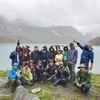
Small Group Size
Our batch sizes are capped at 15 for smaller treks with the trek leader and trekker ratio of 1:8. This ratio, in our years of experience, has proven to deliver the best trekking experience for individuals as well as groups. Capping the size of the group ensures individual attention to each trekker so that no signs of distress or need during the trek go unnoticed. It also helps to form a more cohesive cohort with better group energy which helps define the rhythm and pace of days on the trek. As you go higher up on the BRS scale, since the stakes are higher, expeditions have an even smaller group size with the ratio of expedition leader to climber set at 1:2.
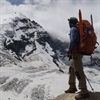
Qualified Trek Leaders
We follow a rigorous regime of hiring and training our experts in the field. Each trek leader is a certified mountaineer with years of experience in the field. In addition to their qualification, they also go through practical and situational training to tackle any and all kinds of sudden conditions that may present themselves on the ground. Being unpredictable is the core nature of the mountains but being ready for any circumstance as best as possible is a controllable asset that we try to nurture. Our field experts are also trained in basic medicine and first-aid response. Watch: Forerunners - The Making of A Trek Leader At Bikat Adventures
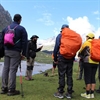
Guided Progression
Since Bikat Adventures is a learning-based organization, we help you climb up the ladder of difficulty within the sphere of outdoor adventure systematically. Our on-ground training modules are designed to handhold you through the upskilling process so that you are ready to take on bigger challenges.
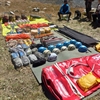
Equipment Quality and Check
All the gear used on our treks and expeditions is tried and tested, maintained for good quality, and is overall top-notch in quality and condition. We are continually looking to obtain the best of everything there is in the market so as to ensure optimum safety.
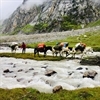
Support Systems
Along with the staff you see on-ground, we have a team of superheroes working in the background to give you the best experience possible. Our background team also comprises local staff from each area who know the region best. Having local support helps with studying the area, pre-planning, execution, and in receiving timely support in case of emergencies in these remote locations.
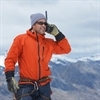
Communication
Our on-field staff is in constant contact with our teams based in primary locations so as to eliminate any avoidable delay in reaching additional help and support when required. We try to use the best tools for communication available, including satellite phones, in regions where they are not restricted.
What our customers Say

Cancellation Policy
Cash refund
Cancellations up to 30 days prior to departure date
5% deduction
Cancellations between 30 days to 15 days prior to departure date
50% deduction
Cancellations within 15 days prior to departure date
Voucher refund
Cancellations up to 5 days prior to departure date
No Deduction
Cancellations within 5 days prior to departure date
- Cash refund is applicable only in case of bookings made without using any promotional offer code or vouchers
- This is only a brief of cancellation terms. For finer details please refer Detailed Cancellation Policy.
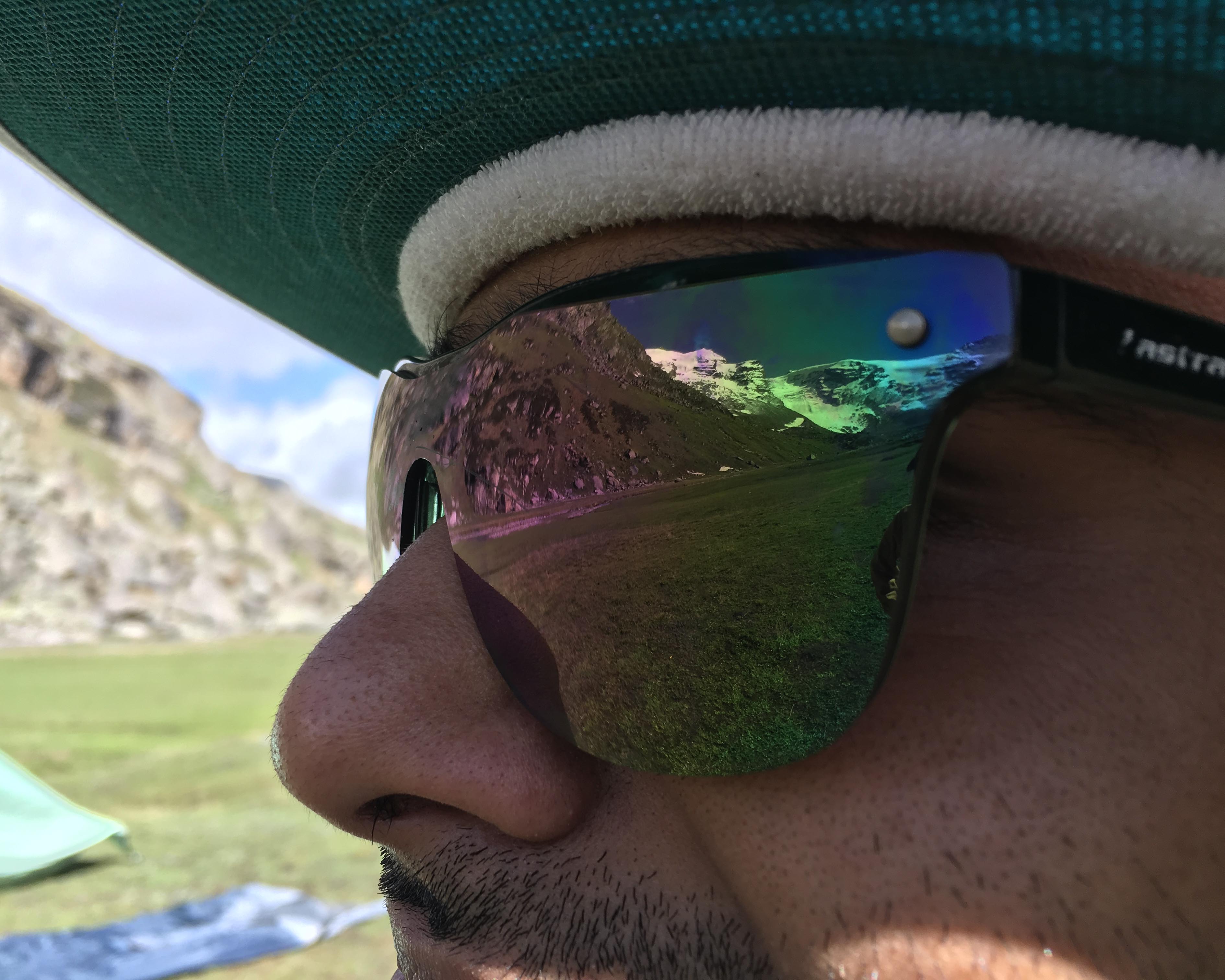
Subscribe for latest updates & offers
Similar adventures, enter your email, events by categories.

Mountaineering

Scuba Diving
Events by months.
- January July
- February August
- March September
- April October
- May November
- June December
Events By Nights
- 5 & More Night
- Environmental Policy
- Privacy Policy
- Term & Conditions
- Work With Us
- Address: 303, 3rd Floor, Tower B4, Spaze Itech Park, Sector 49. Gurgaon
- Pre Sale - 8448680062 , Post Sale - 8588878499, 9667639126
Bikat Adventures
- Cancellation & Refunds
- Content Sharing
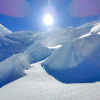
© 2024 Bikat Adventures - All Rights Reserved
Powered by: novel knett software solutions, submit enquiry.
India is a hiker's dream destination: Here are 12 of its most epic trails
When planning a trip to India, the 'Golden Triangle' comprising Delhi, Jaipur and Agra often comes to mind as a must-see region. And these historic destinations do indeed provide a classic introduction to the country.
However, India boasts an array of natural wonders that provide ample opportunities for the more active traveller to get out and explore.
The terrain encountered during a hiking odyssey in subcontinent-sized India is as diverse as the cultural fabric that weaves this extraordinary nation together.
Here, one can encounter towering peaks of the formidable Himalayas and undulating plains that whisper tales of ancient civilization in the northern region. Towards the southern reaches, the forest-cloaked Western Ghats mountain range abounds with vibrant flora and fauna.
More from Newshub
Numerous local guides and trekking agencies are on hand to help you conquer these trails. Check out the Indian Mountaineering Foundation for a list of the country's registered tour agencies.
If it's inspiration you're after, here's a rundown of 12 of the most epic hikes in India, ranging from quick, casual hikes to multi-day excursions.
Buran Ghati, Himachal Pradesh
- Distance: 37km
- Time: 7 days
Suitable for all levels, the Buran Ghati trek begins from the ancient hamlet of Janglik, about a five-hour drive from Shimla, the former summer capital during British colonial rule.
The terrain is never boring, as you pass through deep forest onto wide green meadows and across gurgling brooks under the shadow of snow-covered peaks, en route from the Daraya campsite to the Dunda campsite, enjoying views of glacial lakes like Chandranahan along the way.
Hikers will need to be well-acclimatized as the trail crosses a 4572m pass on day five.
The true adventure lies in the descent from the pass on the other side, leading to the verdant Barau village, marking the culmination of this remarkable odyssey.
During summer (mid-May to June), a thrilling rappel of about 400m down a steep ice wall awaits, while in autumn (mid-September to mid-October), a steep descent amid rugged boulders provides an exhilarating experience.
Dzükou Valley, Nagaland
- Distance: 9km
- Time: 1 day
Straddling the borders of Manipur and Nagaland in the northeastern part of the country, Dzükou Valley is a giant green carpet that annually erupts into a riot of wildflowers, including the rare pink Dzukou Lily, which is only found here.
July is peak flower season, but the valley is gorgeous all summer.
There are two routes – most hikers start from Viswema Village, about 22km south of Nagaland's capital city Kohima, while the trailhead at Zakhama Village, about 18km from Kohima, is shorter but the ascent is sharper.
The path climbs up rough-hewn stone steps and through a mix of chestnut, juniper, and oak thick forest, to reach the crest of the valley at 2452m above sea level, where a riveting panorama unfolds.
It is possible to stay in the guesthouse run by the Southern Angami Youth Association (SAYO) in the valley, but the hike can also be completed as a day trip.
Indian nationals must acquire an Inner Line Permit (ILP) to visit Nagaland, while foreign visitors must register themselves at the local Foreigner Registration Office (FRO) within 24 hours of arrival.
Great Lakes Trek, Indian-administered Kashmir
- Distance: 63km
- Time: 5 days
An absolute humdinger of a route, this trek takes in three high passes of the Himalayas and seven glacier-fed lakes.
Accessible from July through to September, the trail starts in the small hamlet of Shitkadi near Sonamarg, 80km northeast of the city of Srinagar and takes you over alpine meadows and grasslands before ending in the village of Naranag.
On day five comes the real treat – spectacular views of the biggest of the Satsar Lakes and the twin lakes of Gangabal and Nundkol.
While the hike isn't particularly strenuous, you'll need to spend a couple of days acclimatizing in Sonamarg beforehand to prepare yourself for the altitude of 4200m.
Trek Kashmir, a local travel agency, can arrange meals, camping equipment and transfers to and from Srinagar.
Goechala Trek, Sikkim
- Distance: 73km
- Time: 8 days
If you're up for a challenge and view that ranks among India's most sublime, consider this trek in West Sikkim.
The hike can be steep and tough, with 3048m of elevation gain and three suspension bridges over deep gorges to negotiate.
What really lodges this hike in your memory is the view of Kangchenjunga, the world's third-highest peak, from Dzongri Top at 4167m.
The route also cuts through Khangchendzonga National Park, revered by the local Lepcha tribe.
Big wildlife rules here: red pandas, blue sheep, elusive snow leopards and blood pheasants can be found on this trail.
Starting and finishing in Yuksom Village, the trail is best hiked clockwise to acclimatize for the challenging ascents towards the end.
Numerous campsites and huts are spread along the trail, best completed during spring and fall months, i.e. April to May and September to November.
Markha Valley, Ladakh
- Distance: 65km
- Time: 6 days
Whisking you through wild landscapes within Hemis National Park, situated in the eastern region of Ladakh, the hugely popular Markha Valley epitomizes the extraordinary beauty of Indian nature.
The trail begins in the village of Chilling, about 66km from Ladakhi capital Leh and ends at Shang Sumdo, swinging from gentle to moderate in difficulty as the terrain changes.
There are barley fields and thickets to traverse, hanging bridges to cross and rocky canyons to negotiate.
Crossing the icy waters of Markha River (a tributary of the mighty Zanskar River), seeing the ancient Buddhist monasteries and 6400m Kang Yatse and 6153m Stok Kangri peaks, and climbing up to the 5200m Kongmaru La Pass are moments you'll rave about for the rest of your life.
There's some wonderful wildlife too – blue sheep, Asiatic ibex, Himalayan marmot, Ladakhi urial and the endangered Eurasian brown bear all hang out in the park. Snow leopards make a rare appearance only during the winter months.
Nights spent camping under starlit skies or indulging in a warm meal at a village homestay along the way.
Acclimatize in Leh before embarking on this trek. July to September is the optimum period for hiking here.
Valley of Flowers, Uttarakhand
- Distance: 8km round trip
- Time: 7 hours
A spectacular carpet of rare and exotic wildflowers is the trademark landscape on this dreamy hike, best tackled during the monsoon season (July to September).
There are a variety of trek distances available, but one of the most popular and shortest options begins and ends in Ghangaria, a popular base camp for visitors wanting to visit the valley.
Stay the night here for an early start in the valley, which opens its gates at 7am, with trekkers being granted entry until 2pm.
Ascending and descending inclines while crossing the Pushpawati River, the route finally reaches the UNESCO World Heritage-listed Valley of Flowers, bedecked with over 500 species of flowers against a backdrop of glaciated mountains.
This protected area also serves as a habitat for Asiatic black bears, blue sheep and snow leopards, albeit sightings are rare.
As one of the most popular hikes in India, you won't be alone, so there's no need for a guide here.
Kudremukh Trek, Karnataka
- Distance: 18km
- Time: 4 hours
Nestled in the heart of Chikkamagaluru district in India's Western Ghats, the 1894m Kudremukh Peak is the third tallest summit in Karnataka state.
It's an easy day hike to reach the summit, traversing through shola (virgin forest), small streams and rolling green hills.
Keep an eye out for endemic wildflowers and the occasional lion-tailed macaque, langur or Malabar giant squirrel.
Most hikers base themselves in the village of Mullodi, where one can purchase the requisite entry permit from the local forest office.
It pays to get an early start as trekking after 6 p.m. is prohibited, and only 50 hiking permits are issued per day.
It's best to hike the trail during post-monsoon and winter months – September to February.
Namdapha Rainforest Trek, Arunachal Pradesh
- Distance: 45km
For intrepid adventurers, exploring the rainforest wonderland that is Namdapha on foot is the epitome of off-the-beaten-path hiking.
Located in the eastern Himalayas, this out-and-back trek starts from Deban, a rough 26km drive from the petite town of Miao, where permits are issued at the Field Direction's Office.
The trail crosses varying landscapes – small rivers, patches of forest and grassland and a short bit of gravelly terrain.
Birdwatchers will find themselves captivated by the five species of hornbills and other avian species found along the way.
The forest is also home to mammals such as the clouded leopard and Bengal tiger, though sightings are rare. Mischievous red pandas and gibbons can occasionally be spotted amidst the foliage as well.
Although lodging is available at the Forest Rest House in Deban, to make the absolute most of the path and visit the local tribes like Lisu and Tangsa who have inhabited the region for centuries it's best to book the trek through a registered local tour operator.
The best time to hike here is mid-September to April.
Chembra Peak, Kerala
- Distance: 4km
- Time: 3 hours
The area around the mountainous Wayanad region in northeast Kerala, stretching along the Western Ghats, is home to several scenic walks.
A favorite among those looking for a tranquil and easy-to-moderate hike is Chembra Peak, perched at an elevation of 2100m above sea level.
The trail starts from the watchtower near the Chembra Peak VSS Forest Office – a short drive from the quaint hamlet of Meppadi – and winds its way through emerald tea plantations and wild grasslands.
While reaching the summit is prohibited, visitors can climb up to the heart-shaped lake, known locally as Hridaya Thadakam or Hridaya Saras, near the peak.
Best tackled between November and February, the trail is open from 7am to 5pm and entry is limited to 200 hikers per day. Secure the permit from the forest office before 2pm.
Chatakpur-Tiger Hill, West Bengal
- Distance: 14km
- Time: 6 hours
A three-hour drive from Siliguri, Tiger Hill is a popular weekend destination for city dwellers so go during the week to avoid the crowds.
The trail to the summit of Tiger Hill starts in the town of Sonada in India's Darjeeling district, passing through organic farmlands and orchards before reaching Chatakpur Village.
After overnighting there, continue uphill towards the watchtower, a mere 10 minutes from the village.
From the tower, the path leads to an enthralling expanse of Senchal Wildlife Sanctuary, home to a diverse array of Himalayan wildlife like black bears, barking deer and macaques, plus avian species like Blue Magpies and Old World Flycatchers.
The final leg involves an ascent to a creek, offering vistas of Tiger Hill's green terraces.
At the summit, enjoy stunning panoramas of Darjeeling town below. And if the weather is clear, you can get magnificent views of the Kanchenjunga ranges.
Walk the route from October to April, when the weather is pleasant.
Hampta Pass, Himachal Pradesh
- Distance: 25km
Forging a path between the verdant Kullu Valley and the barren, high-altitude deserts of Lahaul and Spiti, Hampta Pass – standing at 4270m above sea level – delivers one stunning vista after another as it strides from Jobra, about two hours northeast of the hill resort of Manali, to Chhatru Settlement via wildflower-flecked Jwara Valley.
Highlights are many but you'll never forget clapping eyes on the snow-capped peaks of Deo Tibba (6001m) and Mount Indrasan (6221m) from the top of Hampta Pass on day four.
Trekkers can camp en route at designated sites like Chika, Balu Ka Ghera and Shea Goru.
If you'd like to add a little extra adventure, continue north from Chhatru, the end-point of the Hampta Pass trek, to Spiti's east-west highway and embark on a two-hour drive to the captivating Chandra Tal ('Moon Lake'), perched at 4250m above sea level.
Weather permitting, Hampta Pass is open to hikers from June to September.
Himalayan Yeti Adventure and Himalayan Caravan Adventure can take care of the logistics.
Nongriat Trek, Meghalaya
- Distance: 7km round trip
One of India's most stirring natural wonders is the Living Root Bridges, crafted by indigenous Khasi villagers out of Indian rubber tree roots.
Over 100 of these humble river crossings are found in the Meghalaya hills, with a notable concentration in the jungle-laden Nongriat Village.
Accessible from Tyrna village, 12km southwest of Cherrapunji – one of the wettest places in the world – the hike begins with a descent of more than 3000 stone steps before venturing into the dense rainforest, which is alive with butterflies and insects. The finale is the centuries-old double-decker living root bridge.
Logistics are easy for the Nongriat hike - there are many drink and snack stalls en route.
While guides are not obligatory, they'll help you get acquainted with the local communities.
Hike between April to June, as the weather is comfortably warm. But do bring a rain jacket and sturdy, waterproof shoes, as conditions can change at the drop of a hat.

Russia Travel Blog | All about Russia in English
- About our blog
- RussiaTrek.org
Sidebar →
- Architecture
- Entertainment
- RussiaTrek.org News

- Send us a tip with a message
- Support RussiaTrek.org
- Travel Guide to Ukraine
- Comments RSS
← Sidebar
The trains and stations of the Moscow Metro
2 Comments · Posted by Alex Smirnov in Cities , Travel , Video
The Moscow Metro is the third most intensive subway system in the world after Tokyo and Seoul subways. The first line was opened on May 15, 1935. Since 1955, the metro has the name of V.I. Lenin.
The system consists of 12 lines with a total length of 305.7 km. Forty four stations are recognized cultural heritage. The largest passenger traffic is in rush hours from 8:00 to 9:00 and from 18:00 to 19:00.
Cellular communication is available on most of the stations of the Moscow Metro. In March 2012, a free Wi-Fi appeared in the Circle Line train. The Moscow Metro is open to passengers from 5:20 to 01:00. The average interval between trains is 2.5 minutes.
The fare is paid by using contactless tickets and contactless smart cards, the passes to the stations are controlled by automatic turnstiles. Ticket offices and ticket vending machines can be found in station vestibules.
Tags: Moscow city
You might also like:

The bridge over Zolotoy Rog Bay in Vladivostok
The views of St. Petersburg from the TV tower >>
Tomás · August 27, 2012 at 11:34 pm
The Moscow metro stations are the best That I know, cars do not.
Alberto Calvo · September 25, 2016 at 8:57 pm
Great videos! Moscow Metro is just spectacular. I actually visited Moscow myself quite recently and wrote a post about my top 7 stations, please check it out and let me know what you think! :)
http://www.arwtravels.com/blog/moscow-metro-top-7-stations-you-cant-miss
Leave a Reply
XHTML: You can use these tags: <a href="" title=""> <abbr title=""> <acronym title=""> <b> <blockquote cite=""> <cite> <code> <del datetime=""> <em> <i> <q cite=""> <s> <strike> <strong>
- February 2024
- January 2024
- December 2023
- November 2023
- October 2023
- September 2023
- August 2023

IMAGES
VIDEO
COMMENTS
Markha Valley Trek - The complete guide to the adventurous river valley trek in Kashmir. Find out all the details here. ... Distance: 60 km drive, 7 km trek. Duration: 2 hours drive, 2-3 hours trek. Chilling is the point where Markha river drains into the mighty Zanskar river. It is also the nearest road head for starting the trek.
Yaks grazing on green plains at an altitude of 5,000m, white snow-covered peaks higher than 6,000m, extensive valleys surrounded by huge, rocky mountains and a strong Tibetan culture with deep roots: the Markha Valley trek is the perfect hike for those seeking both stunning Himalayan landscapes and experience real Tibetan culture.. Markha Valley is one of the most popular treks in Ladakh, but ...
The Markha Valley trek takes around 6-7 days to complete, starting in Leh. Depending on the exact start and end point, the Markha Valley hike is approximately 50 miles (80 kilometres) in distance. Total elevation gain / loss is about 2500m / m, with a max elevation of 5260m.
About the Markha Valley Trek. Distance: 68km Time: 4-5 days Difficulty: Medium-Hard Highest point: Kongmaru Pass at 5250m Accommodation: Homestays and camping available The Markha Valley trek follows the Markha Valley River from Chilling up to Kongmaru Pass and down to Shang Sumdo, near Hemis National Park.
NOTE: Markha Valley Trek is of 7 days and the highest altitude is of 17,100 ft. If you are looking for more challenging adventure in Leh try out the Twin Peaks Expedition. You can go for either Kang Yatse II or Dzo Jongo Peak as well. Markha Valley trek begins from Leh. Arrive in Leh by flight or train. Take it slowly once you arrive in Leh.
Markha Valley is located between the Zanskar and Leh region of Ladakh in Jammu and Kashmir. This valley runs parallel to the Himalayan range and is located at a short distance from Leh. Markha Valley trek has captivating, wild and barren landscapes and therefore, it is often called Little Tibet. Strategically located, the valley offers the ...
The distance of the Markha Valley trek is around 65km. The distance of each day is different with some days short and some days long. The longest day of the Markha Valley trek is from Skiu to Markha. This is a long tiring day. The shortest duration day is the last day which is about 5kms of the trek. What is the best time to do the Markha ...
Some quick facts about the Markha Valley trek: Duration: 8 days (6 days of trekking) Maximum altitude: 5260m. Difficulty level: Moderate. Total distance: Approx. 50km. Commences at: Leh. Ends at: Leh. Recommended age group: 12 years and above.
Mesmerizing Markha Valley Trek with TrekNomads. Traverse through picturesque landscapes, quaint villages, and high mountain passes, while immersing in the unique culture of Ladakh. ... As the evening descends, find yourself amidst the welcoming embrace of Markha village. Trek distance: Approximately 20 kilometres. Time required: 6 - 7 hours. ...
Distance - 64 KM. Markha Valley Trek. Markha Valley trek is a wonderful introductory trip to the remote and magical Buddhist kingdom of Ladakh. The trek takes one into the most hinterlands of cold deserts of India. Markha valley trek is also called as the 'Tea house Trek'. These tea houses will keep popping up on the trek and will help ...
The Markha valley trek is often done in 6 days, from Chilling to Hemis. This trek itinerary covers a distance of 78 km and 2500m of elevation gain. It crosses one high-altitude pass. The duration of 6 days is the total duration from Leh to Leh, including transport to the start point and from the end point of the trek.
Markha Valley Trek is not technically challenging but is a physically strenuous trek, especially for beginners. The trek involves steep ascents and descents, rocky and uneven terrain, and high altitude, which can make it physically demanding. ... Total Distance: 60 KMS (but it sorta feels like 120 kms) Number of days: 7 What to expect: a wildly ...
The Markha Valley Trek of the pictorial and ever-popular Leh-Ladakh promises to be one such an indelible experience. ... Day 5: Sara to Markha (3700m) Distance: 11 km; Duration: 4-5 hours; Day 5 is a long day of flat trekking, river crossing, and green valleys. The Markha River Trek is renowned for its rugged barren beauty but this day offers ...
Key Points Markha Valley Trek. Duration: - 7 Nights Days from Leh to Leh. Base camp: - Skiu base camp. Summer Temperature: - 10°C to 15°C and Night: 0°C to 7°C. Markha Valley- Altitude: - 5200m. Best Time: - May to June and September to October. Trek Level: - Moderate- Difficult. Trek distance: - 65km.
The Markha Valley trek goes inside the beautiful Hemis National Park and involves two pass crossings- Gandala La (15748 ft) and Kongmaru La (17,060 ft). Some exciting waist-deep river crossing sections on Markha River to trails going across interesting Buddhist villages and rocky canyons are some of the features that give this trek a unique fervor.
5. Kongmaru La. Image Credits: Pixabay. Kongmaru La is situated at an elevation of 5130 meters above sea level. It is also the highest point of the trek and offers spectacular views of the Kang Yatse Hill. This high-altitude pass connects Markha Valley with the Indus Valley.
Markha Valley trek starts from a place called Chilling. The distance between Chilling and Leh is around 60km and is covered in 2 hours. To begin the Markha Valley trek, one must first reach Leh, which is conveniently connected by air to major cities. You can fly directly to Leh or travel by road from Srinagar/Manali.
Distance: 40kms Trek Altitude: 17,060 ft Pickup Point: Leh Drop Point: Leh Best Season: May to October Brief ITINERARY. ... The Markha River is a river in Ladakh, India. It is a tributary of the Zanskar River. The Markha Valley is one of the most popular Trekking Routes in Ladakh, accessible from Ganda La pass near Spituk in the west, which is ...
Leh (3,500M) to Chilling (3,400M) to Skiu (3,400M) Distance: 60 km to Chilling + 5 km to Skiu. Duration: 2 hour drive + 3 hour trek. Drive to Chilling. The trail to Markha Valley trek begins from Chilling village. Around 9 AM, a camper or a cab is ready near Pologround to pick us up from our accommodation.
Goechala Trek, Sikkim Distance: 73 kilometers (45 miles) Time: 8 days ... Markha Valley, Ladakh Distance: 65 kilometers (40 miles) Time: 6 days
Goechala Trek, Sikkim. Distance: 73km; Time: 8 days; If you're up for a challenge and view that ranks among India's most sublime, consider this trek in West Sikkim. ... Markha Valley, Ladakh ...
The Moscow Metro is the third most intensive subway system in the world after Tokyo and Seoul subways. The first line was opened on May 15, 1935.
Distance facts. North pole: 2,363.71 mi (3,804.03 km) How far is Elektrostal' from the North Pole? Elektrostal' is located 2,363.71 mi (3,804.03 km) south of the North Pole. Equator: 3,854.69 mi (6,203.53 km) How far is Elektrostal' from the equator and on what hemisphere is it?
Worldwide distance calculator with air line, route planner, travel duration and flight distances. Distance Elektrostal → Moscow. Distance: 32.23 mi (51.87 km) Driving route: -- + + Distance from Elektrostal to Moscow #1 Elektrostal 55.784397,38.445415 городской ...
The 9th radio centre of Moscow was a high power shortwave and medium wave broadcasting facility at Elektrostal near Moscow.Its broadcasting frequency was 873 kHz with a transmission power of up to 1200 kilowatts. It was also used as radio jammer of "unwanted" stations.